REYKJAVÍK



Visit Iceland's wonder of the world

Scan code and book now






MD REYKJAVIK EHF.
Laugavegur 3, 101 Reykjavík +354 551 3600 | upplysingar@mdr.is | www.reykjavikcityguide.is
To order free copies of Reykjavík Guide, contact upplysingar@mdr.is
Authors have taken all reasonable care in preparing this handbook, information has been obtained from sources believed to be reliable, but make no guarantee about the accuracy or completeness of its content.
© MD Reykjavik ehf.
Material and contents property of publisher. All rights reserved. No part of this work covered by the copyright may be reproduced or used in any form or by any means-without the written permission of the authors and the publisher.
PUBLISHER:
Sigurþór Marteinn, sm@whatson.is
EDITOR: Sigurþór Marteinn, sm@whatson.is
LAYOUT & DESIGN: Líparít
AD SALES: Reynir Elís Þorvaldsson, reynir@whatson.is
PHOTOGRAPHS BY: Golli, Páll Stefánsson, sbs, Ian Funk, and many more.
MAPS: Friðrik Bjarnason
PRINTING: Printall AS
ReykjavíkKeflavíkÍsafjörðurEgilsstaðirAkureyri
Easy to stop — hard to leave Alicante
NarsarsuaqKulusukIlulissat
Nuuk
Baltimore
Boston
Chicago
DenverDetroit
Minneapolis
Halifax Pittsburgh
NewYorkOrlandoPortlandRaleigh-DurhamSeattleTorontoVancouverWashingtonD.C.

Zürich
AmsterdamBarcelonaBergenBerlinBillundBrusselsCopenhagen
Dublin
FaroeIslands
Frankfurt
GenevaGlasgow
Gran Canaria
Hamburg
Helsinki
Innsbruck
London
Madrid
VeronaTenerifeStockholmSalzburgRomePragueParisOsloNiceMunichMilanManchester
Stopover in Iceland at no additional airfare. Make the most of your trip by adding warm lagoons, mystical highlands, or lively nightlife to your journey.









Reykjavík may be one of the smallest capital cities in Europe, but it still packs a powerful punch. Visitors can enjoy a lively culture and a multitude of events and festivals all year round!
With a fascinating history rooted in the Icelandic sagas and a unique location surrounded by stunning natural beauty, Reykjavík manages to combine the hip and the wholesome, without the stress that usually follows a metropolis
Whether illuminated by unending daylight in the summertime or spectacular aurora borealis in winter, Reykjavík is a great travel destination for all seasons, offering a wealth of adventures and a paradise of possibilities for all who visit!
Reykjavík buzzes with creative energy and passion, and the culture is a melting pot of influences, from the very old to the very modern. Whether it’s the city’s unique spirit that enchants you, the crystal-clear drinking water, or the city’s proximity to a host of extraordinary natural phenomena – volcanoes, waterfalls, and glaciers – one thing’s for sure: once you’ve been introduced, it’s hard to say goodbye.
While Reykjavík’s small population ensures that it maintains its small-town charm, it’s still a modern European capital, with the added bonus of having a unique spa and pool culture. You’ll discover a thriving culinary scene, alongside a variety of interesting museums, theatres, galleries, and sports facilities. However long you stay, for a weekend or forever, we hope you’ll discover the unique energy of Reykjavík and share your adventures with your family and friends!


The Reykjavík Municipality was officially founded in 1786. At the time, the city comprised 167 inhabitants.
> Reykjavík was the first permanent settlement in Iceland, the homestead of settler Ingólfur Arnarson and his wife Hallveig Fróðadóttir. This earned Ingólfur the honour of a statue atop Arnarhóll hill.
> At the beginning of the 20th century, only about 6,000 people lived in Reykjavík. The 2022 census counts over 135,000, an increase of more than 2,000% over the course of a century.
> Reykjavík’s location, just south of the Arctic Circle, means that on the darkest day of the year, Reykjavík only gets four hours of sunlight. In summer, however, there’s sunlight all night long!
> There are seven geothermally heated swimming pools in Reykjavík proper and 18 in the larger capital area.
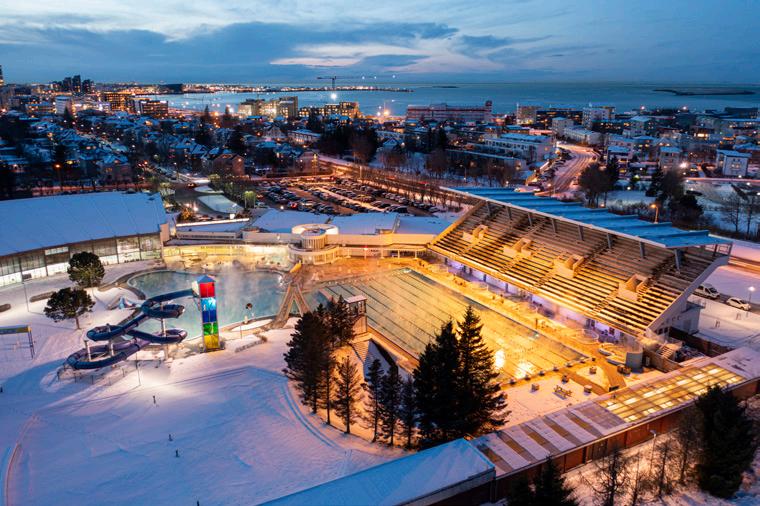
> Laugavegur, the city centre’s main shopping street, started out as a muddy trail for washerwomen carrying heavy loads of laundry to the hot springs in Laugardalur.
> In 2010, a comedian ran for mayor of Reykjavík. He promised to practice corruption openly, fight for a drug-free parliament, and called his party the Best Party. He won by a landslide.
> While Hallgrímskirkja church is Reykjavík’s tallest building at 74.5m, nearby municipality Kópavogur has the highest building in Iceland at 77.6m.
> Two-thirds of Icelanders live in Reykjavík or the surrounding suburbs.



Reykjavík is the world’s northernmost capital of an independent nation.














According to the Book of Icelanders, the settlement of Iceland began during the Viking Age in the year 871 (give or take a year or two) when Norse-speaking people from Norway and the North Atlantic islands appeared on Iceland’s shores. The first to arrive was reportedly Ingólfur Arnarson, who settled in what is now the capital, which he named Reykjavík or “Smokey Bay” because of the steam rising from the nearby hot springs.
This early period is well-documented in the Book of Settlements; however, if you’d like to find out more about why and how the Vikings came to Reykjavík, visit the National Museum and/or the Settlement Exhibition (for more information, check out our chapter on museums, p. 39-54).




Despite Reykjavík being the first inhabited place in Iceland, it wasn’t until the 18th century that a small town grew around Ingólfur’s former homestead. Local hero, Sheriff Skúli Magnússon, sometimes nicknamed the father of Reykjavík, opened wool mills in an effort to modernise the Icelandic economy. It was on the backs of sheep that Reykjavík began its modern urban development.
Even if a town was beginning to form, Reykjavík had no claim as a capital for some years yet, especially since Iceland was still ruled by Denmark at the time. The Icelandic Parliament, which can be dated back to 930 and originally met at Þingvellir, was suspended in 1799. When it was reinstituted in 1844, Reykjavík became the seat of the Icelandic legislature. When Iceland became independent from the Danes a century later in 1944, Reykjavík became the country’s capital. Growing steadily ever since, Reykjavík has become the modern city you know today.
At the turn of the 20th century, Reykjavík counted just over 6,000 inhabitants, even though it was the biggest town in Iceland.

The 20th century was a period of rapid urbanisation, and, as agriculture and fishing grew less important to the growing nation, many young people moved to Reykjavík (colloquially known as moving onto the gravel, meaning to the city). There was tension between the old, rural way of life and the city. City life, with all its temptations, was vilified as a corrupter of Iceland’s youth in art and literature. Tómas Guðmundsson (1901-1983) was the first poet to see the charming side of Reykjavík, writing poems describing the beauty of a spring evening in the city. He is fondly remembered by the people of Reykjavík and on a bench by lake Tjörnin sits a statue of the poet, deep in thought.
Fortunately, the past isn’t lost. Reykjavík offers some great museums that preserve its colourful history, recreating our Viking heritage and uncovering the lives of everyday Icelanders in years gone by. Discover the city’s history by taking a tour of the National Museum, the Settlement Exhibition, the Maritime Museum, or the Árbær Open Air Museum. You can also take a walk among Reykjavík’s historical sights.
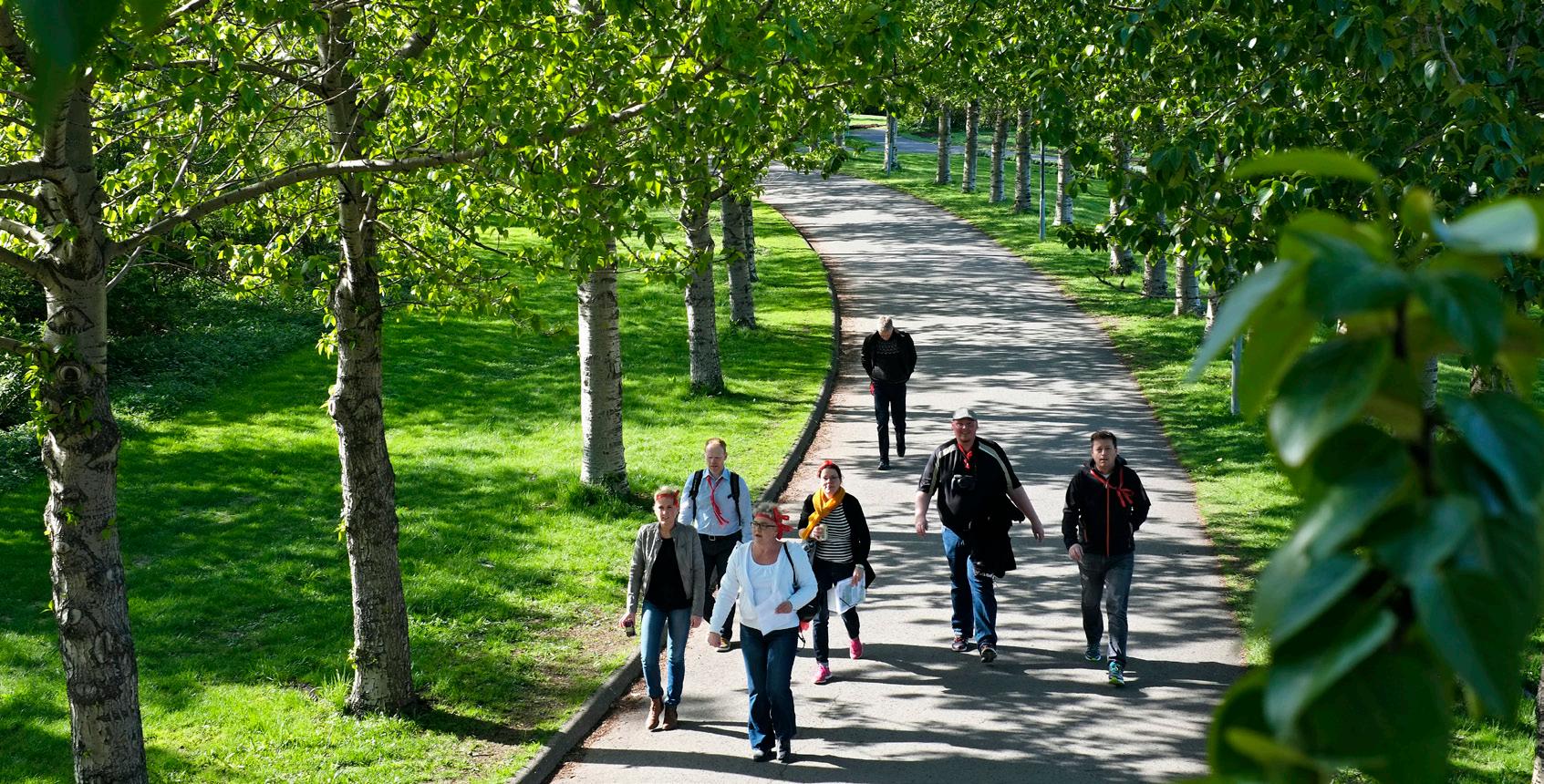
In the days of the midnight sun, Reykjavík becomes a city that never sleeps. Popular summertime activities include whale watching, sea angling, horseback riding, and trips to the many natural wonders just outside the city limits.
Perhaps one of the more remarkable summer destinations within Reykjavík City is the geothermal beach at Nauthólsvík, where you can spend the afternoon enjoying a picnic or swimming in a heated ocean lagoon. Sea swimmers can enjoy the cooler waters of the Atlantic and warm up afterwards in the sauna or the large hot tub on the beach.
One of the best things about Reykjavík is its abundance of exceptional coffeehouses, staffed with talented baristas. On a hot and sunny day, the thriving coffee culture often spills out onto the streets, particularly around Austurvöllur square, where a coffee-loving crowd can be found sipping coffee, hot or iced, while soaking up the sun.
Reykjavík hosts a plethora of music and cultural festivals over the summer, including but not limited to Reykjavík Culture Night, The Reykjavík Pride Festival, and Iceland’s National Day celebrations on June 17.

Reykjavík’s calendar of events goes into high gear during autumn, with festivals, conferences, and other cultural events taking place. Kicking off the season at the end of September is the Reykjavík International Film Festival, which highlights independent filmmaking and showcases the work of up-andcoming filmmakers.
Fans of peace, love, and John Lennon won’t want to miss Yoko Ono’s annual Imagine Peace Tower ceremony in October, where she invites everyone to join her for the illumination of a super beam of light on Viðey island. The work of art is dedicated to Lennon’s vision of peace and is lit every year on his birthday.

In early November, you can experience the Icelandic music scene’s crowning glory, Iceland Airwaves, the coolest music festival of them all! The five-day music extravaganza draws top performers, countless festival-goers, and media attention from around the globe.

There’s never a dull day in Reykjavík during wintertime, even if it’s dark! Apart from occasional snowfall and regular displays of northern lights, there’s also a full calendar of cultural events and festivities; concerts, plays, and many seasonal exhibitions.
The Christmas season is always celebrated with great splendour. The city’s buildings, trees, and streets are decorated with countless twinkly lights, ornaments, and Christmas displays. Christmas concerts and events are popular, and it’s a wonderful time to be in Reykjavík.
Winter sports enthusiasts will find many exciting winter tours available from Reykjavík, including superjeep tours, horseback riding, dog sledding, and snowmobiling on a glacier.
In February, you can enjoy the Winter Lights Festival, which always delivers a packed programme full of special events for the whole family. Following closely is the tasty Food & Fun festival in March.

In between sunshine, showers, and dustings of snow, the first blooms peek out at the botanical garden in early April, and the new generation of farm animals arrives at the Reykjavík Family Park & Zoo.
As the ice melts on lake Tjörnin, you’ll also notice the nation getting back to their outdoor routine, donning their jogging shoes, climbing back on their bikes, and firing up their grills for outdoor BBQs. It’s a great time to visit the outdoor areas of Reykjavík, and after a long day of activities, Reykjavík’s geothermal swimming pools are relaxing and soothing for tired travellers.
Spring is dedicated to Icelandic design, with the DesignMarch festival, which now takes place during the month of May, transforming the city into one big venue for exhibitions, fashion shows, and other design-related events. Other events on the festival calendar include the Children’s Culture Festival, the First Day of Summer celebrations and the Day of the Icelandic Horse.



Families will find plenty of interesting activities in Reykjavík. Whether it’s splashing around in a geothermally heated swimming pool, trying on Viking armour or viewing whales at close range, kids of all ages will find something to enjoy.
Reykjavík is a cosmopolitan city, bustling with energy. There are plenty of things to see and do, and the Reykjavík City Card is the easiest and most inexpensive way to experience our lovely city!
The Reykjavík City Card offers free entry to a great selection of museums and galleries and the thermal pools in Reykjavík. It also provides free unlimited travel by bus within the Reykjavík capital area. In addition, the card gets you a free ferry trip to Viðey island and discounts on various tours, shops, and services. The card is available for 24, 48, or 72 hours.
Get to know our favourite city the easy way and save money!

> Splash & play in any of the 18 swimming pools in the capital area.
> Make friends with the resident ducks, geese, and swans of lake Tjörnin.
> Go back in time to the age of settlement at one of the capital area’s many museums.
> Visit the animals at the Reykjavík Family Park & Zoo.
> Try delicious Icelandic food – hot dogs, soft ice cream, skyr, and black liquorice.
> Climb the majestic Mt. Esja.
> Ride an Icelandic horse through rocky lava fields.
> See whales and puffins on a boat trip from the old harbour.
> Dress the whole family up as Vikings and get your photo at Mink Viking Portrait.
> Revel in a Reykjavík winter – be dazzled by Christmas lights, visit the Hafnarfjörður Christmas Village, skate on lake Tjörnin, or simply start a snowball fight!
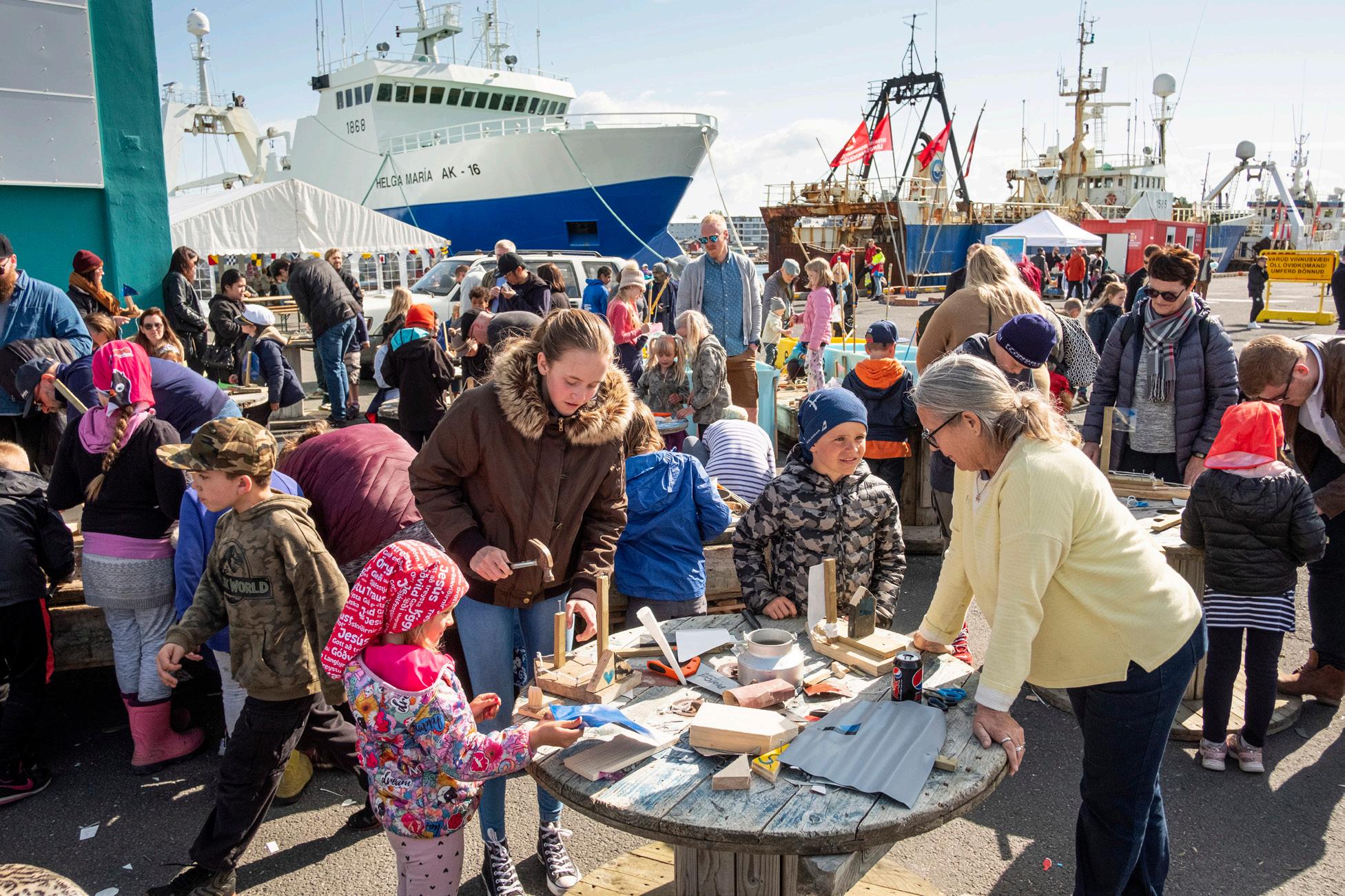
A festival celebrating music, literature, and arts of children arts for children of all ages.
The First Day of Summer is an official holiday, celebrated with parades and family-friendly fun all over the city.
The area around the old harbour in Reykjavík bustles with life during this festival, which celebrates the ocean around Iceland and the men and women who spend their days fishing and sailing.
Iceland became an independent country in 1944 and every year since, June 17 is celebrated with a festival in every town in Iceland.
Culture night actually mostly takes place during the day, with plenty of events, concerts, street theatre, and other events to keep the whole family entertained!







A sub-zero experience for all ages with an ice-art gallery and bar!

You can nd us on google maps




If you stand in the city centre and look out over the ocean, the mountain on the other side of the fjord is called Esjan. Not only is it very pretty, as well as helpful when you need to know which direction is north, it’s also a popular hiking spot for locals. The most popular route is straight up the wellworn path from the visitor centre towards a landmark, a rock cleverly known as Steinn (Rock). This hike should take about an hour each way for experienced hikers.


(THE SUN VOYAGER)
A beautiful sculpture in the image of a Viking ship located by the ocean on a small peninsula by Sæbraut, close to downtown Reykjavík. The sculpture, by Jón Gunnar Árnason, ymbolises the Viking past of Icelanders and is an ode to the sun. It serves as a reminder of our history and heritage when the first Viking settlers came sailing to Iceland. The best time to see Sólfarið is when the sun is setting.


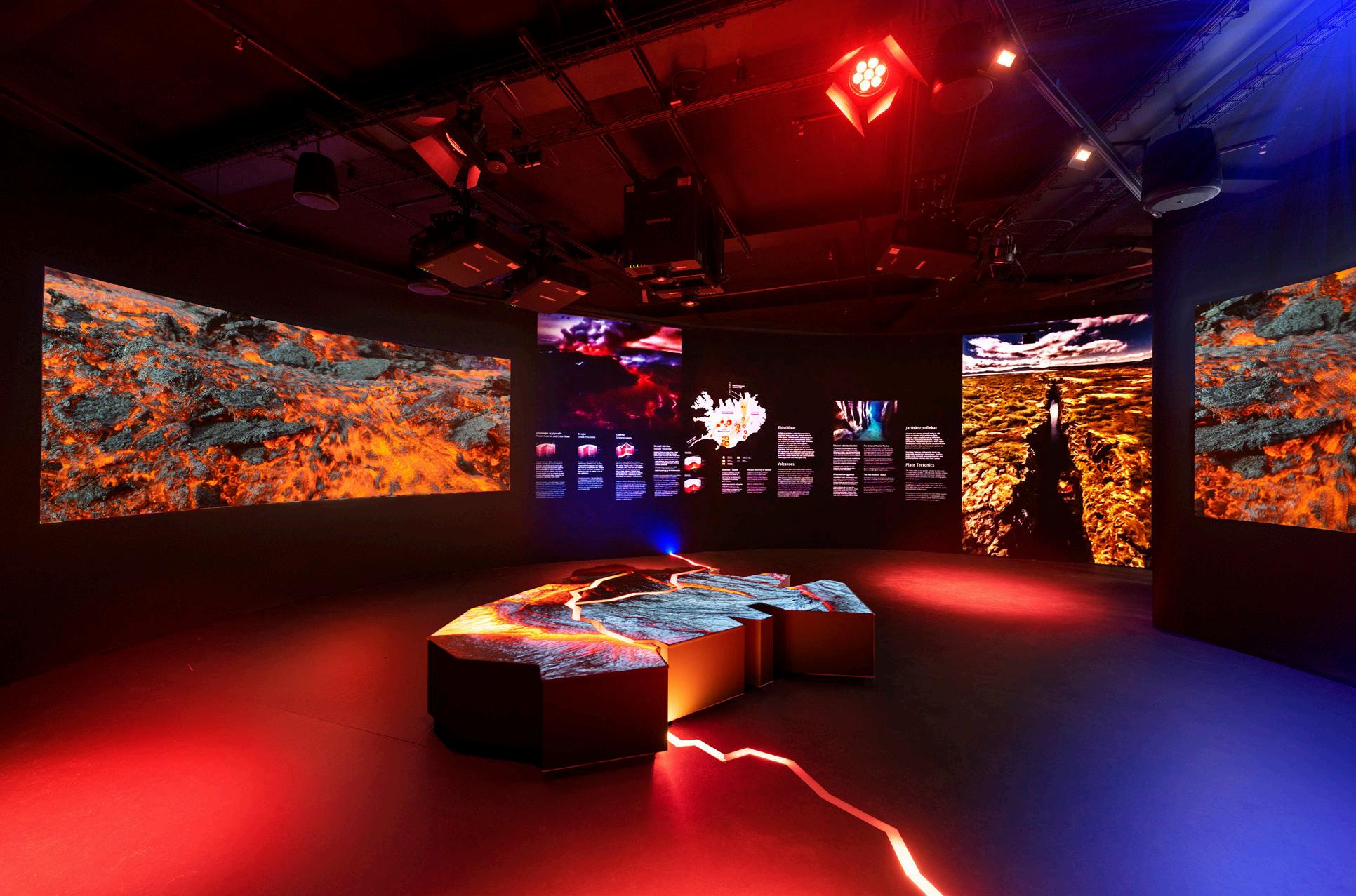

Volcanos


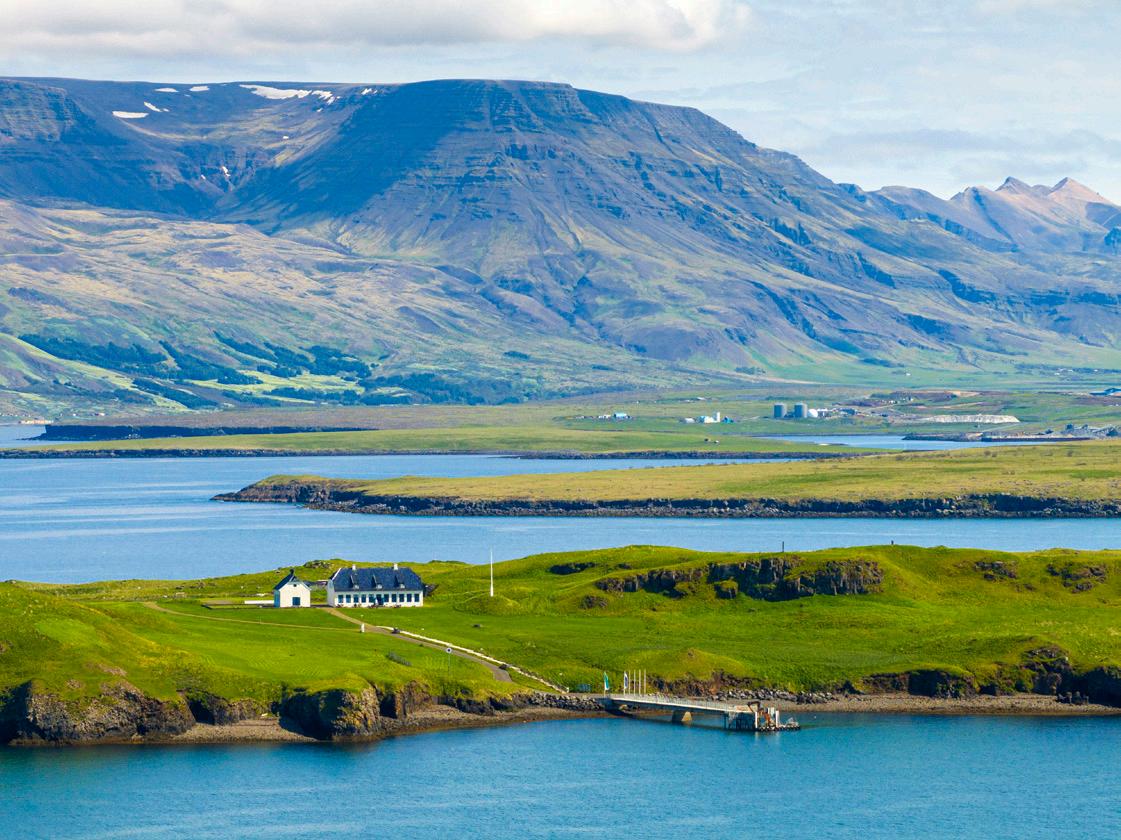
Viðey island lies off the coast of Reykjavík and can be reached by ferry. It was inhabited for the larger part of Iceland’s history and has a rich historical background. Attractions include impressive works of art, such as the Imagine Peace Tower by Yoko Ono and Richard Serra’s outdoor sculpture, Milestones. With an extensive network of trails and a population of resident horses, the island can be explored both on foot and by horseback.
Harpa is Iceland’s biggest concert hall, suitable for a broad range of concerts and cultural events. Looking out over the Reykjavík harbour on one side and glorious Mt. Esjan on the other, Harpa also hosts promotions, plays, and public events. If you haven’t got a ticket for a show, you can still stop by the restaurants and shops in the building. The attentiongrabbing honeycomb facade was designed by Ólafur Elíasson, a Danish artist of Icelandic descent.


winter, although hot geothermal water is pumped into it to defrost an area for the birds. If you’ve brought your skates, skating on Tjörnin is a popular pastime, especially when the city is adorned with Christmas lights.
Höfði House, built in 1909, is one of the most beautiful and historically significant buildings in the Reykjavík area. Originally built as a French embassy, Höfði is today best known as the location for the summit meeting of presidents Ronald Reagan and Mikhail Gorbachev in 1986, a historical event that effectively marked the end of the Cold War. During this meeting, images of the house were broadcast all over the world.







On the best mobile network in Iceland siminn.is/prepaid


Yoko Ono dedicated the Imagine Peace Tower to her husband, John Lennon. This work of art has the form of a wishing well emitting a powerful beam of light. The strength, intensity, and brilliance of the light beam continually change as particles in the air fluctuate with changing weather and atmospheric conditions. Although the tower sits on the island of Viðey, its beam is visible from all over Reykjavík.


The golden-sanded geothermal beach at Nauthólsvík in Reykjavík is a little piece of paradise. It opened in 2001 to the delight of residents and tourists alike. The creation of the geothermal beach was an ambitious but successful project involving the construction of a lagoon with large sea walls, where cold sea water and hot geothermal water blend together to ensure a comfortable water temperature. Next to the lagoon, there is a large hot tub, changing rooms, toilets, grills, and a small shop!
Thanks to Iceland’s abundance of geothermal heat, Icelanders’ favourite pastime is going swimming. Every town has at least one thermal pool, and Laugardalslaug is Reykjavík’s largest one, located in Laugardalur valley. Its facilities include a 50m outdoor pool, an outdoor children’s pool and paddling pool, waterslides, numerous hot tubs, a steam bath, a gym, and a mini golf course. There really is no better place to be on a sunny day (or even a cold one for that matter!).


Laugardalur is a charming neighbourhood, containing a youth hostel, a campsite, and Laugardalslaug swimming pool. There’s also a skating hall and a family park/ petting zoo, making it perfect for a day out with the family. Laugardalur boasts a beautiful botanical garden featuring an impressive selection of arctic flowers and plants as well as Flóran, a lovely café.
This majestic church is one of Reykjavík’s most iconic buildings and is visible from almost anywhere in the city. The tower of the church is among the city’s highest buildings and offers a fantastic view over the city and its surroundings. It’s named after the Icelandic poet and clergyman Hallgrímur Pétursson, author of the Passion Hymns. The architect, Guðjón Samúelsson, designed the church to resemble the basalt columns common in Iceland’s landscape.


The descriptive name comes from the fact that it’s the first lasting harbour in Reykjavík. The most visited area is the eastern pier, where you’ll find a community of shops, galleries, electric bike and scooter rentals, and whale watching companies. Ever since the Reykjavík fishing industry moved to a new harbour, the area has been filled with excellent restaurants and coffeehouses, shops, galleries, and museums.
Standing at 25m and built on the city’s hot water tanks, Perlan is one of Reykjavík’s most striking buildings. Inside Perlan, there are several exhibitions included in the ticket, offering a chance to visit an ice cave, learn about the Northern Lights, and take in the view on a spectacular 360° viewing platform. Up on the top floor, there is a restaurant and coffeehouse. Surrounding Perlan is the Öskjuhlíð area, one of the many green spaces in Reykjavík, perfect for a walk on a sunny day


The building, with its impressive, modern design, was completed in 1992 and sits on the north shore of Tjörnin, Reykjavík’s downtown lake. It houses offices for the mayor and the city’s executive officials and is also open to visitors. The reception area features exhibition halls, where exhibitions, fairs, and cultural events take place. The three-dimensional map of Iceland is always a favourite with visitors to the country.




Fur store & workshop

Visitors will be pleased to learn that Reykjavík is fast becoming one of the best locations to sample quality new Nordic cuisine. Talented local chefs spend all their waking days conjuring up new ways to showcase the fresh, seasonal ingredients that Iceland is so famous for, such as fresh seafood, organic lamb, and wild game. In fact, in 2017, Dill Restaurant, located in downtown Reykjavík, brought home Iceland’s first ever Michelin star, and several more soon followed, including ÓX restaurant in 2022 and Moss, the Blue Lagoon’s restaurant, in 2023. While fine dining is great, be sure to try the fabulous Icelandic hot dog and ice cream, too.
Apart from the great food available in Reykjavík, the city also boasts a remarkable café culture, where trained baristas serving fresh coffee are the rule rather than the exception. We also encourage guests to give their taste buds a treat by sampling some of the

For the best shopping experience in Reykjavík, go downtown. Most of the shops and boutiques are concentrated on Laugavegur and Skólavörðustígur streets. Be sure to check out Reykjavík’s brand new shopping area Hafnartorg as well! Whether you’re looking to get a souvenir of your time in Iceland, a gift for someone back home, or something unique from one of our many talented designers, the city centre is well supplied with brand names, thrift stores, and quality art studios.
If you prefer a mall experience and international brands, you can take a trip to Kringlan – home to around 150 shops, restaurants, and services under one roof.
Shopping hours in Reykjavík can vary but most places are open between the hours of 10am and 6pm during the week, with shorter opening hours on Saturdays.
Remember to claim your 15% VAT (value added tax) refund from your purchases. You can get your refund at the airport.


Reykjavík is home to our most prestigious cultural institutions and most talented performers and artists. The National Gallery and the Reykjavík Art Museum have exciting exhibitions ranging from traditional to contemporary. Inside The Marshall House by the old harbour, you’ll have a chance to visit inspiring exhibitions at the Living Art Museum, the Kling & Bang gallery, and artist Ólafur Elíasson’s studio.
Designated as a UNESCO City of Literature, Reykjavík is the core of Iceland’s literary heritage, home to a wealth of talented poets and authors. The most celebrated of Icelandic literary offerings are of course the Sagas of Icelanders, but in the past few years, crime fiction in the vein of Nordic noir has also been popular.
Reykjavík is also well known for its prolific music and performing arts scene – the city is a breeding ground for musical talent.
A number of well-established musicians played their first gigs in Reykjavík, such as the legendary Björk, the indefinable Sigur Rós, as well as Eurovision heroes Daði Freyr and Hatari, to name but a few.
Reykjavík’s clean energy and proximity to nature ensure a vacation guaranteed to replenish your well-being and give you a boost of energy that will last long after your return home.
The city’s green spaces and recreational areas offer plenty of opportunities for walking, running, or cycling. Indulge in anything from sea swimming at Nauthólsvík thermal beach to horseback riding in the red hills of Heiðmörk! Visitors are also thoroughly encouraged to experience Iceland’s greatest source of wellbeing by trying out one of our numerous thermal pools and spas – not only an important part of our culture but also a wonderful tonic for the body and mind.

You could blame it on those long winter nights, the endless summer days, or maybe the exceptional quality of locally produced beer and Icelandic schnapps; whatever the reason, Reykjavík’s legendary nightlife (djammið, as the locals refer to it) has a reputation of being one of the hottest in the world. Get ready to party!
If you’ve spent the day absorbing all that green energy in the great outdoors and you need to use it somewhere, then it’s time to trade those waterproofs and walking boots for your glad rags and party shoes and see if you have enough stamina to stay up as long as a local! We’ve got pubs, clubs, and lots of live venues to suit a multitude of different party moods. On weekdays, most bars are open until 01:00, but on weekends, the bars can stay open until 04:30. Bars and clubs do not charge an entrance fee; however, expect to pay a small charge for entrance to some live music venues. If you look younger than the minimum drinking age, which is 20 in Iceland, then make sure you bring your ID with you.


vox.is
Suðurlandsbraut 2 108 Reykjavík
dineout.is/vox vox@icehotels.is +354 444 5050

Smoked haddock, langoustine, dill, scallops and magic.
–›–›–› PLEASE SCAN TO BOOK A TABLE


Reykjavík City is buzzing with activity all year round. A number of annual festivals and seasonal events attract festivalgoers from all around the world. Apart from the city’s superb official events, such as the Winter Lights Festival and Culture Night, there are also a host of film festivals, design events, music festivals, and other events celebrating everything from the arrival of summer to the city’s wealth of culture!

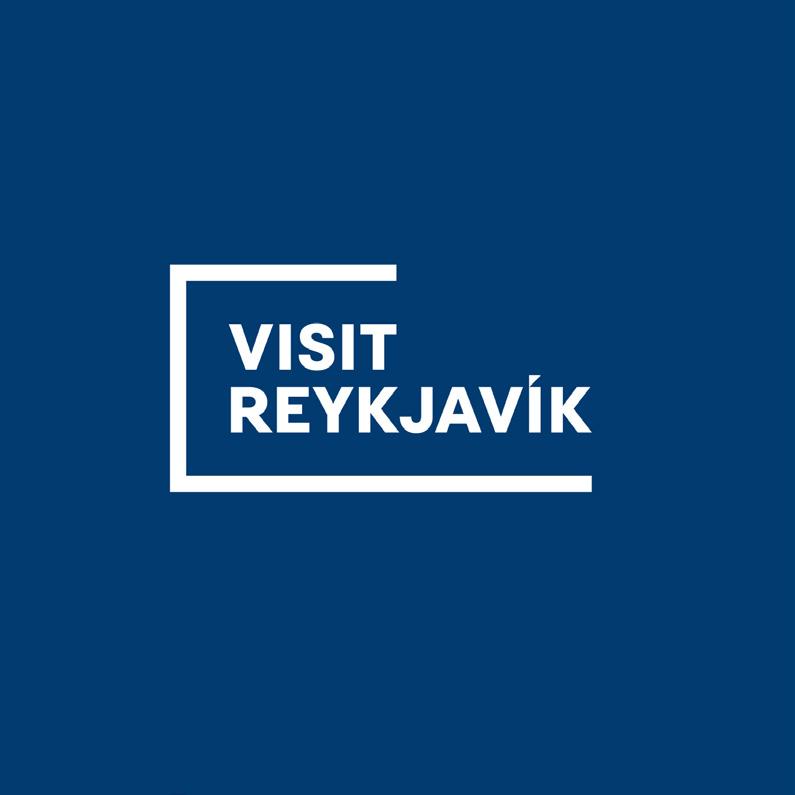
Iceland can get dreary during the darkest months, especially in February. The Winter Lights Festival was created to stimulate city life in midwinter and intends not only to combat the darkness but to celebrate the unique subarctic nights. Over the years, the Winter Lights Festival has evolved into an incredibly fun four- day festival with an array of great events, such as the Museum Night and Pool Night.
RIFF takes place every year in late September for 11 days. RIFF is an independent non-profit organisation. The festival shows a wide range of dramas and nonfiction films from over 40 countries. It highlights independent filmmaking from all over the world, with a special emphasis on up-and-coming filmmakers. RIFF encourages the interaction of film with other art forms by organising concerts, photo exhibitions, and more.
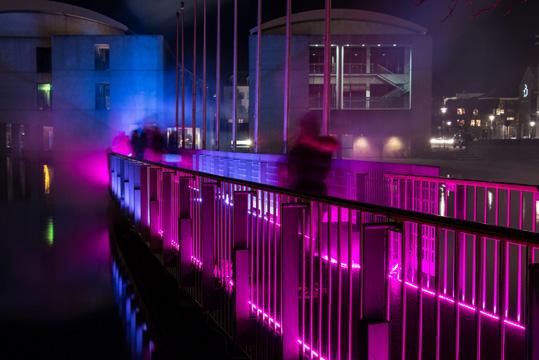

A celebration of Icelandic design, showcasing the best creations of the Reykjavík design scene. The scene is small and intimate, which means you’ll get the chance to meet all the stars of local design. From fashion to furniture, architecture to food design, the festival presents the best of the local designers alongside exciting international names. For four days, Reykjavík is transformed into a mega venue hosting hundreds of openings, events, exhibitions, and parties.
Yoko Ono’s Imagine Peace Tower is an extraordinary dedication to John Lennon and his vision of world peace. Installed on Viðey island on October 9, 2007, this stunning work of art is lit annually on Lennon’s birthday. The powerful super beam of light reaches approximately 400m into the sky on a clear night and illuminates the skies above Reykjavík nightly until the anniversary of Lennon’s death on December 8. Every year, Yoko invites visitors on a complimentary ferry trip to the island to take part in the beautiful illumination ceremony.


A week-long festival dedicated to children’s arts and culture. Children’s culture, culture for children, and culture with children, these are the three main aspects of the festival. Dedicated exclusively to children and young people in Reykjavík up to the age of 16, this annual festival strives to introduce a wide range of art disciplines to Icelandic youth, through workshops and performances.
On June 17, 1811, an Icelandic legend was born. His name was Jón Sigurðsson and he was the leader of the Icelandic independence movement. In 1944, Iceland gained independence from Denmark and his birthday was chosen as the Icelandic National Day. Dozens of events are organised from 10:00 till late in the evening. Theatre, music, workshops, dance, June 17 has it all!
This colourful event brings tens of thousands of people into the city centre every year to show solidarity and have fun with the LGBTQ+ community of Reykjavík. People of all genders, friends, relatives, and a fast-growing number of tourists, come together to celebrate and support universal human rights. Our cosy little pride parade, originally visited by some 1,500 onlookers, has blossomed and evolved into a colourful six-day celebration that attracts up to 100,000 guests from all over the world.
Reykjavík Culture Night takes place all across Reykjavík with celebrations in city streets and on squares, in museums, businesses and even residential gardens! The event is meant to highlight Iceland’s history and old-fashioned customs of art, literature, and hospitality. Culture Night is a permanent fixture in the annual calendar of events in Reykjavík and marks the start of the city’s cultural year, when museums, theatres, and other cultural institutions launch their annual programme of events.




A critically-acclaimed music festival showcasing the hottest new international bands and the best up-andcoming Icelandic artists. It started out as a one-off gig in an airplane hangar back in 1999, with only five bands, but now it has established itself as one of the hippest events on the international music festival calendar. The festival attracts thousands of visitors from around the world, who come in search of some fresh audio dynamite and an adventure at the edge of the Arctic Circle.












The Reykjavík City Card offers free entry to a great selection of museums and galleries, as well as the thermal pools in Reykjavík.
With so much to see and do in Reykjavík, the Reykjavík City Card is the easiest and most inexpensive way to experience it all!
It also provides free unlimited travel by bus within the Reykjavík capital area. In addition, the card gets you a free ferry trip to Viðey island and discounts on various tours, in shops, and on services. The card is available for 24, 48, or 72 hours.
Admission to the city museums is free for those under 18 years of age; however, there are fees for children on city bus services, swimming pools, the Reykjavík Park & Zoo, and on the ferry to Viðey island. To accommodate families, we offer a special Children’s City Card, for a significantly reduced fee. Cards are valid for the same duration: 24, 48, or 72 hours. For more information, check out www.citycard.is or contact the What’s On information centre.
Please note: admission to the city museums is generally free to children under 18. However, there are fees for children on city bus services, swimming pools, the Reykjavík City Park & Zoo, and on the ferry to Viðey island. So the Reykjavík City Card is the best way to get the most bang for your buck for the entire family.
Get to know our favourite city the easy way and save money!
Included in the Reykjavík City Card is admission to:
Unlimited travel by bus within the Reykjavík capital area. For bus schedules, visit www.bus. is or download the Strætó payment app, Klapp.
For information about the pools, visit www. swimminginiceland.com or check out our swimming pool page (p. 153).
For a list of museums included in the City Card, head to www.citycard.is.
For your convenience, you can also find all the museums covered by the City Card by looking for the Visit Reykjavík logo.


Starts with a shot of the infamous Icelandic spirit Brennivín

late night dining!
Our kitchen is open until 23:00 on weekdays and 24:00 on weekends
Followed by 7 delicious tapas:
• Smoked puffin with blueberry “brennivín” sauce
• Icelandic arctic char with candy beets salad, asparagus and elderflower-hollandaise
• Lobster tails baked in garlic
• Pan-fried blue ling with lobster sauce
• Grilled Icelandic lamb tenderloin with beer-butterscotch sauce
• Minke Whale with sweet potato mash and malt sauce
And for dessert:
• White chocolate “Skyr” mousse with passion coulis




Start the day by watching the reindeers of the Reykjavík Family Park & Zoo eat their breakfast! The Reykjavík Zoo doesn’t house lions or elephants but rather common Icelandic barnyard animals and animals found in Icelandic nature, such as arctic foxes, seals, and reindeer.
If the weather is nice, take the ferry out to Viðey island. For attractions on Viðey, check out p. 130.
Head over to the Árbær Open Air Museum. The old buildings, the costumed staff, and the toy exhibition are sure to keep the whole family entertained.
After a day of entertainment, there’s nothing better than relaxing in the hot tub while the kids splash in the pool and play on the waterslide. If you are done at Árbær Open Air Museum, hop on bus no 5 and head to Árbæjarlaug swimming pool.
If you have an extra day...
Head to the Reykjavík Maritime Museum for an interactive experience in Iceland’s nautical history. The National Museum is another great option, with interactive exhibitions and areas dedicated specially to kids.

If you want to get to know Icelandic history and culture, start at the beginning! Excavations have revealed ruins from the 10th century, which you can visit at the Settlement Exhibition.
From there, it’s a short walk to the National Museum. The permanent exhibition titled The Making of a Nation offers a sense of the evolution of the Icelandic nation through the centuries.
Next up is the Árbær Open Air Museum. This collection of historical buildings will give you a sense of what life was like in the farming community in days gone by.
Finish up a day of immersing yourself in Icelandic history by immersing yourself in a hot tub. They’re usually populated by several generations of Icelanders discussing politics, culture, their cats, and whatever else they can think of.
If you have an extra day...
Check out the Reykjavík Maritime Museum or the House of Collections, where historical artefacts and works of art are exhibited together, for a new perspective on what it is to be an Icelander.

Start the day off by going to the National Gallery, down by lake Tjörnin. The focus is on 19th and 20th-century artists, and with no permanent exhibition, there’s always something new to see!
The Reykjavík Art Museum is spread over three separate buildings. Do you want to see modern art at Hafnarhús, paintings at Kjarvalsstaðir, or sculptures at Ásmundarsafn?
If you choose Hafnarhús, the Reykjavík Museum of Photography is right next door. hese exhibitions are diverse and include artistic, historical, as well as journalistic photography!
If you have an extra day...
Check out the locations of the Reykjavík Art Museum you missed, head down to House of Collections, or take city bus no 16 from Hlemmur to scenic Elliðaádalur to visit Höfuðstöðin Art and Culture Center


Don’t forget that unlimited travel on the city buses is included in the City Card while the card is valid. Taking the bus between attractions is a convenient way to get around!

National Gallery of Iceland
Fríkirkjuvegur 7
The House of Collections
Hverfisgata 15

w. icelandbike . co m
• Private bicycle tours in Reykjavik.
• Private tours in a vehicle with and without bicycles.
w icelandbike co m Private Segway tours available all year. Contact us for a great tour! Website: Icelandbike.com
• Bicycle rental. Bicycle repairs.
• Contact us for a great tour!


Email: bike@icelandbike.com Phone: +(354) 694 8956.

For such a small city, Reykjavík abounds with museums. It’s no wonder, since the country’s history is unique, and the artistic spirit of its inhabitants is almost like a force of nature. You can discover a quirky, young artist at the Living Art Museum, get a look at Iceland’s national costumes at The National Museum, and finish up the day with a lesson on how to properly milk an Icelandic cow at Árbær Open Air Museum.
WELCOME TO REYKJAVÍK ART
MUSEUM – RAM
The Reykjavík Art Museum is housed in three unique buildings in the city centre and holds some of the most distinguished works in Iceland’s artistic landscape.
CONTEMPORARY



The exhibitions at RAM Hafnarhús are progressive and experimental, emphasising works from established contemporary artists, highlighting current notables, and encouraging the works of newcomers.
RAM Hafnarhús is home to the works of the Paris-based Icelandic artist Erró (b. 1932), a significant player in the international pop art scene. The museum is located in the oldest part of Reykjavík by the harbour and built in the 1930s.

RAM Hafnarhús
Tryggvagata 17, 101 Reykjavík +354 411 6400 www.artmuseum.is artmusem@reykjavik.is
Opening hours: Daily 10am-5pm, Thursdays 10am-10pm.
Admission : ISK 2,350
Students: ISK 1,450
Children under 18: Free

The entrance ticket is valid for 24 hours in all three museums.
RAM Kjarvalsstaðir is named after the painter Jóhannes S. Kjarval (1885-1972), one of Iceland’s most influential and recognised artists. The most comprehensive collection of Kjarval’s works is on display in RAM Kjarvalsstaðir, highlighting his range of styles as well his use of local nature and mythology.
RAM Kjarvalsstaðir is situated in beautiful Klambratún Park and is the first building in Iceland designed specifically to display art. Its doors opened in 1973 and it is a fine example of Nordic modernism. The building features floorceiling windows with a view of Klambratún Park and a beautiful restaurant.

RAM Kjarvalsstaðir
Flókagata 24, 105 Reykjavík +354 411 6420
www.artmuseum.is artmuseum@reykjavik.is
Opening hours: Daily 10am-5pm.
Admission : ISK 2,350
Students: ISK 1,450
Children under 18: Free

The entrance ticket is valid for 24 hours in all three museums.
RAM Ásmundarsafn Sculpture Museum is the former modest home and studio of the sculptor Ásmundur Sveinsson (1893- 1982), who designed and constructed the building. The museum serves to honour his life and work and displays the largest collection of his sculptures both inside and in a beautiful park outside the building. Ásmundur’s art reflects his lifelong interest in the Icelandic sagas, folk tales, nature, and classical mythology. The building itself is a magnificent work of architecture, largely inspired by Mediterranean architecture.
RAM Ásmundarsafn also houses temporary exhibitions and installations.
RAM Ásmundarsafn
Sigtún, 105 Reykjavík +354 411 6430
www.artmuseum.is artmuseum@reykjavik.is

Opening hours: May-Sep: Daily 10am-5pm. Oct-Apr: Daily 1pm-5pm.
Admission: ISK 2,350
Students: ISK 1,450
Children under 18: Free

The entrance ticket is valid for 24 hours in all three museums.
Reykjavík City Museum engaging journeys through culture, heritage and history. WELCOME TO REYKJAVÍK CITY MUSEUM
Five unique places that take you beyond the shore and below the ground. Five museum experiences that cover the Settlement to the contemporary moment. And five fun and engaging ways to enjoy Reykjavík’s exciting cultural heritage.
Three of the museum sites are within walking distance of downtown Reykjavík, while the Árbær Open Air Museum and the ferry terminal are only 10-15 minute drive from the city centre. All museum sites are family-friendly and inclusive.
www.reykjavikcitymuseum.is citymuseum@reykjavik.is
Reykjavik’s open air museum, where you can stroll through the past and experience the way we lived.
Fun, fascinating and full of surprises, this liv ing museum takes you on a journey through time. Reykjavík’s early history is preserved in a series of lovingly-restored homes, where you’ll encounter costumed guides, grazing animals and traditional crafts. Exhibitions,

demonstrations and tours reveal how Reykjavík came to life from a few scattered farms to a vibrant capital city.
Árbær Open Air Museum
Kistuhylur, 110 Reykjavík
Reykjavík, from settlement to the present day.
The Settlement Exhibition – step into the Viking Age
An open excavation where Viking ruins meet digital technology. Discovered during building work, these remnants of the past are the earliest evidence of human settlement in the city.
Reykjavík … the story continues
Open: Sep-May: Daily 1pm-5pm. Jun-Aug: Daily 10am-5pm Daily guided tours, all year round, at 1pm.


Family-friendly and informative exhibition about the development of Reykjavík from a farm to
Aðalstræti
Aðalstræti 10 & 16, 101 Reykjavík
a city. Visitors get an insight into the complex history of Reykjavík through the development of house construction and planning.
Open: Daily 10am-5pm. June–August, guided tours on weekdays at 11am

Reflecting the contemporary, while archiving the past – this is Reykjavík’s home of photography.
Reykjavík’s main photography museum offers an ongoing programme of contemporary and historical exhibitions, and an onscreen archive of thousands of images from the past. New work from Iceland and abroad reflects where photography is now, while extensive archives from 1860–2020 give an insight into Iceland’s changing culture and society over more than a century.
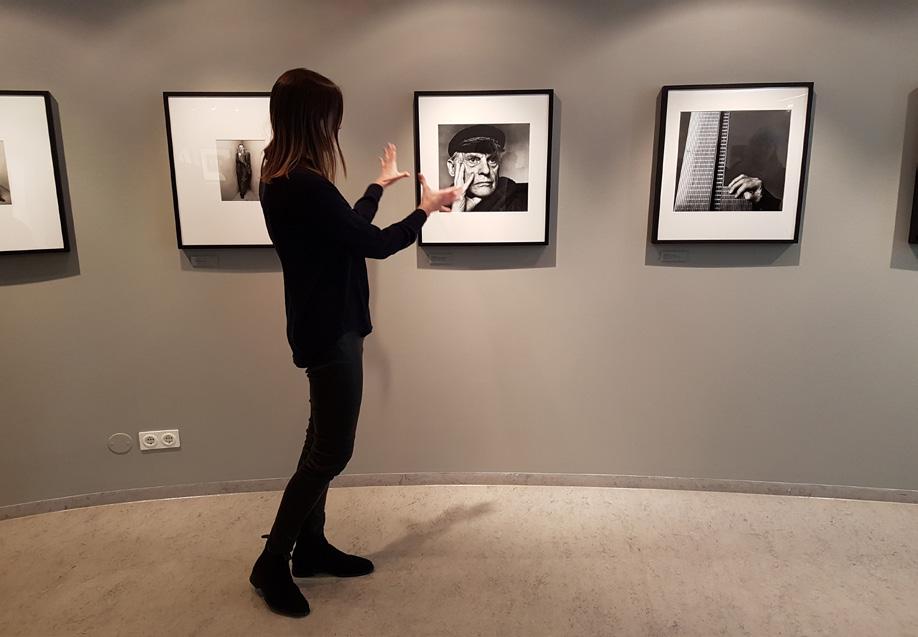
Reykjavík Museum of Photography Tryggvagata 15 (top floor),101 Reykjavík
A harbour museum exploring Iceland’s dramatic relationship with the sea.
The survival of a nation depended on generations of brave fishermen heading into the unknown. Over the centuries, methods of catching and working with fish transformed into a science that helped create a modern nation. Exhibitions and artefacts bring our ocean history to life, from battling the waves to
Reykjavík Maritime Museum
Grandagarður 8, 101 Reykjavík Open: Daily 10am-5pm.
An island where art, history and nature lie just beyond the city shore.
The combination of stunning views, historical ruins and contemporary art pieces make Viðey island something special. Just a short boat ride takes you to another world, to be explored in your own time. From nesting birds and panoramic views to Yoko Ono’s famous
Viðey Ferry Terminals
Skarfabakki Harbour, 104 Reykjavík Elding, Old Harbour, 101 Reykjavík (Summer only)
Open: Mon-Thu 10am-6pm, Fri 11am-6pm


the ‘Cod Wars’ and beyond. Plus, the chance to climb aboard the Óðinn, a 900-ton coastguard ship with its own stories to tell.
Óðinn Coast Guard Vessel: Guided tours daily at 1pm, 2pm & 3pm


‘Imagine Peace Tower’ and Richard Serra’s ‘Milestones’, you’ll discover an oasis of peace, beauty and history.

Ferry Schedule: Daily from 15 May–31 August Weekends only 1 September–14 May See detailed schedule on www.videy.com

The National Gallery of Iceland, established in 1884, is Iceland’s principal art museum. Its collection consists mainly of works of 19th and 20th-century art. In its possession are many of the keystones of Icelandic art history, as well as a growing collection of works from other countries.
The National Gallery’s main role is to collect, preserve, research, and exhibit Icelandic art and offer education about it. A considerable emphasis is also laid on showing Icelandic art in context with international art. The museum sees it as one of its priorities to educate visitors about exhibitions and single artworks, by means of texts, guidance,

meetings with artists, and a database which is accessible through computers in The National Gallery’s education centre.
Fríkirkjuvegur 7, 101 Reykjavík
+354 515 9600
www.listasafn.is info@listasafn.is
Your ticket to The National Gallery of Iceland is also valid for The House of Collections.
SCULPTURE MUSEUM AND GARDENS
One of the first Icelandic sculptors was Einar Jónsson (1874-1954), whose statues can be found scattered throughout Reykjavík, including those of Jónas Hallgrímsson and Jón Sigurðsson. A museum can be found inside the beautiful and formidable building that he designed and lived in, which sits across the street from Hallgrímskirkja.
Inspired by Icelandic folklore and mythology, Einar Jónsson’s work first went on display in 1901, and he quickly became one of the most important figures in Iceland’s art scene.
Hallgrímstorg 3, Reykjavík +354 551 3797 www.lej.is/en lej@lej.is
Open: Daily 10am-5pm
Admission: ISK 2,200
Seniors and students: ISK 1,100
Children under 18: Free


While several of his most famous works sit inside the museum, many of his sculptures can be found in the back garden, open 24 hours a day and free of charge.
Open : Tue-Sun 12pm-5pm
Admission : ISK 1,500
Seniors/students: ISK 1,000
Children under 18: Free

The building, completed in 1909, was originally built to house the National Library, National Archives and National Museum collections. It was the first purpose-built facility for such collections in Iceland. This splendid old building now enables the National Gallery to hold a standing exhibition of key works from its collections, and it is a welcome addition to the Gallery´s exhibiton spaces.
The exhibition Resistance in the House of Collections is an interdisciplinary exhibition for children of all ages, that bridges the gap between visual arts and science. The works in the exhibition are all in the collection of the National Gallery of Iceland. The works of art in the exhibition all relate to the discourse on sustainability, and ethical issues relating to efforts that may enhance sustainability. These works offer the opportunity to consider
Hverfisgata 15, 101 Reykjavík +354 515 9630 www.listasafn.is info@listasafn.is
Your ticket to The National Gallery of Iceland is also valid for The House of Collections.
The Nordic House is nestled between the University of Iceland and the Reykjavík Domestic Airport on the edge of Vatnsmýri park. It hosts several events relating to Icelandic—as well as Iceland’s Nordic neighbours’—culture, nature, history, and art. Home to an extensive multi-language library, The Nordic House features many different art exhibitions. The Nordic House is well worth the visit with activities and exhibitions targeted toward children, a café, and a relaxing view of the surrounding wetlands.

existence, nature, and other people: how people choose to lead their lives, and the influence they wish to have. In order to establish the conditions for a good life, many different factors must be taken into account –and not least the reciprocal effects between them. The key to sustainability is to live one’s life is such a way as to maintain a good life, while not reducing other people’s quality of life.
Open: Daily 10am-5pm
Admission: ISK 2,200
Seniors and students: ISK 1,100
Children under 18: Free

Sæmundargata 11, 101 Reykjavík +354 551 7030 www.nordichouse.is

Open: Tue-Sun 10am-5pm
Admission: Free

and the most visited museum in Iceland



The Icelandic Phallological Museum, the worldʹs only penis museum, is located in the heart of Reykjavik, right by the old harbor.
The family friendly museum sports the largest penis collection on Earth, which even includes a cast of Jimi Hendrix from the late Cynthia ‘Plaster Caster’ Albritton. Visitors get a unique tongue-in-cheek opportunity to engage in comparative anatomy with the organs of hundreds of different species.
The museum also has a penis themed bistro where we serve our famous penis waffles, handcrafted local beers, penis themed cocktails and amazing coffee and tea from small batch local companies.


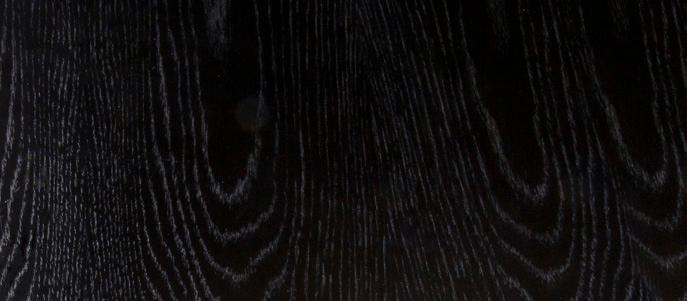




ICELAND’S HISTORY FROM THE SETTLEMENT TO PRESENT DAY
The National Museum displays authentic objects that provide insight into Icelandic cultural history – exhibits encouraging visitors to reflect on the past, present, and future.
At the museum, you can explore the permanent exhibition, Making of a NationHeritage and History in Iceland, which provides insight into the history of the Icelandic nation from the settlement to the present day. The museum caters to all ages as children can enjoy games and play dress-up. Adults and children alike can explore the museum via interactive touch screens and audio guides that complement the exhibitions. Guided tours are

available from June 1. to August 31. Visit the museum’s website for more details.
The museum shop offers a stylish and educational atmosphere with custommade goods and handicrafts.
The museum café offers soup, sandwiches, coffee, tea, and a variety of drinks and other delicacies.
Suðurgata 41, 102 Reykjavík +354 530 2200 nationalmuseum.is nationalmuseum@nationalmuseum.is
INSPIRING EXPERIMENTAL ART
The Marshall House by the old harbour is the home of the Living Art Museum. This nonprofit, artist-run museum and association was founded in 1978 to showcase experimental and groundbreaking contemporary art, at a time when Icelandic art authorities had stagnant views of what constituted art and art history.
The Living Art Museum’s collection consists entirely of donations from artists and individuals. Through the past four decades, the collection has grown to feature works from the most inspiring Icelandic artists of our time.
Since its foundation, the Living Art Museum
Grandagarður 20, 101 Reykjavík +354 551 4350 www.nylo.is
Open: Daily 10am-5pm, Closed on Mondays Sept 16-Apr 30.

Admission: ISK 2,500 (Valid for 1 year) Students and seniors: ISK 1,200 Children under 18: Free
Wheelchair accessible.

has been an important forum in the Icelandic art community for introducing, reflecting, and debating the role of contemporary art. It offers a varied programme that extends beyond art exhibitions, including performances, film and video screenings, live music, lectures and symposiums, poetry readings, and theatre.
Open: Wed-Sun 12pm-6pm Long Thursday (Last Thursday of the month): 12pm-9pm.
Admission: Free
EXPERIENCE THE NORTHERN LIGHTS
Take a walk through history and learn how people and cultures worldwide experienced the northern lights via legends and myths connected to this amazing phenomenon.
Learn the science behind the aurora via interactive displays and try out the specially equipped “photo booth” where you can learn how to adjust your camera’s settings for capturing the elusive lights.
Aurora Reykjavík’s ace up its sleeve is a fantastic 4K time-lapse film of the aurora borealis. Projected onto a seven-metre-wide screen, you can sit back on bean bags and enjoy this 30-minute film that features dazzling aurora displays captured all over Iceland.
Try the virtual reality goggles featuring the world’s first 360° movie of auroral displays. If you can’t catch the northern lights yourself, this
Fiskislóð 53, 101 Reykjavík
+354 780 4500
www.aurorareykjavik.is info@aurorareyjhavik.is
ART AND CULTURE CENTRE
Founded by celebrated artist Hrafnhildur Arnardóttir, also known as Shoplifter, Höfðustöðin houses one of her most notable exhibitions: Chromo Sapiens. Multi-coloured sheep hair adorns the walls, ceilings and floors, giving it the look of “Dr Suess on LSD.” Chromo Sapience debuted at the Venice Biennale in 2019 and has inspired Shoplifter to create more installations of her psychedelic furry artwork but also open her own art and culture centre for her artwork – the first Icelandic woman to do so!

almost real experience is definitely the next best option to witness the beauty of this truly amazing phenomenon.
The knowledgeable and friendly staff are on hand to answer any questions about the lights and about northern lights photography, accompanied by a free cup of coffee or tea.
The gift shop stocks a selection of high-quality handmade items by young Icelandic designers, photographers, and artists.
Open: Daily 9am-9pm
Admission: ISK 3,900
Students: ISK 3,500
Children 6-16: ISK 1,900
Children under 6: Free

Rafstöðvarvegur 1a, 110 Reykjavík +354 550 0077 www.hofudstodin.com
Open: Mon-Fri 10am-6pm, Sat-Sun 11am-5pm
Admission: ISK 2,250
Youth (12-17): ISK 1,450
Seniors: ISK 1,650
Children (5-11): ISK 650
Children under 5: Free
Immerse yourself in irresistible colors, textures & sound

“If you have to pick one thing to do in Reykjavík then this is it!”
Reviewed on TripAdvisor
*Only a 10 min drive from the city center
Enjoy the breathtaking view from Kópavogskirkja Church. Dive into nature at the Natural History Museum of Kópavogur. Fill your senses with progressive contemporary art at Gerðarsafn Kópavogur Art Museum, have a look at what the museum shop has to offer and enjoy some delightful beverages at the local café. Take a moment to relax and read at Kópavogur Public Library. Have a nice soak at Kópavogur Swimming Pool. And if you’re lucky, attend a concert at Salurinn Concert Hall.

Welcome to Culture Hill, the easy way to experience culture and nature all in one stop.
Conveniently located at the Hamraborg bus stop in Kópavogur, the hill includes several unique cultural attractions within walking distance. Culture Hill is serviced by buses 1, 2 and 4 from Reykjavík centre to Hamraborg.
The Natural History Museum offers an insight into Icelandic wildlife and the formation of Iceland. A new exhibition invites children and their families to explore in a creative way.
Open: Mon-Fri 8am-6pm, Sat 11am-5pm
Admission: Free

Gerðarsafn Kópavogur Art Museum is a progressive museum focusing on modern and contemporary art. Gerðarsafn offers temporary exhibitions with works by Icelandic and international contemporary artists and displays the museum collection. The exhibition program echoes the museum’s status as the only Icelandic Museum built in honour of a female artist, sculptor Gerður Helgadóttir (1928-1975).
Open daily 12am-6pm
Admission: ISK 1,200

Kópavogur Public Library welcomes all to its cosy surroundings, offering a good selection of books and magazines. The library’s vision is to provide an attractive space where guests enjoy spending time, browsing the collection, and attending various events.
Open: Mon-Fri 8am-6pm. Sat 11am-5pm
Salurinn Concert Hall is the first specially designed concert hall in Iceland and offers various concerts all year round.
Box office open: Tue-Fri 12pm-4pm.
At Culture Hill, various events are offered free of charge. Check out the event schedule at www.meko.is.
CULTURAL HOUSES OF KÓPAVOGUR
Hamraborg, 200 Kópavogur
Gerðarsafn Art Museum
Hamraborg 4, 200 Kópavogur www.gerdarsafn.is +354 441 7600
Natural History Museum of Kópavogur Hamraborg 6, 200 Kópavogur www.natkop.is, +354 441 7200
Kópavogur Public Library
Hamraborg 6, 200 Kópavogur www.bokasafn.kopavogur.is +354 441 6800
Salurinn Concert Hall
Hamraborg 6, 200 Kópavogur
THE HOUSE OF ICELAND’S NOBEL PRIZE LAUREATE
Gljúfrasteinn was the home of writer Halldór Laxness (winner of the Nobel Prize for Literature in 1955) and his family for more than half a century.

Halldór was a prolific writer during his long career, and his books have been translated into 43 languages and published in more than 500 editions. The author’s home is preserved just as it was when he lived and worked there.
The museum features a multimedia presentation dedicated to Laxness’s life and work. Laxness witnessed the better part of the 20th century, and his life and works reflect the cultural, political, and intellectual movements that shook and transformed the world during the century. His books and souvenirs can be accessed in the museum gift shop.
Gljúfrasteinn - Laxness Museum
270 Mosfellsbær
+354 586 8066 www.gljufrasteinn.is

Audio tours of the house are available in Icelandic, English, German, Swedish, and Danish. A folder is available in French, with detailed information about the house, objects, and works of art. Tours can be offered in other languages by prior arrangement with the staff.
In the beautiful countryside in Mosfellsdalur, right next to Gljúfrasteinn, visitors can take walks to see where Laxness spent his childhood and, in later life, sought his inspiration.
Open: Jun-Aug: Daily 10am-5pm Sep-Oct: Daily 10am-4pm, Closed Mon Nov-Feb: Tues-Fri 10am-4pm Mar-May: Daily 10am-4pm, Closed Mon
Admission: ISK 1,500
Seniors and students: ISK 1,200
Children under 18: Free
Several murals adorn the walls of Reykjavík’s buildings. From anonymous graffiti artists to internationally-known painters, these enormous works of art add a different dimension to the Reykjavík experience. Some, like the famous Vampire mural, can be spotted from the beaten path on Laugavegur street. Others may be more hidden near the Old Harbour or along side streets. If you have extra time to explore the city, keep your eyes open for some of the most exciting works of art outside of the major museums and galleries.
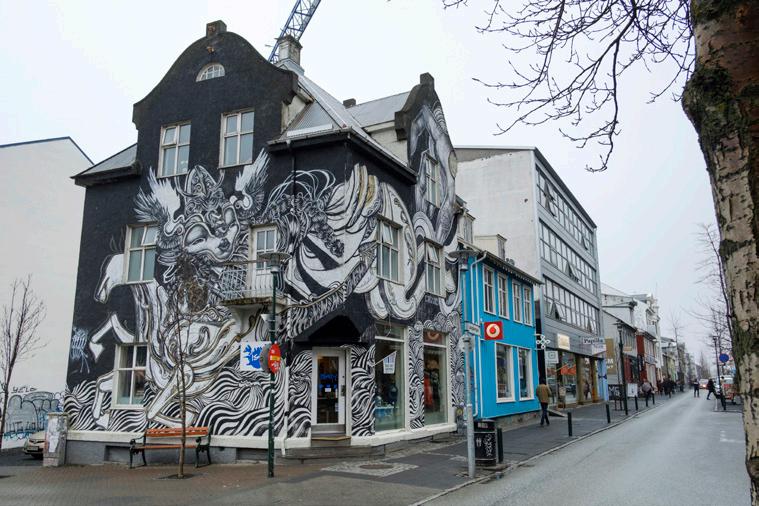


HAFNARBORG
Strandgata 35, 220 Hafnarfjorður
+354 585 5790
www.hafnarborg.is
Open: Wed-Mon 12pm-5pm
HANNESARHOLT CULTURAL HOUSE
Grundarstíg 10, 101 Reykjavík
+354 511 1904
www.hannesarholt.is
HOFSSTAÐIR HISTORIC PARK VIKING LONGHOUSE
Kirkjulundur, 210 Garðabær
+354 525 8500
www.gardabaer.is
MUSEUM OF DESIGN AND APPLIED
ART
Garðartorgi 1, 210 Garðabær
+354 512 1525
www.honnunarsafn.is
Open: Tue-Sun 12pm-5pm
MUSEUM OF HAFNARFJÖRÐUR
Vesturgata 8, 220 Hafnarfjorður
+354 585 5780
www.museum.hafnarfjordur.is
Open: Summer daily 11am-5pm, Winter Sat-Sun 11am-5pm
THE NATIONAL ARCHIVES
Laugavegur 162, 105 Reykjavík
+354 590 3300
www.archives.is
SAGA MUSEUM
Grandagarði 2, 101 Reykjavík
+354 511 1517 | www.sagamuseum.is
Open: Daily 10am-5pm
SIGURJÓN ÓLAFSSON MUSEUM
Laugarnestangi 70, 105 Reykjavík
+354 553 2906
www.lso.is
Open: Summer | Daily 1pm-5pm, closed Mon
Winter | Sat-Sun 1pm-5pm
Closed Dec-Jan
THE ICELANDIC PHALLOLOGICAL MUSEUM
Kalkofnsvegur 2, 101 Reykjavík
+354 561 6663
www.phallus.is
Open: Daily 10am-7pm
THE ICELANDIC PUNK MUSEUM
Bankastræti 0, 101 Reykjavík
+354 568 2003
www.thepunkmuseum.is
Open: Mon-Fri 10am-10pm, Sat-Sun 12pm-10pm




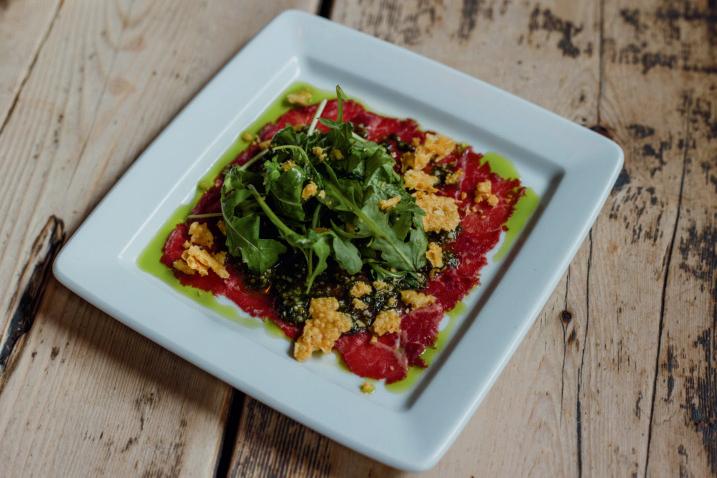

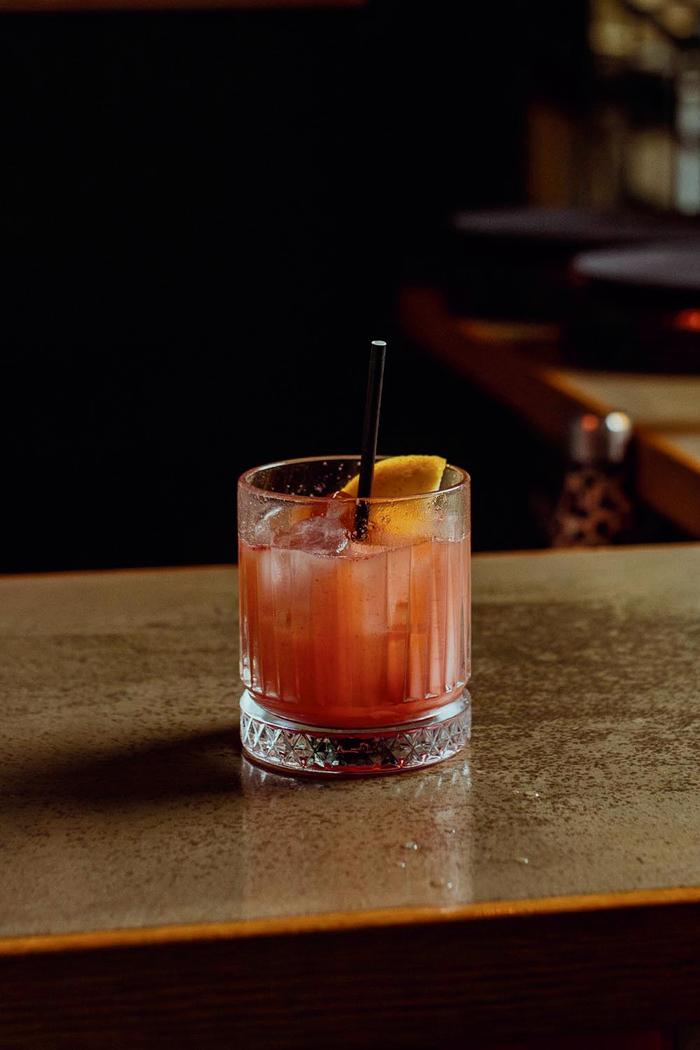


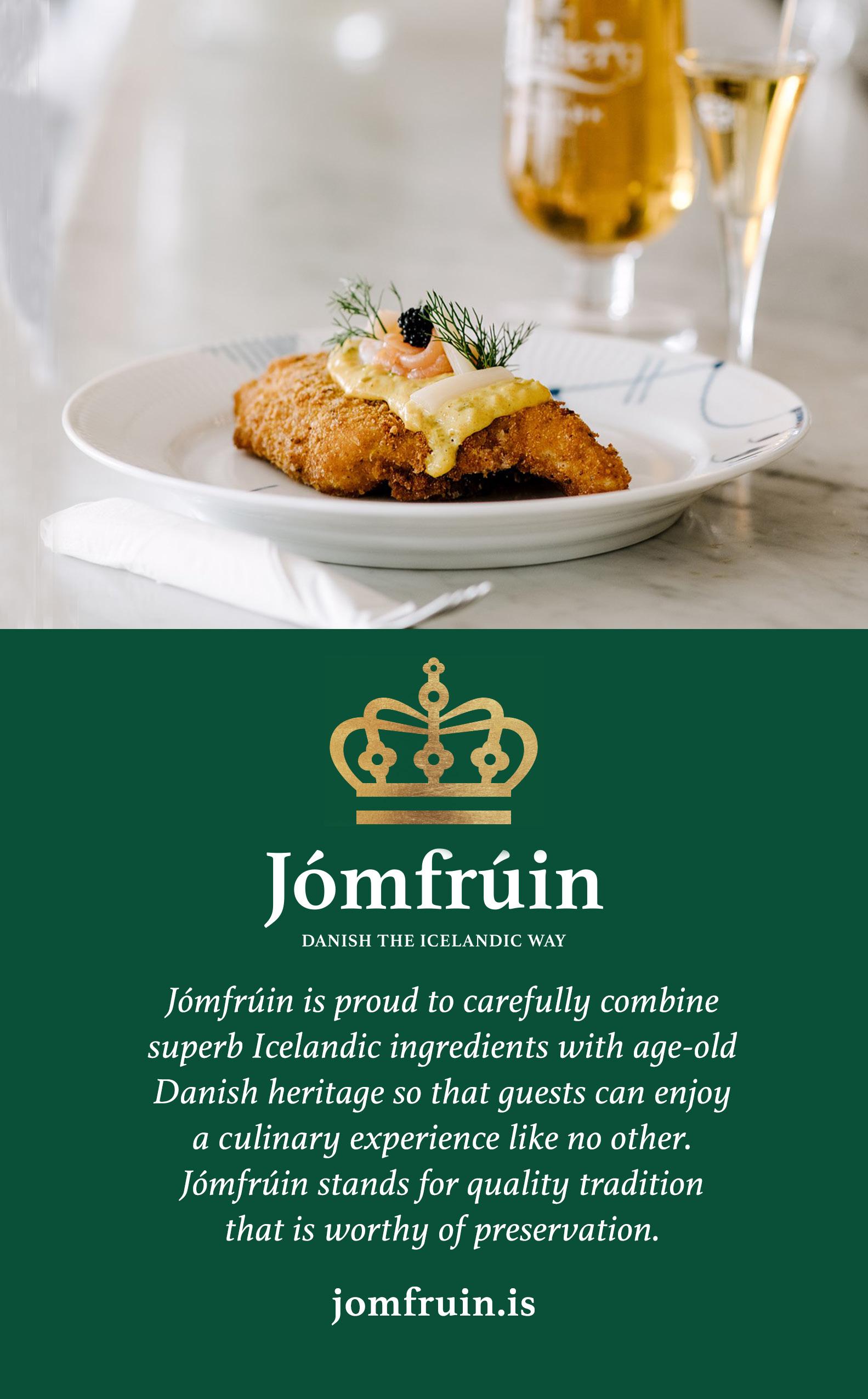


It’s easy to find something tasty to eat in Reykjavík. Fresh and seasonal Icelandic ingredients are popular, and the chefs of Reykjavík are always trying to think of new ways to prepare them, some simple and others more complex. We recommend trying everything from old-fashioned plokkfiskur (a fish and potato casserole) to the finest in New Nordic Cuisine.

The tastes and smells of another country often stay with you long after you’ve forgotten everything you’ve learned at the museums. But finding something great to eat in a new place can often be difficult. Here are some helpful tips to remember when dining in Reykjavík, if you want to make every meal count.
Traditional Icelandic food is usually centered around fish or lamb. There’s a fair share of dishes that owe their existence to a time before refrigeration; made with smoked, salted, and fermented ingredients. Many of these dishes are an acquired taste, such as the famous fermented shark and pickled ram’s testicles, and are usually only trotted out for special occasions. But dishes such as harðfiskur (fish jerky) or hangikjöt (smoked lamb) are delicious all year round.
Then there are the slightly more modern classics, such as plokkfiskur (fish and potato casserole), fish balls (like meatballs, only with fish), and kjötsúpa (broth-based clear lamb and vegetable soup). These are simple dishes, regularly served in most Icelandic homes, but they taste delicious. For desserts, the most iconic dish is probably Icelandic pancakes (crêpe-like pancakes served plain with sugar or stuffed with jam and cream).
Reykjavík’s fine dining scene is lively and innovative, ranging from Michelin-starred culinary experiences to local favourites. Since traditional Icelandic cooking is relatively light on technique (it involves a lot of boiling), a popular way to approach modern Icelandic cuisine is to focus on quality local ingredients but seek inspiration from other parts of the world on how to prepare them. The result is a melting pot of different influences. For instance,




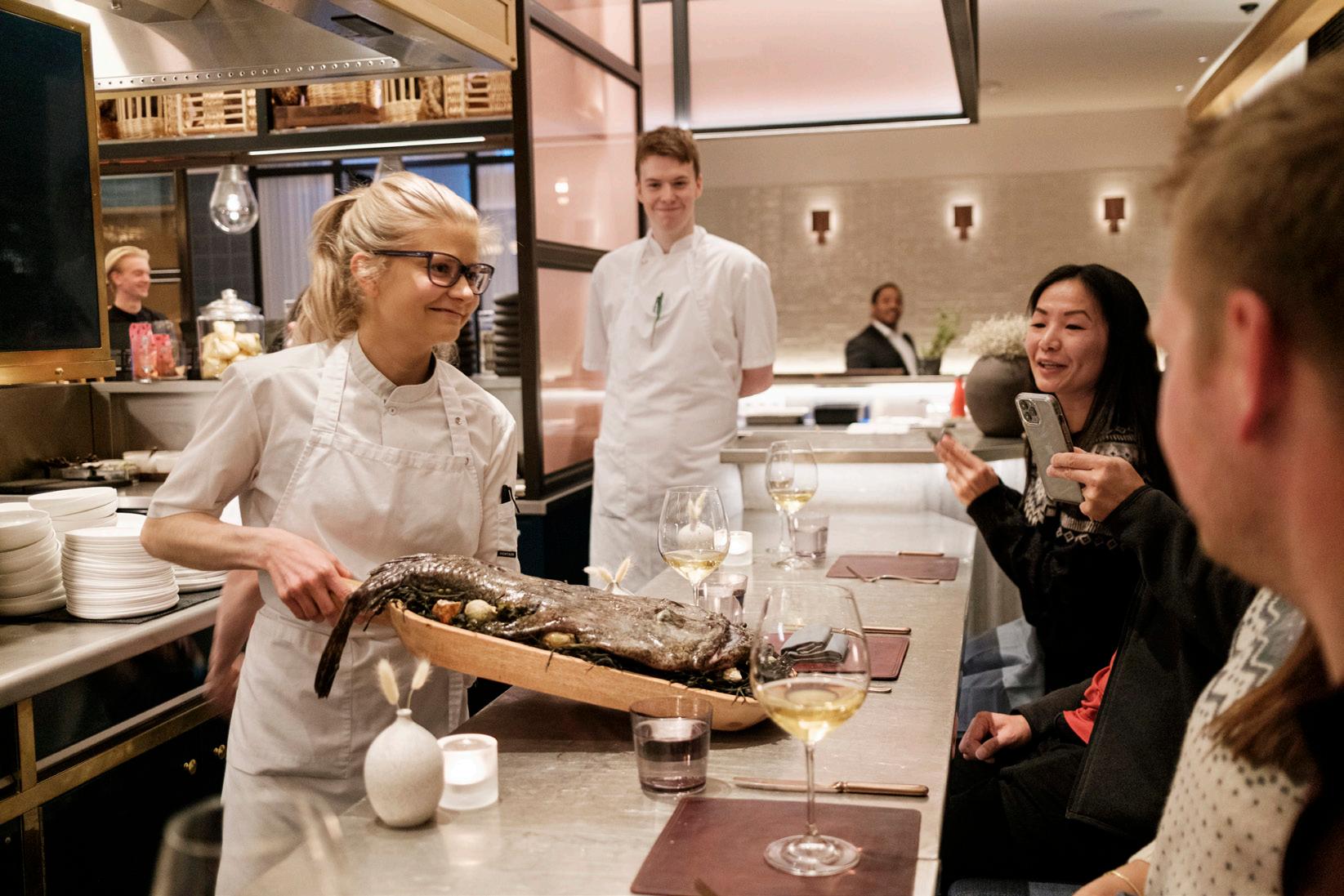
one of the most established restaurants in Reykjavík is Tapas barinn, a tapas restaurant, but their most popular dish is cured Icelandic lamb in a liquorice sauce.
Icelandic lamb and seafood are some of the best you’ll ever taste, so be sure to try them at least once while you’re here. Langoustine, or Icelandic lobster, is another thing most Icelandic restaurants have on their menu and it is some of the most delicate and delicious seafood you’ll ever taste!
Recently, restaurants like Dill and Óx, inspired by the new Nordic cuisine, have been making waves in the Icelandic restaurant scene, experimenting with unconventional Icelandic ingredients and rediscovering forgotten cooking methods. Don’t be surprised to see unfamiliar ingredients on menus, such as whale, puffin, horse, or even reindeer.
In the last decade, food halls rapidly gained popularity all around Europe. And even though they have also been popular in other Nordic countries for a while now, until a couple of years back, there were none in Iceland. But times are changing, and Reykjavík is now home to a range of modern food halls! The food halls have proven to be a great success and are popular hangouts among locals and visitors alike. If you are in the mood for street food, then make sure to stop by Reykjavík’s food halls!
Hlemmur - This former bus station was transformed into Reykjavík’s first ever food hall some years ago. Now, it’s a popular place to grab a stylish drink in a relaxed atmosphere.
Grandi - Located in Reykjavík’s old harbour district, Grandi food hall has transformed from an old warehouse for fish into a diverse place to grab some street food. It also has a great view of the water.
Borg29 - Smack dab in the middle of Reykjavík’s financial district, you’ll be rubbing shoulders with government ministers as you scarf down delicious hamburgers, gourmet fish, and more.
Posthús - One of the most recent food halls in Reykjavík, Posthús is located right downtown, near Austurvöllur square. Definitely the place to be seen while you grab a poke bowl!


Hafnartorg Gallery - Right by Harpa opera house, this is one of the sleekest food halls in town. Get an elegant dinner here before seeing the symphony orchestra play just metres away.
Höfði - Tucked away from downtown, this food hall has a slightly less touristy vibe. Here, you’ll find Icelanders and their families grabbing pizza, Indian food, tacos, and more.
For less formal meals, there are plenty of nice restaurants in Reykjavík that won’t break the bank but still serve delicious food. The city centre has a high concentration of bistros, cafés, and gastro pubs serving sandwiches, salads, soups, and other delights, perfect for lunch or a light dinner.
Even though Iceland is famous for its lack of McDonald’s, we still have fast food chains, such as Subway, Domino’s, and KFC, as well as a few of our own. Hamborgarabúllan restaurants serve great burgers and Serrano sells delicious Ice-Mex food, to name a few. Lemon, a juice and sandwich place and Local, a chain of salad bars, are perfect if you’re looking for healthier options.


Finally, there are great sushi restaurants in varying price ranges. Iceland is actually one of the few places in the world that rivals Japan for access to fresh fish!






NEW NORDIC FOOD, ICELANDIC STYLE?
Delicious products straight out of Icelandic nature are finally getting the attention and care they deserve and taste better than ever!
Reykjavík’s restaurants tend to have at least one dish that’s a bit surprising. If you’ve never tried horse, now’s your chance!
PLOKKFISKUR?
Decidedly non-glamorous but consistently delicious, this fish and potato stew is usually served with dark and sweet rye bread.
LANGOUSTINE?
If plokkfiskur is not glamorous enough for you, try Icelandic lobster. Delicious in soups, sandwiches, or just served on its own with heaps of garlic butter!
THE ICELANDIC HOT DOG?
It’s a cultural institution, so get “one with everything,” ketchup, mustard, remoulade, and two kinds of onion, fresh and fried.

ICELANDIC LAMB?
Icelandic lamb is in a league of its own, tender and succulent.
KJÖTSÚPA?
Icelandic meat soup at its most basic is a clear broth with whole pieces of lamb and vegetables, but every Icelander follows their own (or their mother’s) recipe.
You’ve probably heard of this one; despite its reputation (and the smell), the shark meat is neither rotten nor putrid, but rather fermented.
ICELANDIC CRAFT BEER?
Stop by Kaldi Bar for a taste of Kaldi beer, MicroBar for craft beers from microbreweries all over the world, or any of the city’s beer bars and taste the variety of beverages produced in the country!
ICE CREAM?
The classic is soft-serve ice cream, served with all the sauces and toppings you can imagine, but gelato-style ice cream is also gaining in popularity.
• Reservations are recommended, especially for fine dining, and during weekends and the summer season.
• In bistros and cafés, reservations aren’t necessary or even possible in some places, but it never hurts to ask, especially for larger groups.
• Tipping is not customary in Iceland, and there is no service fee. If you want to reward exceptional service financially, that’s fine and no one will be offended, but it’s not required.
• Icelandic tap water is not only safe; it tastes the same or even better than bottled water.
• In Iceland, dinnertime is usually around 7pm or 8pm. Upscale restaurant kitchens are usually open from 6pm to 10 or 11pm and a little later on the weekends, although some are open even longer.


Iceland is known for the northern lights, the midnight sun, glaciers, and... coffee? Yes, really! The Nordic nations are some of the biggest coffee drinkers in the world, and Icelanders are no exception. The Icelanders’ love of the magic beans is evident by the sheer number of cafés in Reykjavík.
The first written documentation of coffee in Iceland is from the 18th century when the tradition was brought to Iceland by way of Denmark, our overlords at the time. For some years, coffee drinkers were limited to the elite who had connections to Denmark, but in the 19th century, most average Icelanders had their first taste of coffee (although it was still a luxury item). By the 20th century, however, coffee was an integral part of the household, and every farm in Iceland was roasting and grinding its own coffee beans. Serving strong coffee and lots of it was a point of pride, especially since coffee beans were relatively expensive, categorized as “colonial goods,” and revered appropriately as such. Any offer of coffee was likely to be met with a polite and humble, “Sure, just ten drops, please.”
In 1958, Café Mokka opened its doors on Skólavörðustígur in Reykjavík, when the city was just beginning to blossom into the cosmopolitan city it is today. It was a turning point in Iceland’s coffee culture as it was the first café in Reykjavík to serve Italian-style
espresso drinks. Today, of course, most cafés have a large gleaming espresso maker, although some coffee aficionados swear by the more traditional methods of brewing.
Speaking of Italian-style coffee drinks, the cafe latte is surprisingly controversial in Iceland, in some ways as a direct result of Café Mokka. Mokka has, ever since it opened, allowed artists to display their works on the walls and attracted an accordingly artistic crowd. It became synonymous with the experimental, modern art of the time it opened, which was hugely controversial for the newly independent nation. To this day, the cafe latte is a symbol of the rift between the hardworking, drip-brewed-coffee-drinking sailor and the cerebral, latte-sipping artist.
Whichever group you identify more with, getting a cup of coffee in Iceland – whether it’s in the morning, afternoon, or after dinner – is highly recommended (and don’t be afraid to get a latte if you want one).
Coffee is good on its own, but coffee and something sweet to go with it is even better! Getting invited for coffee at someone’s home usually means that you get a spread of pastries to go with your cup.
Traditional Icelandic pastries are usually on the simpler side, but that doesn’t make them any less delicious! Try kleinur (a cardamom-flavoured twisted donut), pönnukökur (crêpe-like pancakes served either plain with sugar or stuffed with whipped cream and jam), or waffles (that also get the cream and jam treatment). Most cafés also serve slices of hnallþóra (fancy cakes, named after a character from Icelandic literary history famous for serving a multitude of cakes at coffee time) that go great with a cup of coffee.


Tasty and fun food made with fresh and local Icelandic ingredients
We offer a unique selection of Icelandic beer – 20 bottled, ten on draft, and artisan cocktails to enjoy alongside the food.


Drop by

or










Reykjavík nightlife is famous, even infamous, depending on your point of view. While Icelanders have always known how to party, the bar scene in Reykjavík has done a lot of growing up in the last few years, with several dedicated beer bars opening their doors, as well as ambitious cocktail bars, serving up delicious concoctions.
From elegant bars, gastropubs and and dive bars, Reykjavík has it all! Many bars in Reykjavík have a happy hour as well, meaning that you don’t have to break the bank to have a night out. Real craft brew fans can even book a pub crawl tour, where a local will show you around some of the best bars in Reykjavík. Whether you’re just looking to grab a beer with some friends and watch the game, or experience a unique new concoction by some talented mixologists, you’re sure to find what you’re looking for in Reykjavík.
Whether you want to have a beer in the afternoon, head out for a drink in the evening, or dance till the morning comes, the liveliest bar scene in Reykjavík is in the city centre, on and around Laugavegur and Austurstræti. Many bars double as cafés and bistros (and even triple as venues for concerts and other events),
simply turning up the music as the night progresses. Closing times differ depending on the atmosphere of each drinking establishment, but the rule of thumb is that bars must close at 01:00 on weekdays and no later than 04:30 on weekends. Some bars close earlier. The most popular drink is beer, and there’s plenty of good beer to be had, but Reykjavík is also having a cocktail renaissance, so ask your bartender about the bar’s specialties!


Believe it or not, beer was prohibited in Iceland for most of the 20th century. It was legalized on March 1, 1989, and March 1 is now the unofficial holiday of Beer Day! Ever since that day, Icelanders have been making up for lost time, and beer is now the most popular alcoholic beverage in Iceland. Perhaps more importantly, Icelanders also started brewing their own (delicious) beer. For the first few years, easily drinkable lager beers ruled the roost, but in the past few years, Icelanders have gotten a taste for a wider range. Have a Kaldi beer at Kaldi Bar downtown or stop by Einstök, Brewdog, or RVK Brewing Company and taste some of their extensive selection of microbrews. Einstök beer is good and widely available, and the small-batch brews of Borg brewery are always worth trying. Ask your bartender what’s new!
Icelandic liquor, which hasn’t really been known for finesse through the years, is also going through a renaissance. Brennivín, the most famous Icelandic liquor, gets a bad rap (it’s also known as Black Death); but in fact, it’s distilled like an aquavit and much like its Scandinavian cousins, can be quite pleasantly sipped with smørrebrød. It’s flavored with caraway seed. Apart from the traditional Brennivín, new creations like liqueurs made with Icelandic blueberries, crowberries, rhubarb, and even birch, are inspiring bartenders all over Reykjavík. You can also try Icelandic gin, vodka, and whisky! Finally, Icelanders are liquorice lovers, and if you share that love, be sure to check out the vodka-based Opal and Tópas shots, available at most bars in Reykjavík.


Bíó Paradís is Iceland’s first and only art-house cinema , located in the heart of downtown Reykjavík . We screen the latest independent movies from around the world , as well as classic cult films and local Icelandic films . We provide a warm, cozy environment for film lovers of all kinds - both in our three-screen cinema and in our well-stocked bar. Come join our legendary Friday Night Party screenings weekly - sometimes we Sing-Along - or just drop in for a ice-cold beer on Happy Hour every day between 5-7 pm.

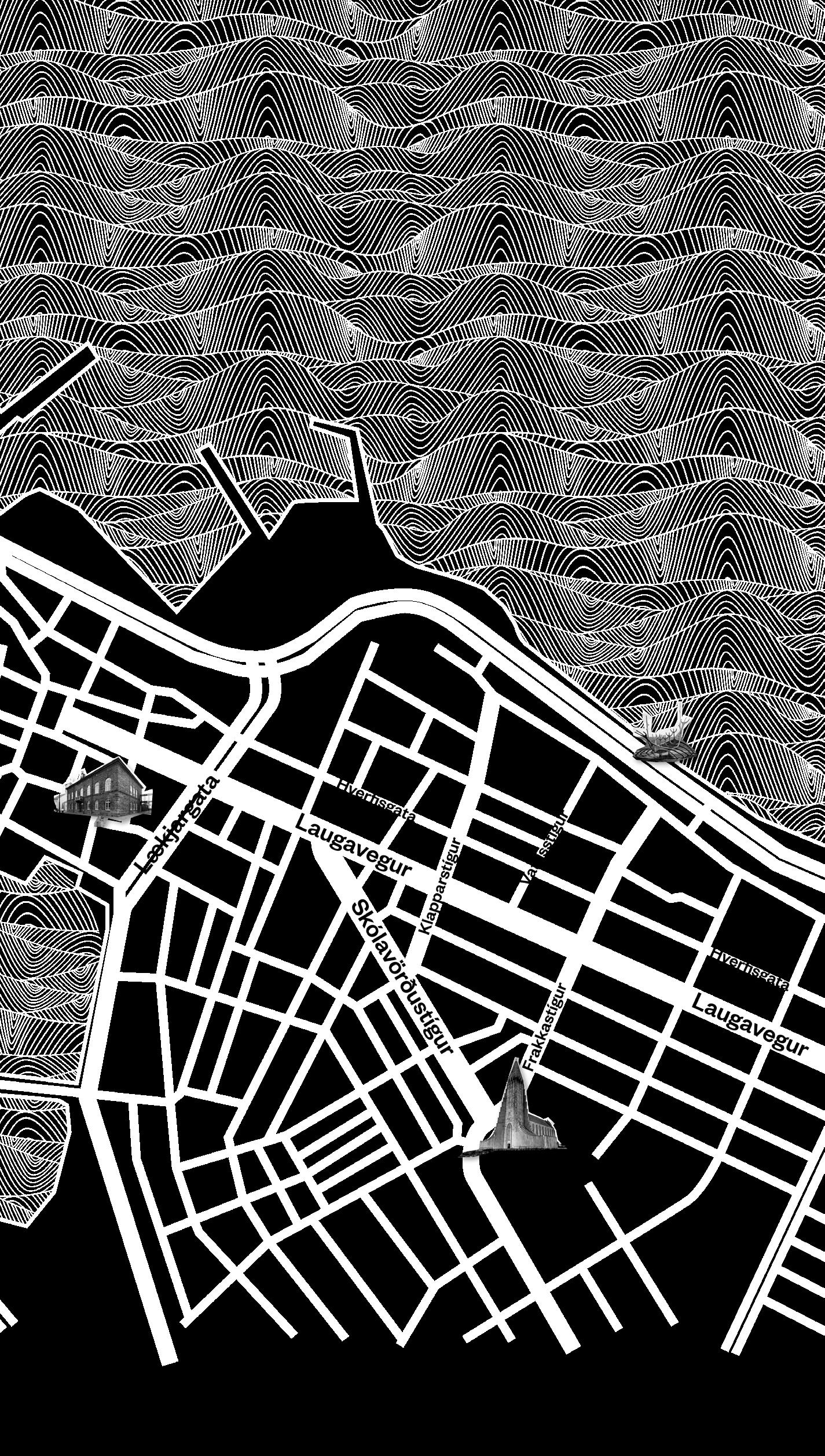


Due to Iceland’s climate and the resulting difficulties of growing a bounty of vegetables, Icelandic cuisine has been based on animal protein through the centuries. Nowadays, however, there’s a growing number of vegetarians and vegans, especially among the younger generations. Also, increasing tourism is bringing more and more people with different dietary wishes to Iceland, and restaurants are responding to the change in diet.
These days, there are plenty of options for vegetarians and vegans. Most restaurants will have at least one suitable option, and several restaurants in Reykjavík offer all-vegetarian or vegan menus. A staff favourite is Chickpea, a falafel shop right in central downtown. And of course, never be afraid to ask! Many restaurants will happily accommodate your needs.
If you’re looking for a quick meal, you might want to try a filling noodle soup, a veggie burger, or falafel wrap. These options are easily found in downtown Reykjavík and will surely keep you satisfied throughout the day!
Finding a nice bistro catering to vegetarians and vegans will not be a problem! If you’re looking for a casual sit-down dinner, check out one of the many sushi restaurants. Also, you might not expect it on an arctic island, but Iceland offers the best Indian food!

When it comes to fine dining, you will find several options to choose from. Some popular fine dining options that cater to veggie-based diets include Rok, Mat Bar, Sónó, and Sumac. Be sure to mention your dietary preferences when you book the table, and you’ll have a lovely meal waiting for you. Most restaurants also have their menus online, so check these out beforehand if you want to be prepared.


Cafés usually have a range of dairy-free options, such as soy or oat milk lattes. If you have a sweet tooth, there are ice cream parlours with vegan options, and in downtown Reykjavík, you will also find delicious vegan crêpes and cakes – served with cashew cream!
If you have access to a kitchen, self-catering is an easy and reliable option. Supermarkets in Iceland carry a range of vegan products, and even low-budget supermarkets will have plenty of options. The vegetable section might be a little more limited than what you’re used to, due to our northerly location, but it should be more than sufficient. If you don’t have access to a kitchen, you can find some prepared vegetarian/vegan dishes in the supermarkets as well, like sandwiches, salads, and wraps.
Ég borða ekki kjöt (I don’t eat meat)
Ég drekk ekki mjólk (I don’t drink milk)
Ég borða ekki mjólkurafurðir (I don’t eat dairy)
Grænmeti (Vegetables)
Kjöt (Meat)
Kjúklingur (Chicken)
Fiskur (Fish)
Mjólk (Milk)
Smjör (Butter)
Rjómi (Cream)
Ostur (Cheese)
Egg (Egg)


Icelandic nature is spectacular, with erupting hot springs, majestic glaciers, and thundering waterfalls, all within a few hours’ drive from the city. There’s so much to do, see, and experience, it would be a shame to miss it.
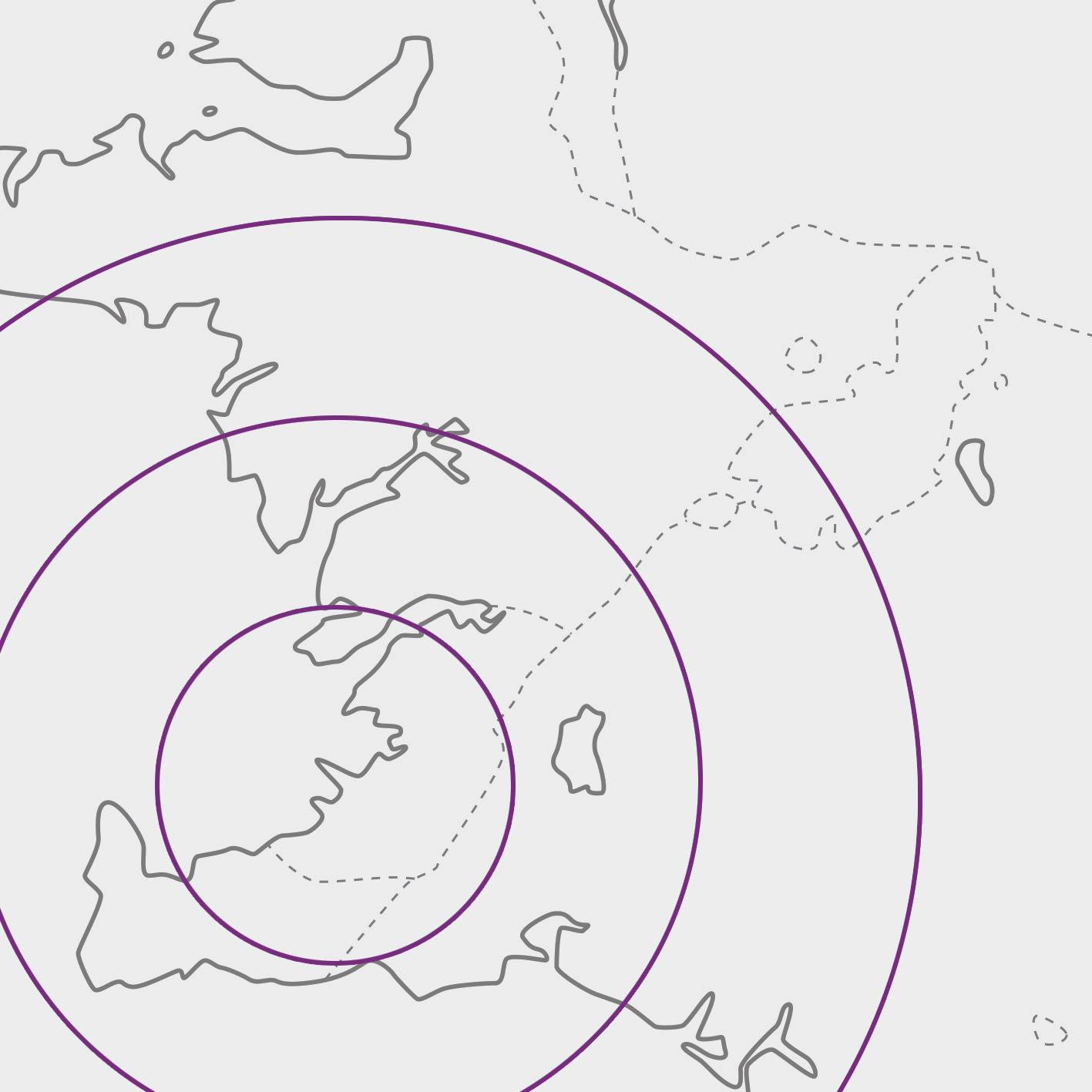
30 MIN AWAY
Mt. Esjan towers over the Reykjavík City skyline and is the locals’ favourite spot to go hiking. When you see the view from the top, you’ll understand why!
Although Icelandic winters are milder than you might expect, the people of Reykjavík still love skiing, and their favourite spot to do it is at the Bláfjöll ski resort.
Iceland’s geothermal heat is immensely powerful, and at the Krýsuvík geothermal area, you can see the effects clearly on the earth’s surface. Multicoloured hills, steam rising from the ground, and bubbling hot springs create a sight you must see to believe!
Taking a whale-watching cruise is one of the most popular tourist attractions in Iceland, and for good reason. The ocean around Iceland is teeming with cetacean giants!



One of the tallest waterfalls in Iceland, Glymur, is just a short drive away from the city. It’s only accessible by a hiking trail, but the view is well worth the hike.
Þingvellir is important from both a historical and geological standpoint. For centuries, this was where Alþingi, Iceland’s Parliament, met. But it’s also where the Earth’s tectonic plates slowly pull apart, forming cracks and crevices in the Earth.
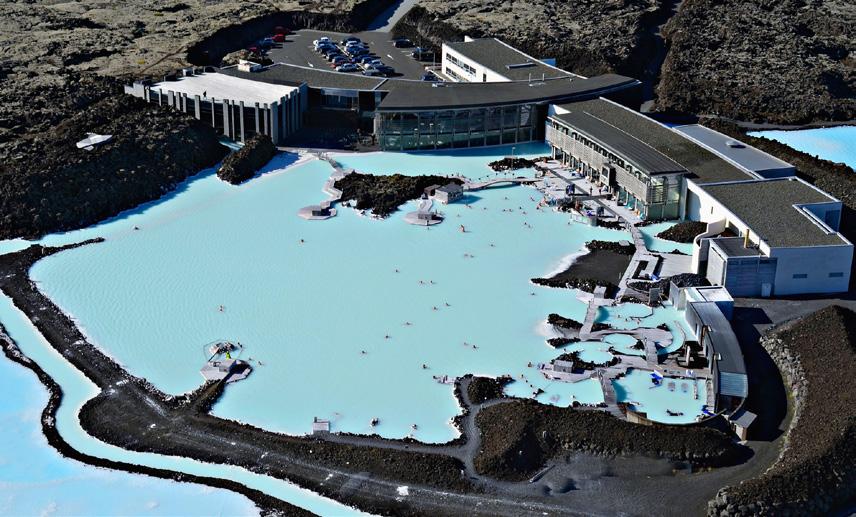
The valley north of Hveragerði is one of the most popular hiking routes in Iceland, and not just because of the beautiful nature and majestic mountains surrounding the valley. It’s mostly because of the hot springs at the end of the route, some of them at the perfect temperature for bathing! With the ongoing volcanic activity on Reykjanes, it is important to check the Blue Lagoon’s website and safetravel.is for updates and possible closures.
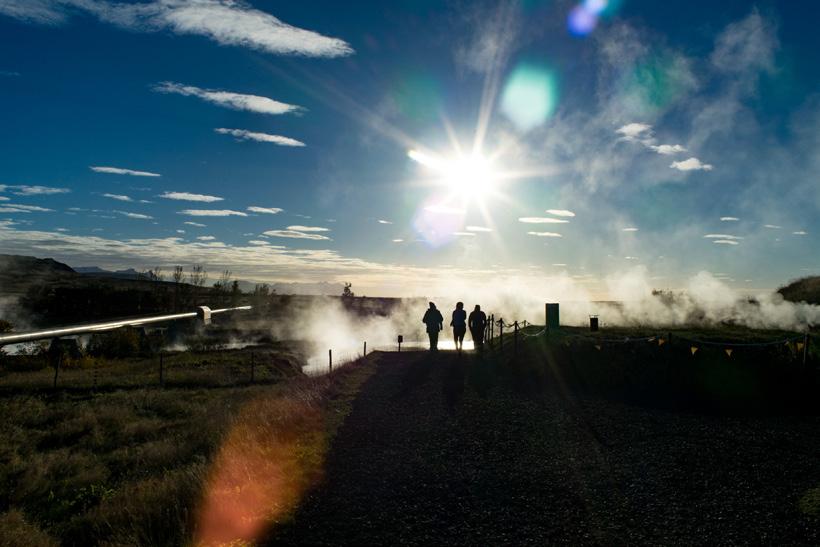
The milky blue waters of the Blue Lagoon are now one of Iceland’s most famous attractions. The mineral-rich water is pumped up from the depths of the earth and mixed with seawater to form a pool of water at the perfect temperature.
Deildartunguhver is Europe’s most powerful hot spring. It’s important to keep a safe distance from the source, as 180 litres of

boiling water gush out of the spring per second! The spring serves as the source of water for the many hot tubs in Krauma spa.
No tour of the west coast of Iceland is complete without a stop at Hraunfossar waterfall. The water streams out from underneath a lava field, flowing over red cliffs into the foaming water below, creating a mesmerising sight. Just above Hraunfossar is Barnafoss, another stunning waterfall that shouldn’t be missed.
Geysir, the original erupting hot spring, giving its name to all the geysers out there, is pretty quiet these days. Its neighbour Strokkur, however, ejects boiling water 20m in the air every 6-10 minutes.
Gullfoss is a thundering stream of water cascading down in two tiers before reaching the canyon below. The name translates to Golden Waterfall, and it’s from this waterfall that the Golden Circle takes its name!
There’s been a church at Skálholt for more than 1,000 years, and before the Reformation, it used to be the seat of one of Iceland’s two Catholic bishops.


Iceland has some of the largest glaciers in Europe, and the Langjökull glacier is just a few hours away from the city. You can go hiking or snowmobiling on the ice, and if you’re feeling particularly adventurous, you can even go inside the glacier!



The Golden Circle is the most popular day tour in Iceland and for a good reason. Not only do you get to see some of the most amazing natural and historical wonders of Iceland, but it’s also a convenient distance from Reykjavík. The Golden Circle is a 300 km looped route. It covers three main locations: Þingvellir National Park, the waterfall Gullfoss, and the erupting geyser Strokkur in Haukadalur.
Þingvellir (pronounced Thing-vet-leer) is a historical and geological marvel. Situated right where the tectonic plates separate, the rift between continents is clearly visible in the dramatic cliffs on either side of the valley. This makes for stunning landscapes, with cascading waterfalls, majestic cliffs, and fissures, filled with icy blue, clear water.
Not only is Þingvellir impressive to look at, but it also has a long history interwoven with the history of Iceland. The name translates to Assembly Fields, as for centuries, it was the meeting place of the Icelandic Parliament, founded in 930. Some of the biggest decisions in Icelandic history were made at Þingvellir. It was there that the Icelandic chieftains decided that Icelanders would convert to Christianity.






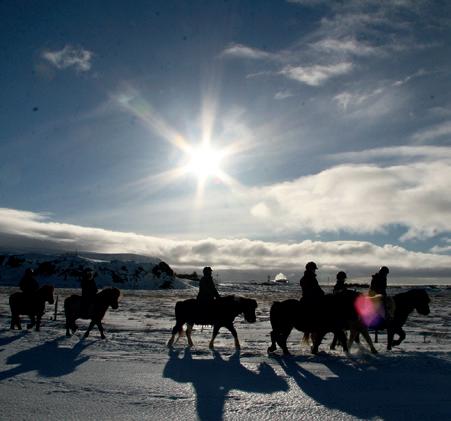







It was also where they decided to give up their independence in 1262 and where they declared independence from Denmark seven centuries later, in 1944.
Next up is Gullfoss waterfall (Icelandic for Golden Waterfall). It’s a magnificent reminder of the awe-inspiring power of nature, with a huge amount of water thundering down into a jagged canyon. The power of the waterfall was enticing to entrepreneurs in the early 20th century, and plans were made to harness it and convert it to electricity. Fortunately, people spoke up and protested destroying such an impressive natural wonder. One of the most vocal protesters even went so far as to threaten to throw herself in the waterfall. Thanks to her fight, the Icelandic government acquired the waterfall in 1940, and it has been on the state preservation list since 1979.
Geysir is an erupting hot spring (it’s actually the erupting hot spring), although these days, it doesn’t do a lot of erupting. Its neighbour, Strokkur, however, gladly puts on a show every 6-10 minutes with an impressive spectacle of a burst of hot water. The area also has several pools of water ranging in temperature from too-hot-to-touch to boil-you-alive-inseconds; some bubbling, others still and impossibly clear. After Geysir, it’s time to head back to Reykjavík or continue exploring the south of Iceland. Go swimming in a warm



The South Coast is one of the most popular places for a sightseeing day tour from Reykjavík. The area has a high concentration of diverse natural phenomena – striking mountains, glaciers, and waterfalls – with long stretches of black sand beaches and deserts, interspersed with verdant farming communities.
The road south from Reykjavík crosses Hellisheiði heath, where you can stop at the Hellisheiði power plant and geothermal energy exhibition. From there, you travel down into the valley around Hveragerði, a town built on a geothermal hotspot. Close by is a popular hiking route to natural hot springs. There are columns of steam rising from the ground, a clear sign of the geothermal heat underground, and there’s even a restaurant that cooks food with the steam from the ground!
The south of Iceland has a lot of geothermal heat and a history of volcanic activity (ever heard of a little volcano called Eyjafjallajökull?). Stop by the Lava Centre at Hvolsvöllur to
learn more about the fire underneath the area. Moving on, you’ll drive past amazing mountains and valleys along the coastline until you get to the magical Seljalandsfoss waterfall. The waterfall comes down in the mouth of a cave in such a way that you can walk the whole way around it.
This is followed by Skógafoss, an even larger, more powerful waterfall, right by the tiny community of Skógar, which has a fascinating local museum and a couple of hotels. This is also where the mountain trail of Fimmvörðuháls starts off, a popular but long hiking trail leading up to the Þórsmörk preservation area. Be careful to check the


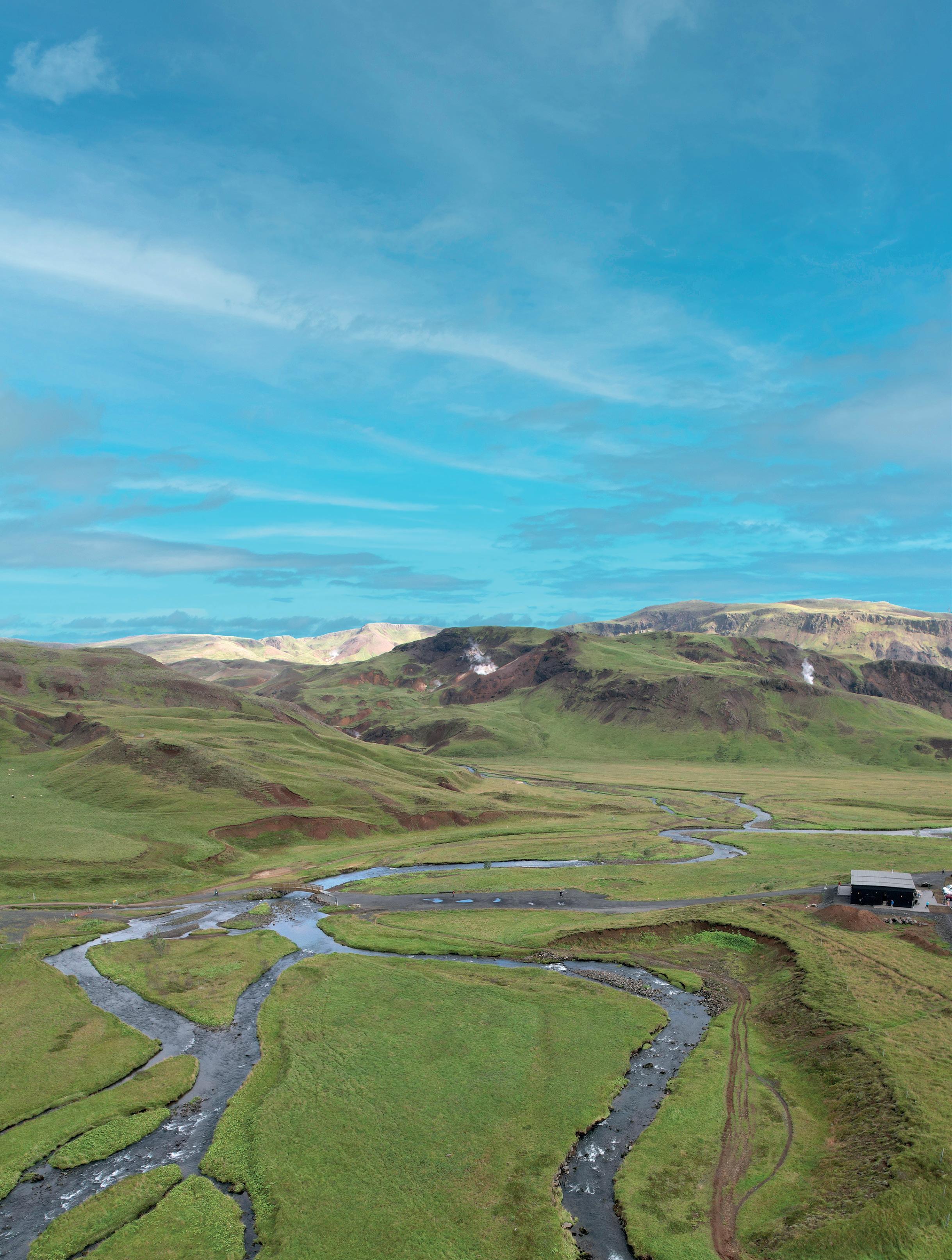




conditions and get advice before attempting the hike.
Further along is the town of Vík, where you can walk along the Reynisfjara black sand beach with a view over the strange rock formations of the coast. IMPORTANT: stay away from the water! The riptide is EXTREMELY dangerous, and there have been several fatal accidents there. Use extreme caution when visiting this beach.
You can also visit the Icelandic Lava Show, where you can experience hot lava up close! Katla and Eyjafjallajökull volcanoes and Mýrdalsjökull glacier watch over the south coast of Iceland, and you could easily throw in a guided tour of the glacier or a hike to spice up your journey. If you decide to do that, just be careful and take precautions, ask advice, always let someone know where you’re going, keep your phone charged, bring warm clothes, and make sure you have good shoes!

You shouldn’t leave Iceland without experiencing the wonders of its glaciers. Glacier hiking is the best way to get up close and personal with Iceland’s elements. Visiting the glaciers under the guidance of a professional glacier guide is a safe way to explore the rugged ice crevasses, sinkholes, jagged ridges, ice walls, and amazing ice formations.
The otherworldly Jökulsárlón glacial lagoon, surrounded by a black sand beach, is a sight well worth the trip. The ice-cold water is filled with icebergs that have broken off the vast Vatnajökull glacier, the largest glacier in Europe. The blue and black chunks of ice look great from afar, but even better up close, so consider taking a boat tour on the lagoon (May-October).
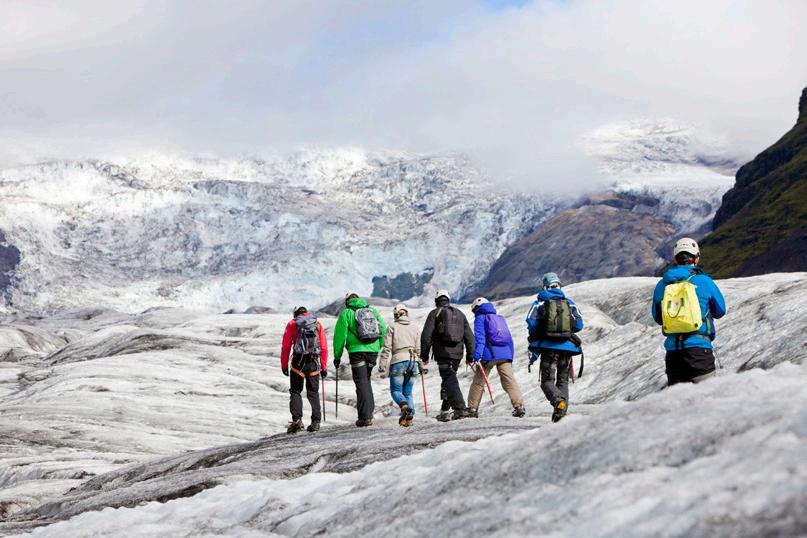

There’s a lot more to the area than the airport; the Reykjanes peninsula contains a host of interesting attractions and beautiful nature that’s too often overlooked by travellers.
The peninsula landscape is dramatic, with endless lava fields and mountains in the distance, geothermal areas, and cute little villages. Starting out from Reykjavík, you’ll drive through the town of Hafnarfjörður, home of elves. After a stop in Hafnarfjörður, we recommend leaving the main road to Keflavík and heading through the lava fields towards Kleifarvatn. The lake is very pretty and surrounded by a beautiful landscape, a perfect place for a walk if the weather is nice. Continuing, this route leads you to Krýsuvík, a geothermal hotspot where you’ll find numerous bubbling mud pools and steaming fumaroles, surrounded by multicoloured hills, affected by the intense heat. From there, you might head east to Strandakirkja church, which, according to legend, was built by a sailor who was stranded just off the coast but was

rescued by an angel on the promise he would build a church where he washed ashore.
After this, travelling west along the peninsula, you can stop to see the site of the most recently active volcanoes in Iceland. After producing hundreds of earthquakes, a fissure vent opened at the base of Fagradalsfjall mountain in March 2021, and the lava continued to flow, occasionally bursting metres into the air, until September of that year. The earthquakes began again in the early summer of 2022, and a new fissure opened in Meradalir, very close to Fagradalsfjall. The eruptions have attracted thousands of visitors, both Icelanders and tourists. However, things took a turn in late 2023 when volcanic activity finally affected residents on the peninsula. The town of Grindavík was evacuated in November, and the town suffered serious damage due to earthquakes and the unsteady earth. A new eruption in January 2024 caused lava to creep into the town, setting fire to three residential buildings. Eruptions continue to occur in the area. Although the eruption sites from 2021 and 2022 are worth the visit, the area may be closed to travellers. Check out safetravel.is for more information.
You can stop by the Gunnuhver fumarole, where legend has it the murderous ghost

Gunna was trapped by a priest using only a ball of yarn. In the same area, you can visit Reykjanesviti lighthouse and walk along the dramatic rocky coastline, with a view over the unique island Eldey. Travelling north from there, you come to the Bridge between Continents at Sandvík.
Iceland is located on the rift between the American and Eurasian tectonic plates, and there are a few places in the country where that rift is visible on the surface.

Next up is Keflavík, a town heavily influenced by its proximity to the US Army base, which is now vacant. Keflavík is known as the birthplace of Icelandic rock and roll and was home to the legendary band Hljómar, the Icelandic Beatles. Honouring this heritage is The Icelandic Museum of Rock ‘n’ Roll, which showcases several artefacts from the musical history of Iceland. The highlight of a trip to the Reykjanes peninsula for many people is relaxing in the famous Blue Lagoon spa on your way back to the city.
The luxurious Blue Lagoon spa is one of the most recognized landmarks in Iceland. The characteristic turquoise blue waters are the result of a happy accident. While drilling for hot water, a way opened for naturally hot water from deep underground to flow to the surface, but the silica in the water settled in the lava, blocking drainage. The underground water, naturally rich in minerals, mixed with cold seawater, creating a pool of milky blue water at the perfect temperature for bathing. Since the water continuously streams from underground, the water is completely replenished every 40 hours, keeping the water naturally clean and making chemical cleaners unnecessary. The Blue Lagoon has been evacuated and closed several times due to volcanic activity. Check the website and safetravel.is for more information.

ÍSLENSKI BARINN INGÓLFSSTRÆTI 1A 101 REYKJAVÍK www.islenskibarinn.is postur@islenskibarinn.is sími: 517 6767






If the crowds on the South Coast and the Golden Circle are not your thing, a tour of the west coast of Iceland might be just the ticket. The area has its share of natural wonders, with majestic waterfalls and deep lava caves, as well as a rich historical heritage.
About an hour north of Reykjavík is Borgarnes, a charming little town with cosy restaurants, a watery paradise of a swimming pool, and fascinating museums. The Settlement Centre is dedicated to the Viking settlement of the area and the story of Egill, son of Skallagrímur, a fierce Viking and clever poet who settled in the area and whose life was immortalised in one of the most famous medieval Icelandic sagas, Egil’s saga.
The swimming pool is a popular destination for locals and visitors alike, offering various amenities to enjoy. It includes an Olympic-sized

outdoor swimming pool, an indoor pool, three hot tubs, a wading pool, a steam bath, three waterslides of varying sizes, and a gym.
Close by Borgarnes is Deildartunguhver, the most powerful hot spring in Europe. You can see boiling hot water gush from the ground, steaming and bubbling powerfully. Nearby is the luxurious Krauma spa, where you can relax in a blend of spring and glacial water that creates the perfect temperature. After relaxing in the geothermal water, stop by Krauma’s restaurant to taste local produce and ingredients.

Krauma is a natural geothermal baths & spa at Deildartunguhver, Europe’s most powerful hot spring.
To maximize the experience guest s can go to the relaxation room locate d in the b athing are a In the room guest s can lie or sit down and relax to soothing music and a crackling fireplace
Krauma has a total of six baths , fi ve warm and one cold .
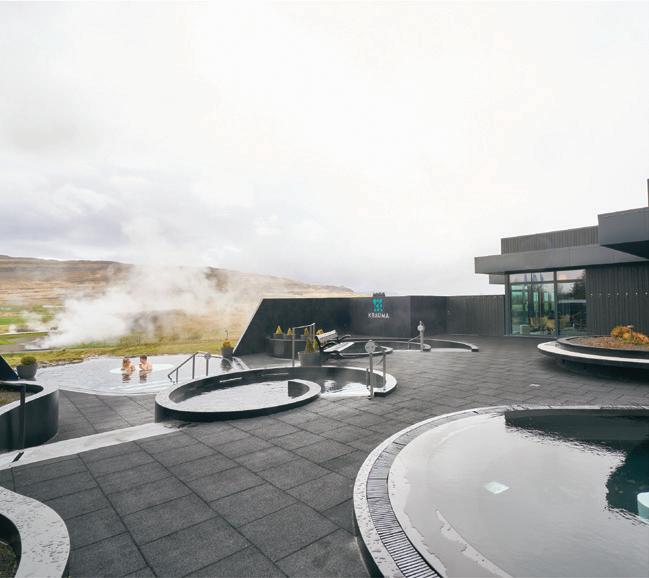
Krauma Restaurant ser ves I celandic cuisine from the freshest local farm
a wide sele c tion of drinks and snacks and is well suite d to relax and unwind at the end of the day
Make yourselves comfortable at the restaurant while taking in our spectacular view.

+35 4 555 6 0 6 6
krauma @ krauma is
Deildar tunguhver
32 0 Reykholt
S can the code for directions to Krauma




A unique contact with nature - come enjoy a steam bath on top of a hot spring and relax in our open air geothermal baths
Experience our Geothermal Bakery, daily at 10:15 (1 Jun - 30 Sept) , 11:45 and 14:30.
Geothermal Baths BOOK YOUR TICKET HERE



A little farther along are Hraunfossar, the Lava Waterfalls. This remarkable waterfall consists of several little streams of water, flowing out from underneath a sheet of solid lava! A short walk away is another waterfall, the thundering Barnafoss.
Víðgelmir, Iceland’s biggest lava cave by volume, is a lava tube formed during a volcanic eruption when the magma started to cool on the surface, but there was still a hot “river” of magma flowing beneath it. Then the magma flow stopped, leaving a hollow cave beneath the cool crust on the surface. A tour of the cave can be booked in advance. Nearby Surtshellir, similar in nature, is Iceland’s longest lava cave.
For an adventurous soak in Iceland’s nature, check out the Húsafell Canyon Baths. The secluded baths are accessible by a short hike, making the soothing soak even more rewarding. Complete with a spectacular view of the surrounding canyon, mountains, and glaciers.
If you drive farther along, you’ll get to Langjökull glacier, the second largest glacier in Iceland. Glacier hiking is great fun, but if you’re an adrenaline seeker, a ride on a snowmobile on the glacier is a must. If you’re particularly adventurous, you can even go inside the glacier by booking a tour with Into the Glacier, a company that created a man-made glacier cave. Carved into the oldest part of the glacier, this is an opportunity to see what the glacier looks like from the inside!
If you want to take the scenic route back to Reykjavík, skip the tunnel under Hvalfjörður bay and drive around the fjord. On the way, you can see an old whaling station, a remnant from when whaling was widely practiced, or visit a museum dedicated to the US Army’s occupation of Iceland during World War II. You can also visit a working farm at Bjarteyjarsandur or hike to the second-tallest waterfall in Iceland, Glymur.
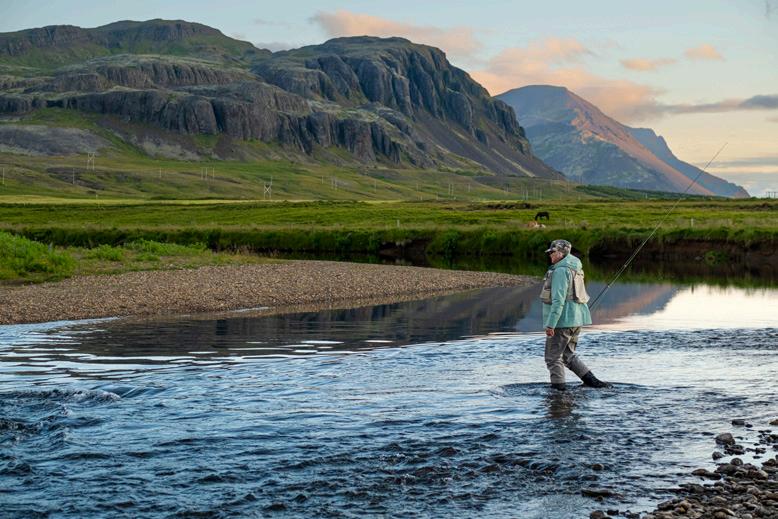


The Snæfellsnes Peninsula offers a stunning array of landscapes in Iceland, showcasing waterfalls, caves, black and yellow beaches, cliffs, mountains, lava fields, and the majestic Snæfellsjökull glacier.
On the way to Snæfellsnes, you’ll encounter the distinctive Eldborg crater. This oval-shaped crater rises 60m from the surrounding lava field and spans 200m from side to side. You can walk up the crater walls and explore its unique formation. Eldborg, meaning “Fire Castle,” derives its name from its picturesque shape resembling castle walls shaped by the flowing lava beneath it.
Close to Eldborg are the stunning basalt columns of Gerðuberg cliffs. Basalt columns are hexagonal formations formed if volcanic basalt cools rapidly. Gerðuberg is easy to spot from the road.
Arnarstapi is a picturesque little fishing village which is more or less completely abandoned in the wintertime but fills up with fishermen and travellers in the summertime. There are some incredible rock formations by the harbour and various species of birds nest there in the summer. A short walk from there, there’s a huge sculpture of half-troll Bárður Snæfellsás.
From the sculpture, it’s a pleasant, easy 2.5km hike along the shore to Hellnar, the next village where you can visit the Baðstofa cave.
Around this time, you’re getting close to Snæfellsjökull glacier. Underneath the glacier’s ice is an ancient volcano, which last erupted 1,800 years ago. The crater of the Snæfellsjökull volcano is famously the starting


EASTWEST provides exceptional smaller group tours and private tours so you can enjoy all Iceland has to offer. Our drivers/guides deliver travel experiences of the highest quality in a prime fleet of Mercedes-Benz Sprinters with leather seats, USB connectors and onboard WIFI.



In the heart of the South, you’ll find Selfoss where 13 historic buildings have been brought back to life. Explore the story behind Iceland’s first new old town as you visit the many shops and restaurants in our cosy town centre.

point of Jules Verne’s Journey to the Centre of the Earth, through which the team enters the Earth’s hollow centre. It’s also the titular glacier from Halldór Laxness’s Under the Glacier and rumoured to be a favoured landing spot for aliens. Most importantly, it’s stunning to look at.
Within Snæfellsjökull National Park, you will find Vatnshellir cave. You need a guide to go in, but it’s well worth planning ahead. The 45-minute tour takes you about 35m underground where you will see amazing colours and rock formations.
You may have heard of the black sand beaches of Vík. Well, Djúpalónssandur is similar but different. It’s a black beach, but full of little black pebbles instead of sand. The pebbles have been eroded by the ocean until they’re smooth and round and are also called the Pearls of Djúpalón.
PLEASE NOTE: Be careful and don’t go too close to the water there. There is a powerful rogue wave which can be dangerous, even fatal.
You might recognise Mt. Kirkjufell as a scenestealer from the hit TV show Game of Thrones, but if not, it’s also gained some internet fame lately for being one of the most beautiful mountains in the world. It’s hard to disagree – it is pretty perfect, with its distinctive shape and the ocean on three sides. The pictures speak for themselves.
The historic village of Stykkishólmur is one of Iceland’s most charming villages, full of colourful old wooden houses that give it a timeless feel. The Norwegian House, a local folk museum, gives you insight into everyday life through the ages. Be sure to check out the Narfeyrarstofa restaurant which offers a wide selection of local dishes.
The harbour is nice to visit, too. You can walk to the top of the Súgandisey hill and enjoy the view of the town. You can also go on a cruise from the harbour to explore Breiðafjörður bay with its countless islands or take the ferry to Flatey island where you can even spend the night. This small island is famous not only for its population of puffins that arrive every summer but also for producing one of the most important medieval manuscripts in Iceland!


Reykjavík and the surrounding area offer plenty of activities as well as standard day tours. Many of these activities can be added onto day tours, making for a fuller day with more than just enjoying breathtaking nature, while other require a longer time or more dedication. There are also a few things that you can do on a whim, and that don’t even take too much time. Don’t worry, there’ll be plenty of things to do!
Snorkelling – it’s not just for the tropics anymore! Good news for everyone, from experienced divers to novice adventure seekers; the fissure Silfra is not only a world-class diving location but ideal for snorkelling tours as well. The crystal-clear water offers over 100m of visibility! Don’t miss out on floating along the fissure and seeing the amazing world underneath ours. Silfra is a world-renowned diving site, for those who want to experience it full force and have the necessary permits! (A dry suit permit is needed to dive in Silfra, but everyone can snorkel.) Several tour operators offer day tours to this location all year round.
Not only is the Icelandic horse a horse of a different colour, but it’s a horse of an entirely different genetic makeup. Having been bred in almost perfect isolation for over 1,000 years, the Icelandic horse is unique in many respects. They are notably well-tempered
and relatively small (you shouldn’t fall off, but even if you do, you won’t fall far!), though they are probably most famous for their unusual fifth gait: the tölt. Tölt is a way of walking unique to the Icelandic horse, which keeps the rider stable while manoeuvring easily over Iceland’s uneven landscape. You can find farms and companies that offer horseback riding all over the country, with several located just outside the capital.
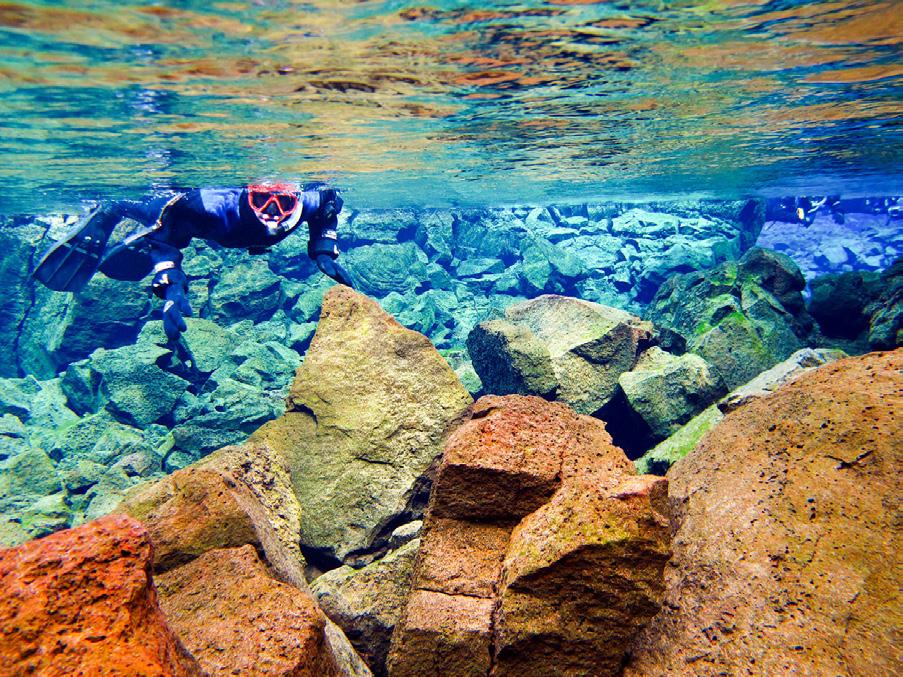


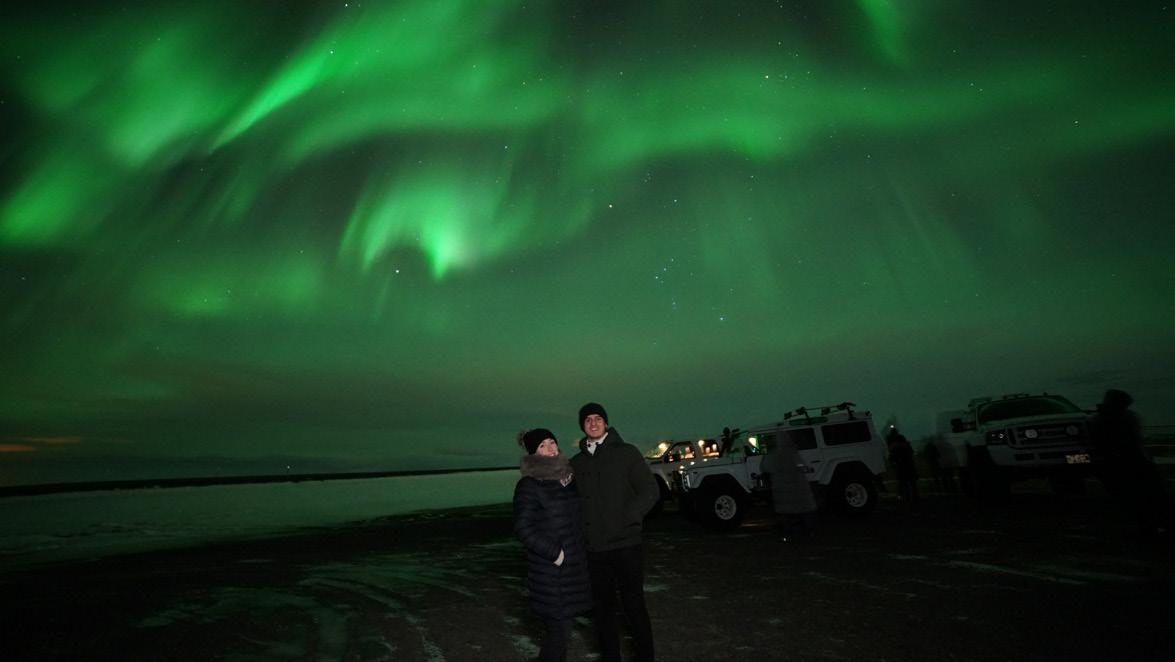
SuperJeep.is offer guided and thrilling all-day excursions through the spectacular nature of Iceland. Take a day tours with us or have us tailor make your dream tour.





ATVs, four-wheelers, quad bikes… whatever you call them, they’re always a fun ride! Just a stone’s throw outside of Reykjavík, you can take your road rage to the lava fields where these powerful machines eat up the terrain. Quad bikes open a world normally hidden from the average traveller; driving along a black sand beach or on a seldom travelled mountain road is an unforgettable experience!
Underneath the mountains and lava fields is an incredible subterranean realm that just begs to be explored. Iceland has around 500 known lava caves, but that’s a mere 5% of the estimated total of 10,000. Navigating these caves is a great way to experience firsthand how the land formed from the molten lava, cooling and freezing time forever. It’s a great adventure that everyone should try!
The ocean surrounding Iceland is a fantastic place to go whale watching. The most frequently seen cetaceans are minke and humpback whales, and seeing these ocean giants in the wild is an unforgettable experience. You can also take a dedicated



puffin-watching tour, which takes you out to the puffin colonies on the islands outside Reykjavík during the breeding season, from mid-May to mid-August. Finally, if you’d rather taste the sea’s creatures than look at them, sea-angling boat tours from the old harbour let you catch your own fish, and have it cooked for you right there on the boat!





Iceland is one of the most volcanically active places on Earth, with more than 30 active volcanoes. The most famous one in recent history is probably Mt. Eyjafjallajökull, which temporarily halted Europe’s air traffic in 2010. More recently, the volcanic activity on the Reykjanes peninsula, around 40 kilometres from Reykjavík, has created several new eruption sites, including Fagradalsfjall in 2021, Meradalir in 2022, and Sundhnúksgígar in 2023. Other notable volcanoes include Hekla, widely considered to be the entrance to hell in the Middle Ages, and Bárðarbunga, which erupted in 2014. Several super jeep excursions, scenic flight tours, and helicopter tours will take travellers out to these wonders of nature to enjoy their raw power and grotesque beauty. If seeing these volcanoes isn’t enough for you, there is always Þríhnúkagígur, the only place on earth where you can go inside the chamber of a dormant volcano.
The columns of steam rising from the geothermal plants at Nesjavellir and Hellisheiði are a magnificent sight. You can take a tour of The Geothermal Energy Exhibition at Hellisheiði, a state-of-the-art geothermal power plant. The plant shows how geothermal energy is harnessed in a sustainable manner in Iceland, a showcase for other places with access to geothermal energy. The area is also an excellent hiking and outdoor destination with trails varying in length and difficulty, and trail maps are available on-site.
Glaciers cover about 11% of Iceland’s surface. Iceland is home to the largest ice cap in Europe, Vatnajökull, in addition to other formidable ones such as Langjökull, Mýrdalsjökull, and Snæfellsjökull. You can barely go anywhere in Iceland without spotting one of these ivory behemoths in the distance, but if you want to get up close and personal, take a guided glacier hike tour, go ice climbing, or snowmobiling. You can even go on a unique tour to the heart of Langjökull glacier through a man-made tunnel with tour company Into the Glacier. Just remember, don’t try to go on a glacier without a certified guide!
Iceland’s cuisine is unique and fascinating. Smoked, cured, dried, salted – meat, fish, or bread, there are many unusual and delicious combinations to choose from. Take a guided food tour which samples the different flavors of the local cuisine in chosen locations.
Smoked lamb is delicious and dried fish chips


will surprise you, but fermented shark and an accompanying shot of Brennivín schnapps are an acquired taste! You can also visit one of Iceland’s many microbreweries and have a beer tasting session.
Reykjavík is a fantastic little city, different from other capitals in Europe. Guided tours focus on major sights, culture and history, the city’s little-known secrets, or even good places to party, depending on each tour.
There are tours on foot, bike, or bus, to name just a few. Keep your eyes peeled for the tour that appeals to you.
Iceland’s rugged and untamed nature can be hard to navigate in a regular vehicle. This is why you will see so many modified super jeeps around, capable of traversing unbridged rivers, driving up mountains, and generally getting around on rocky mountain roads. It’s easy to take such a tour up onto volcanoes and glaciers, into the untouched wilderness of the highlands, or to caves, waterfalls, and other inaccessible natural phenomena.
There’s nothing like taking scenic flights by plane or helicopter to enjoy the grand vistas of Icelandic nature. You get to experience natural wonders that aren’t easily accessible by land and get the bird’s-eye view of mountains, glaciers, and waterfalls, all in just a fraction of the time it would take you to make the trip
by car. Whether you take a scenic fight or a helicopter tour, it’s going to give you a unique sense of the scale and power of this wild and untamed land.
For those who aren’t content to just look at this island’s magnificent nature, one of the most exciting ways you can experience it is by snowmobiling on a glacier. This adventure excursion will take you on an adrenaline-filled ride while allowing you to experience the glacial landscapes in a unique and wonderful way.




Explore the breathtaking beauty of Iceland with Tröll Expeditions. From whale watching, to ice caving and even tours around Iceland.
Experience the best of what Iceland has to offer!








Reykjavík and the surrounding towns are home to two-thirds of Iceland’s population of 380,000. This city is vibrant and bubbling with artistic creativity, rich with history, and at the same time very close to nature. Whether you’re visiting landmarks like Hallgrímskirkja church, Harpa Concert Hall, and the City Hall, bathing at Nauthólsvík beach, or enjoying some of the local parks, one thing is certain – you won’t be bored in Reykjavík!

On the corner of Hafnarstræti and Aðalstræti, you’ll find the Falcon House. Icelandic falcons (Falco Rusticolus) were kept in a house on this site before being shipped to buyers overseas, namely members of the European aristocracy. Statues of falcons adorn the house to this day, reminding us of its former role.
Iceland’s Alþingi is the world’s oldest stillfunctioning Parliament. Founded in 930 AD, it predates Great Britain’s Parliament by 777 years, the US Congress by 851 years and Russia’s Duma by 976 years. Despite this, Iceland’s House of Parliament was only built in 1881, and until 1799, the Alþingi assembled outdoors at Þingvellir National Park.


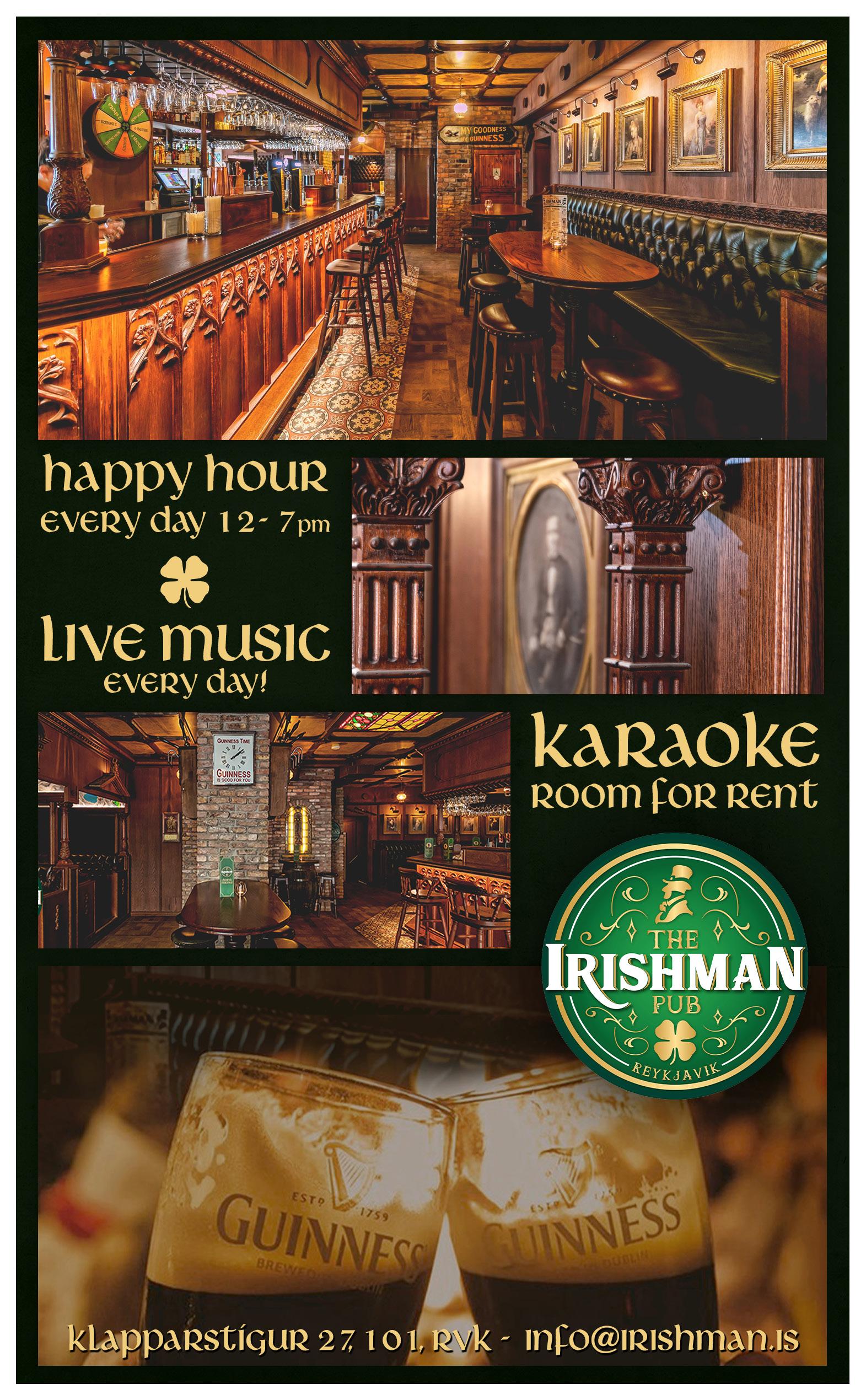

The green square in front of the House of Parliament is in many ways the beating heart of the city. It’s a meeting place for the people of Reykjavík, no matter if the occasion is a happy one or more contentious.
People will flock to the square to sit in the sun on a summer’s day, and in winter it’s the location of the city’s biggest Christmas tree. During times of political struggle, it’s also where people gather to voice their discontent with the rulers of the land.
By the city pond, Tjörnin, stands Reykjavík City Hall, a palace of glass and concrete built in 1992. The building is the result of an architectural competition, and it masterfully connects the pond with the man-made buildings on its banks. The building houses many offices, including the mayor’s, as well as an exhibition hall.



The park around the city pond is named after an octagonal tower-like structure, built to house the Reykjavík brass band. Hljómskálinn was the first building in Iceland purposely built for musicians, although it was only intended for practices, not concerts. Even though Hljómskálinn looks like a modest building today, it was controversial at the time it was built, and many considered it way too tall and a blight on an otherwise beautiful park.
The main building of The National Gallery was built in 1916 as an icehouse. Before modern refrigeration, ice was taken from the pond and kept in ice houses until it was used to keep food fresh and fish for foreign markets unspoiled. When modern refrigeration replaced the icehouses, a nightclub moved in and became legendary during the Beatles-era of music. It burned down one night and wasn’t rebuilt because of a petition by the building’s neighbours.
The National Gallery received the building in ruins, but it was rebuilt with an extension to become the stately building it is today.
Probably one of the best-preserved sections of old Reykjavík’s landscape. In 1806, it marked the eastern boundary of the city. Most of these houses were supposed to have been torn down, but a group of locals protested, and the houses were restored to their original glory.
Completed in 1771, this was Iceland’s first proper prison, designed to hold 16 felons and 54 misdemeanants – serving as such until 1816. Today, it houses the Prime Minister’s Office and serves as the meeting place for the State Council consisting of Iceland’s 12 ministers. A popular joke is that while they closed the prison, the criminals still haven’t left the building.

Now crowded with boutiques and cafés, Laugavegur (Pool Road) wasn’t always so glamorous. The street gained its name from the washerwomen who would tread through the mud carrying heavy loads of laundry to the geothermal pools in Laugardalur valley.
On the corner of Skólavörðustígur and Bergstaðastræti is a place called Gossip Ledge. In olden times, it was customary for people in Reykjavík to gather there and swap gossip. The local gossip has since moved to the city’s hot tubs, where all of Iceland’s most important discussions now take place.
One of the city’s oldest buildings is the jail Hegningarhúsið (The Punishment House), built in 1874. At the time, it was considered a

humane alternative to physical punishment, but by the time the 21st century rolled around, its lack of a gym and a cafeteria, among other shortcomings, rendered it outdated. It functioned as a prison until spring 2016.
Hallgrímskirkja is one of the most recognisable landmarks in Reykjavík, and the view from the top of the church tower is incomparable. The church was designed by Iceland’s most prolific architect during the 20th century, Guðjón Samúelsson, who was inspired by the columnar basalt that can be found in Icelandic nature. The church is named after Hallgrímur Pétursson, a 17th-century minister, whose poetry is one of the most important in Icelandic literary history. He wrote an epic 50-poem hymn dedicated to the Passion of the Christ and a hymn that to this day is sung at most funerals in Iceland.








Walking through Reykjavík, especially in the city centre, you’ll notice several statues of notable Icelanders decorating parks and squares. For the uninitiated, these statues don’t mean much, but if you’re curious to know what these people have done, read on!
(1811-1879)
Born June 17, 1811, Jón Sigurðsson became the beloved leader of Iceland’s struggle for independence and separation from Danish rule in the 19th century. In commemoration of his efforts, Iceland celebrates its Independence Day on Jón’s birthday. You’ll also find this handsome fellow on the 500 ISK note.
Sculptor: Einar Jónsson
(1892-1964)
By Tjarnargata, at times obscured by the surrounding trees, stands the statue of Ólafur Thors, former prime minister of Iceland, overlooking the pond. As a young man, he followed in his father’s footsteps, noted businessman Thor Jensen, before turning his attention to politics. Easily recognisable by his hair, Ólafur was a member of parliament for almost 40 years and Iceland’s prime minister for ten.
Sculptor: Sigurjón Ólafsson



(1711-1794)
It was Sheriff Skúli Magnússon, dubbed the Father of Reykjavík, who first brought factory production to Reykjavík with the so-called Innréttingar industrial workshops, beginning the industrialisation of Iceland. On his orders, the house on Viðey island was built as his official residence.
Sculptor: Guðmundur Einarsson
(1770-1844)
This humble son of an Icelandic woodcarver settled in Denmark and became one of the most sought-after sculptors in Europe, working for royalty, aristocrats, and renowned collectors. He even made a sculpture for St. Peter’s Basilica in Rome, but since he wasn’t a catholic himself, he wasn’t allowed to sign his work.
Sculptor: Bertel Thorvaldsen
(1807-1845)
If the pen is mightier than the sword, then this man was a Sherman tank. His sweeping romantic poetry on Icelandic nature and beauty coincided with the nation’s battle for independence. In fact, many consider his words to be one of the driving forces behind Icelanders’ insistence on independence from the Danish crown.
Sculptor: Einar Jónsson









In 1904, Hannes became the first Icelander to be appointed to the Danish cabinet as the Minister for Icelandic Affairs, and later, Iceland’s first prime minister. He was also a poet and, perhaps fittingly for an Icelander, his most famous poem is a loving ode to the storm.
Sculptor: Einar Jónsson
King Christian IX ruled Denmark from 1863 to 1906, and is known as the father-in-law of Europe, as many of his descendants married into other royal houses. In 1874, he issued a new constitution for Iceland, a compromise between Iceland’s demand for sovereignty and Denmark’s interest in maintaining the monarchy.
Sculptor: Einar Jónsson

According to Iceland’s Book of Settlement, the first permanent settler, Ingólfur Arnarson, threw his two wooden chair pillars overboard, believing that wherever they washed ashore was where he was fated to build his settlement. He’s supposed to have ended up in Reykjavík and archaeological excavations at Aðalstræti and Suðurgata streets have revealed evidence of an ancient settlement that supports this theory. Sculptor: Einar Jónsson











Christopher Columbus who? Icelanders will happily explain that it was their own Leifur Eiríksson, nicknamed Leif the Lucky, who was the first European to sail to America, some 600 years before Columbus. As a present to Iceland, America gave the nation a heroic statue of Leif the Lucky, which now perches on the highest hill in downtown Reykjavík.
Sculptor: Alexander S. Calder
Ingibjörg was the first female member Ingibjörg was the first female member of Alþingi, Iceland’s Parliament, in 1922. Her statue is also the first full-size statue of an identified female in Reykjavík and was unveiled in 2015. For most of her life, Ingibjörg worked in education and was the principal of Reykjavík’s School for Women for more than three decades. She also fought diligently for the rights of women, public health care, and progressive education.
Sculptor: Ragnheiður Stefánsdóttir
Tómas was a prolific writer and author best known for his poetry. At a time when city life was thought to be corrupting Iceland’s youth, Tómas wrote beautiful romantic poetry about the many attractions of Reykjavík. Today, the city of Reykjavík annually awards promising poets the Tómas Guðmundsson Literature Award and you can join his likeness on his bench by the pond, hoping for inspiration.
Sculptor: Halla Gunnarsdóttir

From tiny little green oases surrounded by pavement and concrete, to airy green open spaces, the city centre has some lovely and historic parks. On a sunny day, there’s nothing better than to take a picnic out to any of these spots or get an ice cream and go for a walk.
Parliament. The garden has remained virtually unchanged since its first days, although the trees are a little bit bigger than they used to be.
This is the site of Reykjavík’s first cemetery dating back to the time of Iceland’s settlement, used for over 800 years. It is believed to contain the remains of 30 generations of Icelanders. Spreading its limbs across the park is Reykjavík’s oldest tree: a rowan tree dating back to 1884. Close by is The Settlement Exhibition, where you can see remains of buildings from the 10th century.




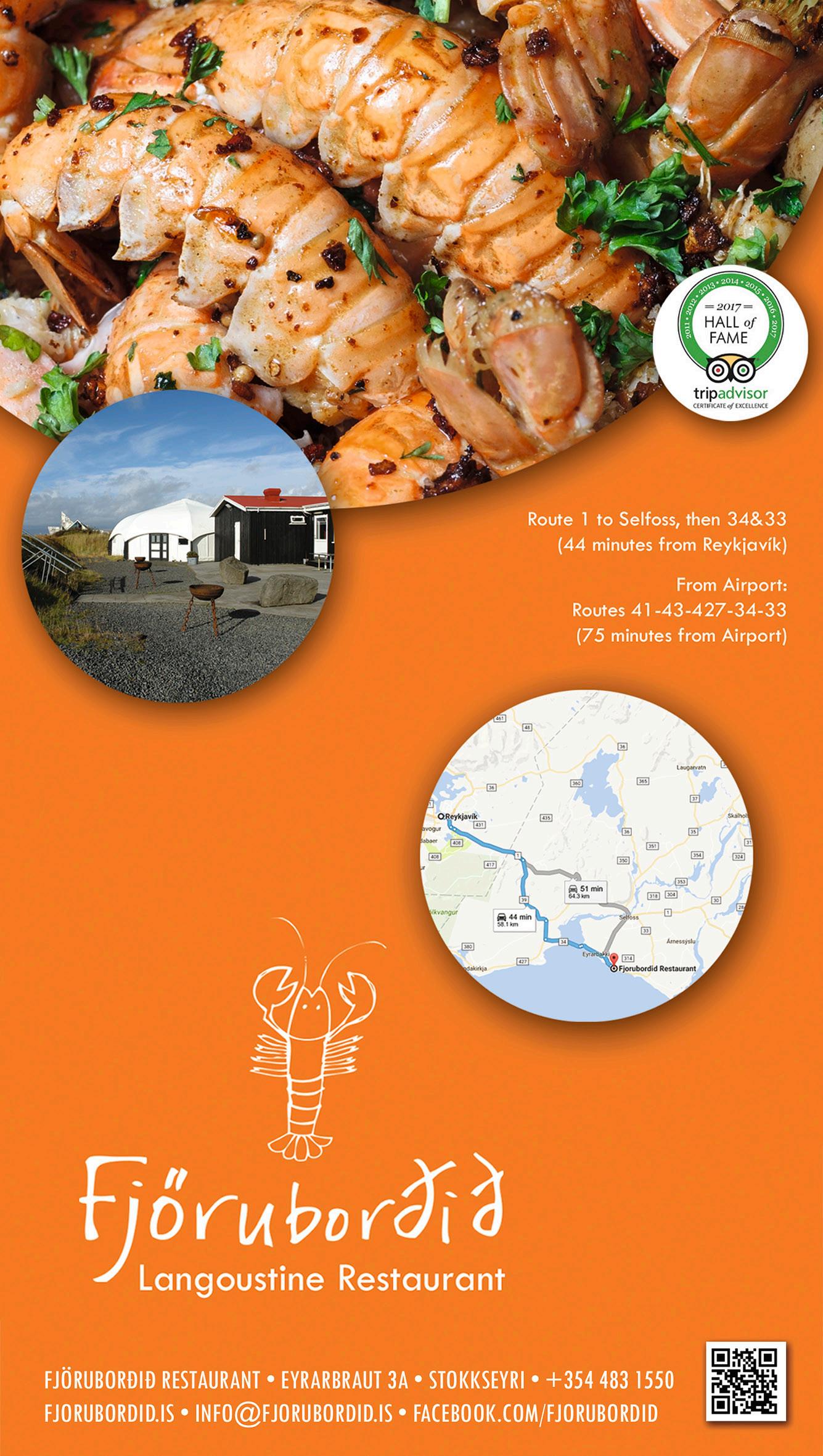

The green space on the west side of the pond is a cemetery. It was first used in 1838 and for a long time, it was the main cemetery of Reykjavík. Many of Reykjavík’s most famous sons and daughters were laid to their final rest here, most notably Jón Sigurðsson, a national hero for his part in Iceland’s fight for independence. June 17, Iceland’s Independence Day, is Jón’s birthday and each year, the day’s celebrations start with the mayor leaving a wreath of flowers at his grave.
The past meets the present on the banks of lake Tjörnin where Reykjavík’s modern City Hall is flanked by some of the city’s loveliest houses from the turn of the century on both sides of the lake. If you’re feeling pensive, have a seat on a bench on the west side of the pond, next to the statue of poet Tómas Guðmundsson, and you’ll be sure to feel inspired.
In 1914, there were 400 birch trees planted on this spot, marking Iceland’s first effort toward reforesting the island. As you might have noticed, we still have a long way to go. According to ancient manuscripts, Iceland was covered in forests when the first settlers arrived, but pastures made for the livestock that the settlers brought changed Iceland’s nature to what it is today.
With a Cinderellaesque rags-to-riches transformation, what used to be the city dump for the most part of the 19th century, is now a popular place to picnic by the lakeside. The park is named after an octagonal, tower-like structure, built in 1923 to house the Reykjavík marching band.
Originally a private garden, in 1955 it became the first large recreation area in Iceland to be specifically designed by a landscape architect.
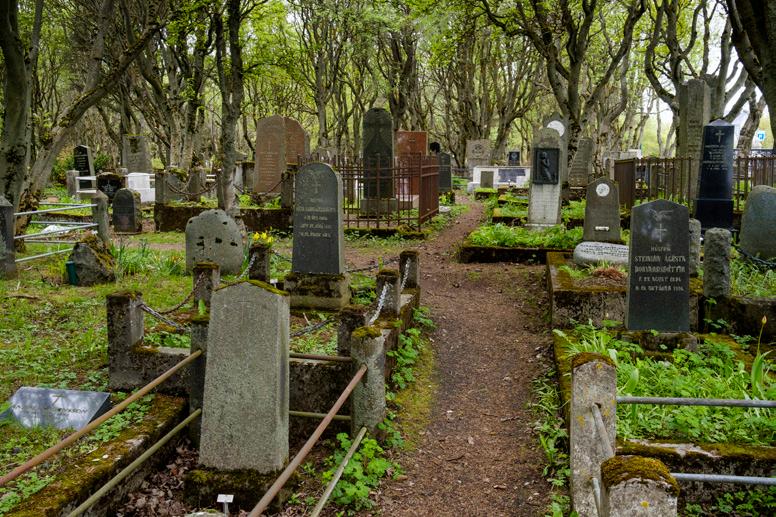


The house in the park was built by famed businessman Thor Jensen and is by many considered to be among the most beautiful buildings in Reykjavík.
One of the city’s first playgrounds. In 1925, the area was declared a public park and dedicated to mothers with young children, hence it contains a statue of a mother with a child. The statue is by famed Icelandic sculptor Nína Sæmundsson, whose work The Spirit of Achievement adorns the Waldorf Astoria in New York.
This grassy hill in the middle of the city has narrowly escaped building plans through the years. It serves as a gathering spot for the people of Reykjavík on celebrations such as June 17 and the Gay Pride festival. On the top of the hill is a statue of Ingólfur Arnarson, the first permanent settler of Iceland, who built his farm in Reykjavík.
Behind the Einar Jónsson Museum is a garden exhibiting casts of Einar’s sculptures. The fierce Icelandic national spirit is captured in these boldly rendered, allegorical figures. The museum building is the first purpose-built museum in Iceland and used to house the artist’s apartment and studio. In exchange, Einar donated all his works to the Icelandic nation. The sculpture garden is open to the public and free of charge.

8



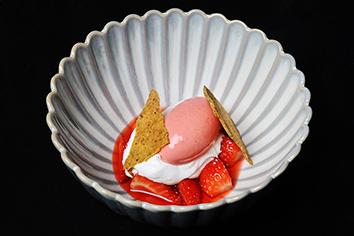
HAPPY HOUR 16:0 0 – 18:00



Biking is an increasingly popular activity in Reykjavík, both as a hobby and as a way of transportation. The city has plenty of green spaces and there’s wilderness as well, just outside the city limits. Renting a bike to explore the city is not just a recipe for a great afternoon, it’s also a great way to see a side of the city that most people don’t get to see.
Most cyclists are drawn to the less busy paths outside of Reykjavík’s centre. There are a number of paths along the coast that will take you around the Seltjarnarnes peninsula, such as Sæbraut to the north and Ægissíða to the south.
Another popular cycling area is Elliðaárdalur valley, a lush, green nature preserve centred around Elliðavatn lake and the streams that run from it along the valley. If you really feel like getting lost in the great outdoors, then hit the much larger Heiðmörk wilderness south of Elliðaárdalur. The cycling path brings you all sorts of landscapes from evergreen forests (a rarity in Iceland, you might have noticed) to scrub and lava fields.
Riding a bicycle is a great way to get around Reykjavík and to get to know the city. Be aware that some drivers are not used to sharing the road with cyclists, so take care. The city has made strides in introducing bike lanes, but you can also bike on sidewalks, walking paths, and
the street, as long as you don’t interfere with traffic or pedestrians.
Bike tours are organised year-round (bikes and helmets provided) where you’ll get beyond the city centre to discover some of the city’s extensive green spaces. If you’re up for a real adventure, rent a scooter to zoom along the coast and explore the wilderness on the outskirts of town.


Start your tour from the old harbour area in the city centre. This area used to belong to the fishing industry, but when that moved to the new harbour, there were plenty of empty buildings left. These buildings were taken over by artists, designers, boutiques, and restaurants and the area is quickly becoming one of the most interesting places to explore in Reykjavík. The view over the ocean and the mountains isn’t bad either!
Ride along the seaside all the way to the northernmost tip of the Reykjavík peninsula. The Grótta lighthouse against the backdrop of the ocean view is very picturesque, and in winter, this is a great spot for northern lights viewing.
Get back on your bike and head along the coastline on the other side of the peninsula. This is the Ægisíða coastline, a popular recreational area for the inhabitants of West Reykjavík. You’ll likely find plenty of locals running, cycling, or just walking their dogs in the fresh sea air.
The geothermal beach at Nauthólsvík is one of the most popular spots in Reykjavík on sunny summer days, and it’s connected by good bike paths. The yellow sand and heated water make for a little slice of the tropics in the middle of Reykjavík (at least if you close one eye and squint a little).

Cycle a little bit farther and find Perlan towering on a forest-clad hill (another rarity in Iceland) close to the beach. The name translates to The Pearl, which makes perfect sense for the glass dome atop six giant hot water reserve tanks. You can visit the Wonders of Iceland exhibition there, which includes a 360° viewing deck at the top with one of the best views in Reykjavík. If you’re feeling adventurous (and have the right kind of bike), try out some of the mountain biking trails in Öskjuhlíð, the wooded area that surrounds Perlan.
Finally, ride from one landmark to another, from Perlan to Hallgrímskirkja church. At 74.5m (244ft), Hallgrímskirkja is the tallest building in Reykjavík proper, and the view from the top, over the colourful little houses of the city centre, is quite charming.

Most Icelandic beaches, with their jet-black sand and water temperatures in the low single digits, have nothing in common with their counterparts closer to the equator. The goldensanded geothermal beach at Nauthólsvík in Reykjavík is the exception that proves the rule; a little piece of tropical paradise in the otherwise subarctic climate.
The North Atlantic Ocean around Iceland is much too cold to bathe in, but we do have an impressive amount of geothermal energy. Some enterprising minds saw a possibility in our situation and the Nauthólsvík geothermal beach was opened in 2001 to the delight of residents and tourists alike.
The creation of the geothermal beach was an ambitious project involving the construction of a lagoon with large sea walls, where cold seawater and hot geothermal water blend together to create the perfect temperature. Locals have welcomed this chance to bathe in the ocean and still avoid hypothermia, and on sunny days, the beach fills up with people of all ages enjoying the warm water.
The main objective of creating the geothermal beach was to establish Nauthólsvík bay as a diverse outdoor area and haven for
recreational activities, such as sunbathing, swimming, and sailing.
No matter the season, there are people enjoying the hot tubs, steam bath, and changing facilities and showers, even when the temperatures drop below freezing.

One activity has become surprisingly popular all year round: sea swimming. Cold-water swimming might sound crazy, especially in a country like Iceland, however, this extreme activity dates all the way back to the age of settlement. The oldest recorded achievement in sea swimming was accomplished in the year 1030 when Grettir Ásmundarson (a legendary character from the Icelandic sagas) swam a distance of 7km across a bay in North Iceland to the island of Drangey.









ICELANDIC LAMB IS THE FIRST ICELANDIC FOOD PRODUCT TO BE PDO-MARKED Icelandic lamb has acquired the PDO label, the highest level of geographical indication in Europe, placing it in the company of the world's best-known and most sought-after quality products.


Northern lights, snow, frozen waterfalls. There are many reasons to enjoy Iceland in wintertime. One reason stands out: skiing. Iceland is a world-class destination for skiing enthusiasts. With vertical descents of up to 1,500m and thousands of peaks and slopes, Iceland is a paradise for skiers and mountaineers. And good news for beginners, there
can hop in a car, and 25 minutes later, you’re strapping on your skis or snowboard! You don’t even have to have your own equipment, as everything can be rented on the spot.
formations characteristic of the young volcanic
Let’s say you’re standing in the city centre on a beautiful winter’s day when you get the sudden glide down over the fresh snow of a mountain

Bláfjöll is a popular ski area, conveniently situated just half an hour outside of Reykjavík. It’s the largest ski resort in Iceland, with runs of varying difficulty levels and 14 total ski lifts. The slopes are wide and well-maintained. The longest is 2.5 km and has an elevation difference of 240 m. The most difficult is 700 m long and has an elevation difference of 200 m. With a ski rental and a ski school located onsite, you will find everything you need!
Depending on the weather and snow conditions, the season runs from January through May. Keep an eye on Bláfjöll’s website to follow regular updates about opening times.
Iceland’s majestic landscape is truly stunning, but if you’re there at night (which, in winter, stretches long into the day as well) you might even be lucky enough to see the famous northern lights. The slopes are open long into the evening, so you’ll have plenty of time for nighttime skiing down the floodlit slopes. Skiing under the famous aurora borealis is sure to be the best memory of a trip to Iceland you’re likely to have.

Enjoy a short trip with the Elding ferry service to the historic island of Viðey, situated in Kollafjörður fjord just off the coast of Reykjavík.
Apart from its ancient ruins and rich historical background, other attractions include impressive works of art by Yoko Ono (the Imagine Peace Tower) and Richard Serra (the Milestones project).
Fans of architecture will also be interested to learn that the church on Viðey is one of the oldest in the country and that Viðey House is the first building in the country to be constructed with stone.
With an extensive network of paths and
you’ll be rewarded with spectacular views of the surrounding mainland, and on a clear day, you’ll see the impressive outline of the Snæfellsnes peninsula.
In summertime, there are daily ferry departures both from Skarfabakki pier and Ægisgarður harbour, by Harpa Concert Hall. The winter service runs on Saturdays and Sundays from Skarfabakki to Viðey. Trips to Viðey are free with the Reykjavík City Card.

The Imagine Peace Tower is a work of art that represents a beacon of world peace by legendary artist, musician, and peace advocate Yoko Ono.
The work is designed in the form of a wishing well from which a powerful beam of light shines. The words “imagine peace” are inscribed on the well in 24 different languages. The light tower is composed of a number of individual lights that join together to form a single beam. Six of the lights travel through corridors across a platform surrounding the well and are reflected upwards to the sky with mirrors. An additional nine lights shine straight up to the sky, strengthening the beam of light.
The strength, intensity, and brilliance of the light tower continually change as particles in the air fluctuate with the changing weather and atmospheric conditions unique to Iceland.
The inauguration of the Imagine Peace Tower took place during a private ceremony on October 9, 2007 on Viðey. The artwork was dedicated to the memory of John Lennon on what would have been his 67th birthday.
Since then, it lights up the evening sky annually from October 9 to December 8. It is also lit during the winter solstice for one week, on New Year’s Eve, and during the spring equinox for one week.

The electricity for the light comes entirely from Reykjavík Energy, which produces the electricity from geothermal power. The construction and installation of the Imagine Peace Tower was done by Yoko Ono, in collaboration with the City of Reykjavík, the Reykjavík Art Museum, and Reykjavík Energy.







Open every day 10:00-17:00 • whalesoficeland.is







There are plenty of hiking options near Reykjavík. If you are up for a hike, try out one of these mountains.
Dominating the Reykjavík City skyline and providing a stunning backdrop to the capital area is the majestic Mt. Esja, often called Esjan. Its proximity to the city has given it a special place in the hearts of Reykjavík locals, most of whom would have no way of figuring out which way north is without a view of the mountain. It’s even a popular motif in poems about Reykjavík, many of whom romanticise the view of the mountain across the water from the city centre. Esjan is a popular destination for hikers – no wonder, because the view from the top of this 914m (2998ft) mountain is breathtaking.
There are different routes up and around the mountain, and you can climb a few different peaks, varying in terms of difficulty. The most popular route is to climb up (or towards) the peak Þverfellshorn, at an altitude of 780m (2,559ft). The path is divided into sections, and it’s very well marked with signs. Each sign gives an indication of the difficulty of the path ahead with a grading system ranging from one boot (easy) to three boots (challenging). Approximately 200m (656ft) from the top, there’s a point marked with a big rock called Steinn. Most inexperienced climbers choose to stop here and take in the view before going down again, as the path becomes increasingly difficult from there on, rockier and steeper. If you do get to the top, don’t forget to sign the logbook!
Mt. Esja is located in Kjalarnes, past the town of Mosfellsbær east of Reykjavík.
If Esjan is the most popular hiking route in the area surrounding Reykjavík, Helgafell is a close second. Not as steep as Esjan, Helgafell is perfect for a family hike.
Hafnarfjörður is a little town right next to Reykjavík, known as the town on the lava field. Surrounding it is a rough and rugged lava feld, partly covered by puffy moss and other flora. In other words, it feels like an extraterrestrial landscape. Helgafell isn’t tall, just 338m (1108ft), and isn’t steep either, so it’s ideal for a family outing. Despite not being particularly tall, the landscape surrounding Helgafell is relatively flat which means that the view from the top over Hafnarfjörður and a bit farther away, the city of Reykjavík, is pretty great.
Just make sure you’re heading to the right mountain, especially if you’re using a GPS to help you get there. Helgafell is a common name for mountains in Iceland and there is another one in Mosfellsbær and a famous one on Snæfellsnes peninsula.
To get there, drive to Hafnarfjörður like you were on your way to the airport but before you leave town, turn onto Kaldárselsvegur and continue on that way until you get to the parking lot where the hiking trail starts.


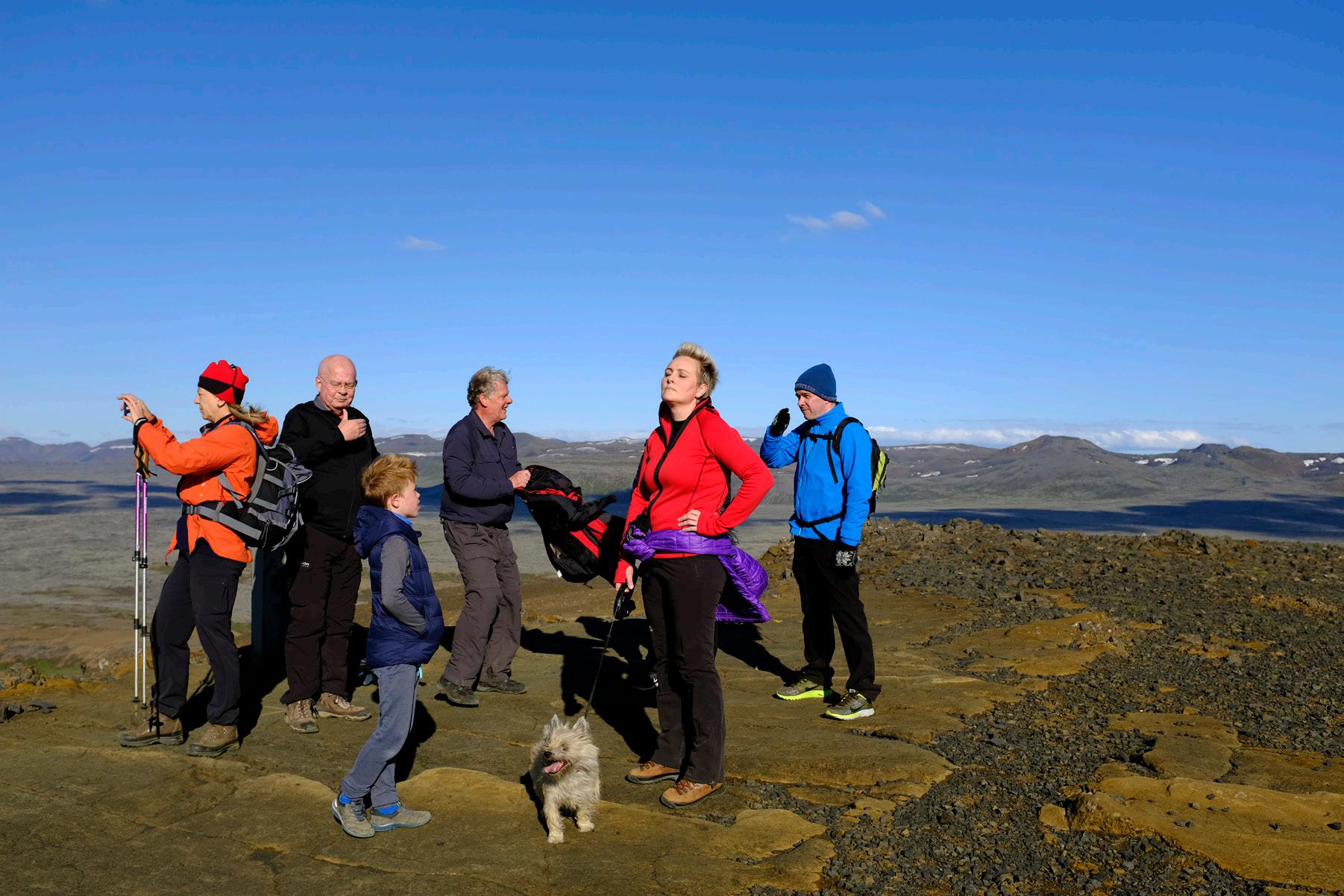
MT. KEILIR
For most visitors to Iceland, one of the first Icelandic mountains they see is Mt. Keilir, an almost perfectly cone-shaped mountain on the way from Keflavík Airport to Reykjavík. Keilir’s perfect shape rising from the flat lava fields around it, makes it almost look like a cartoon mountain and it’s certainly a striking one, rising from the blackness of the lava. The curiously flat landscape surrounding the conical mountain makes sure that it sticks out, so much so, in fact, that Keilir was for years used by sailors as a guide when sailing in the rocky waters around the Reykjanes peninsula.
Despite its looks, Keilir is not actually a volcano. Instead, it was formed during a volcanic eruption underneath a glacier, resulting in the unusual shape. Keilir is not particularly tall, a little under 400m (1,312ft) above sea level. The slopes aren’t steep either, so the hike is not particularly difficult but just enough to be challenging! The hike to the top is 7km (4.3mi) and takes about two to three hours.

If you want to hike but don’t feel like climbing the mountain, there are plenty of hiking trails surrounding the mountain as well.
Keilir lies southwest of Hafnarfjörður. Take route 41 out of town like you were on your way to the airport, then turn onto road 420 which leads to the parking lot where the hike up to Keilir starts. The city bus no 55, which runs between Reykjavík and Keflavík, also makes a stop at Keilir.
PLEASE REMEMBER to take care when climbing. Even though these are popular hiking spots, the notoriously fickle Icelandic weather can be tricky at higher altitudes, and there can even be snow on upper slopes. It can also be steep in places, so make sure your shoes are up for the task! Follow your chosen route closely and check what the weather conditions are like before attempting a climb. Always let someone know where you’re going and when you intend to be back.

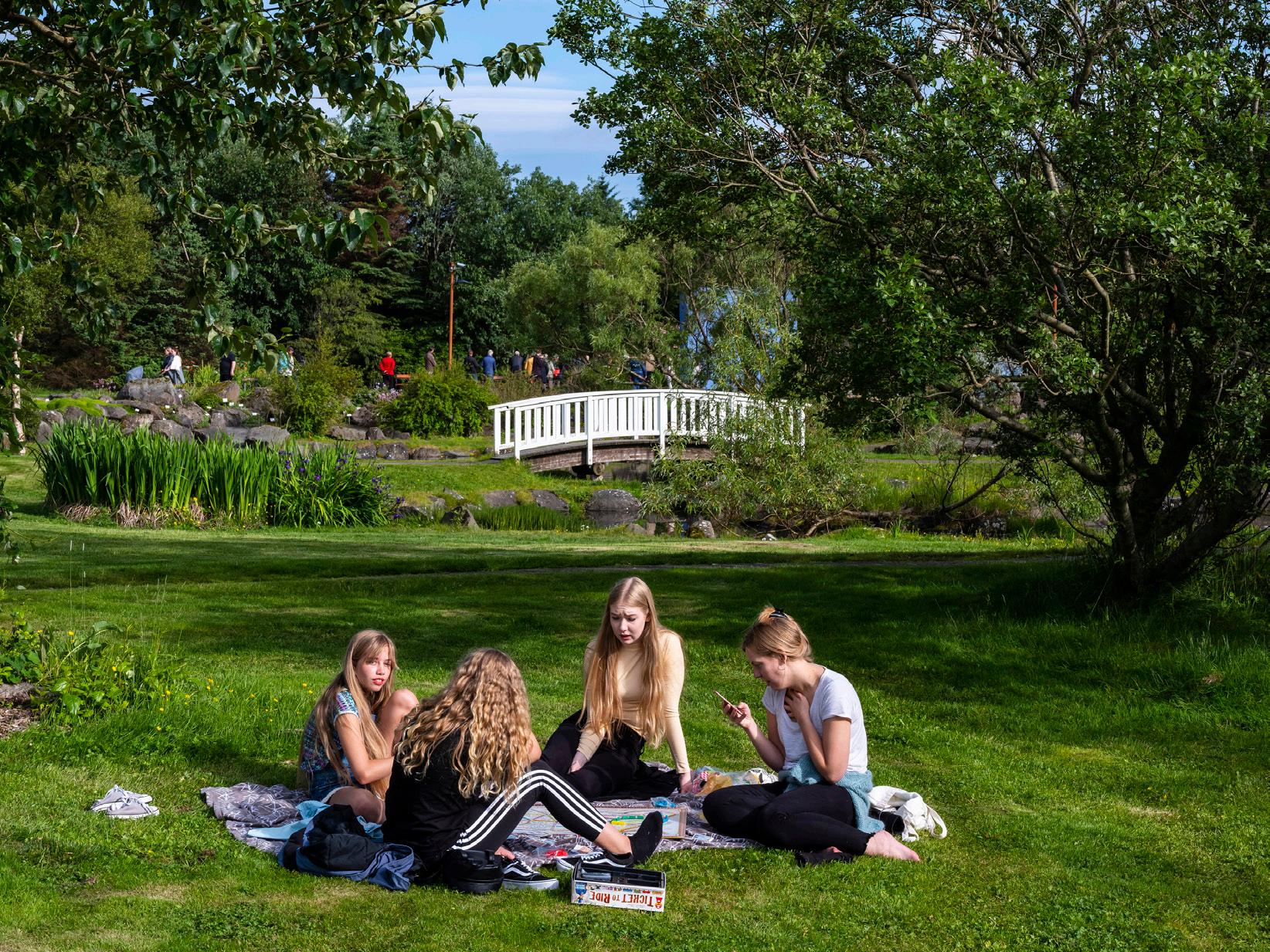
Laugardalur valley is a neighbourhood in Reykjavík that lies east of the city centre. Filled with parks, cafés, sports centres, and other recreational opportunities, Laugardalur is the perfect place to spend a sunny day.
The name of the valley roughly translates to hot spring valley, and it takes its name from the hot springs where the women of Reykjavík used to wash laundry. Laugavegur, Reykjavík’s main shopping street, shares its name with the valley since it was first built as a way for washer-women to get to the hot springs. Later, the hot water was used to make a swimming pool, and Laugardalur soon became a centre for sports and outdoor activities.
Today, Laugardalur still has the largest swimming pool in Reykjavík, Laugardalslaug. It’s got an indoor pool, an outdoor pool, hot tubs of varying temperatures, a wading pool, a sunbathing area, a steam bath, and a waterslide – it’s basically a water paradise. Having a chat with the locals in the hot tub is essential, but there are also plenty of other activities in Laugardalur.
Laugardalur also boasts a beautiful botanical garden featuring an impressive selection of arctic flowers and plants. Beneath the branches of a leafy grove in the gardens, you’ll



find the lovely Flóran, a café and bistro. Right by the botanical garden is The Family Park & Zoo. The zoo includes most Icelandic animals, both wild and domesticated, from foxes, reindeer, and seals to cattle, horses, and sheep. In summer, the family park offers rides and play equipment for children of all ages as well.
At the edge of Laugardalur valley, not far from Laugardalur’s sports arena, is a strangely shaped, domed white building that’s well worth a visit. This is Ásmundarsafn, the former studio of Ásmundur Sveinsson (1893-1982), which has now been converted into a museum. Ásmundur was a pioneer of Icelandic sculpture, and you can see his sculptures in many different locations all around the city, such as in front of the main building of the University of

Iceland and on the corner of Lækjargata and Bankastræti in the city Centre.
Finally, Reykjavík’s main sports stadium, Laugardalsvöllur, is also located in Laugardalur valley. Close to the stadium is the Laugardalshöll arena, a multipurpose indoor venue built in 1965. In addition to large pop and rock concerts, trade shows, exhibitions, and the 1995 World Championship of Handball, Laugardalshöll hosted the famous 1972 World Chess Championships, where American Bobby Fischer defeated Russian Boris Spassky.






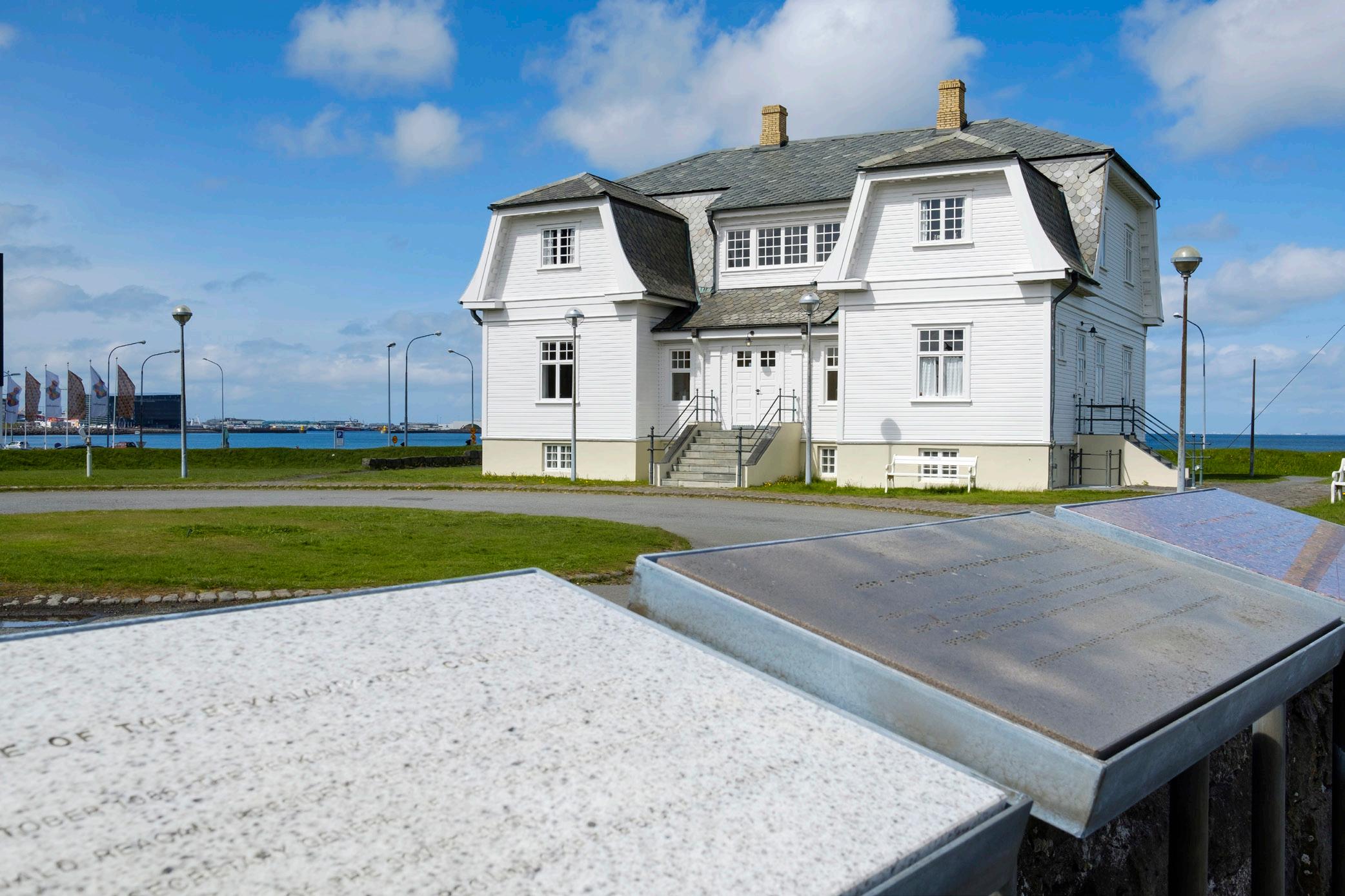
in Reykjavík. It was originally built for French consul Jean-Paul Brillouin and was later the residence of poet and businessman Einar Benediktsson.
It’s world-famous because it was the location of the 1986 Reykjavík Summit, a meeting of Presidents Ronald Reagan and Mikhail Gorbachev. Even though the meeting was adjourned without an agreement, this historical event eventually led to the end of the Cold War. During the summit, images of the house were broadcast all over the world. A Japanese shrimp salesman, who often travelled to Iceland for business, even had an exact replica of the house built in his country. The sculpture in front of the house depicts pillars from the chieftain’s seat of the first Norwegian settler in Reykjavík.
Höfði still bears signs of its original purpose as the house of the French consul, such as an inscription above the interior door that includes the letters R.F. (the abbreviation of République Française), the name of the consul, and the year of its construction. Among renowned guests, celebrities and heads of state that have visited the Höfði House are the Queen of England, Winston Churchill, and Marlene Dietrich. In addition, the house is believed to be occupied by a ghost, The White Lady, witnessed by a former British ambassador who once occupied the house. She caused so much
distress that he persuaded the British Foreign Office to sell the house.
Höfði is owned by the City of Reykjavík and is used for official receptions and meetings. Even though it’s not open to the public, visitors are welcome to explore the house from the outside. Standing in front of the house is a section of the iconic Berlin Wall, which was torn down in 1989, effectively ending the Soviet control over Eastern European countries. We recommend taking a walk along the coast from Harpa Concert Hall, admiring the ocean view and statue Sólfarið (The Sun Voyager) along the way.















Icelandic nature is beautiful and going hiking is the best way to enjoy it! Luckily, you don’t have to travel far to be in the middle of nature. If you want to go hiking in Reykjavík, there are a couple of magnificent areas to choose from!
Reykjavík is a sparsely populated city, so even though it covers a large area, there’s still plenty of room to breathe. The green spaces in the city allow residents to wander through nature, hike, or bike their way along the coastline or through the woods. Many of them are even interconnected, so you can travel on foot from the lighthouse at the northernmost tip all the way through to the lava fields south of the city without ever leaving your walking path. It would make for a pretty long walk, though!
Elliðaárdalur valley is a lush recreational area, popular with walkers and cyclists alike. It’s one of the largest green spaces within the city limits, a natural oasis in a sea of concrete, almost like Reykjavík’s homegrown version of New York’s Central Park. Even though the valley is located within the city limits of Reykjavík, the wild environment is sure to make you feel at one with nature. The flora and fauna of Elliðaárdalur are almost completely untouched, but the proximity to the city has resulted in one addition. The valley is now populated with furry little rabbits, descendants of escaped pets. They might not be native to Iceland, but they sure are cute!
A fishing river runs through the valley, populated with arctic char, salmon, and brown trout. Fishing licences are available during the summer fishing season, which is opened annually by the mayor of Reykjavík on June 1. The season ends on August 31. Note that it’s also possible to fish in the nearby Elliðavatn lake and Reynisvatn lake.
Situated on the southeast outskirts of Reykjavík City is Heiðmörk – a wonderful recreational area with hiking trails leading through a vast expanse of bushy vegetation and lava rock formations. Some of the park’s most notable features are Rauðhólar







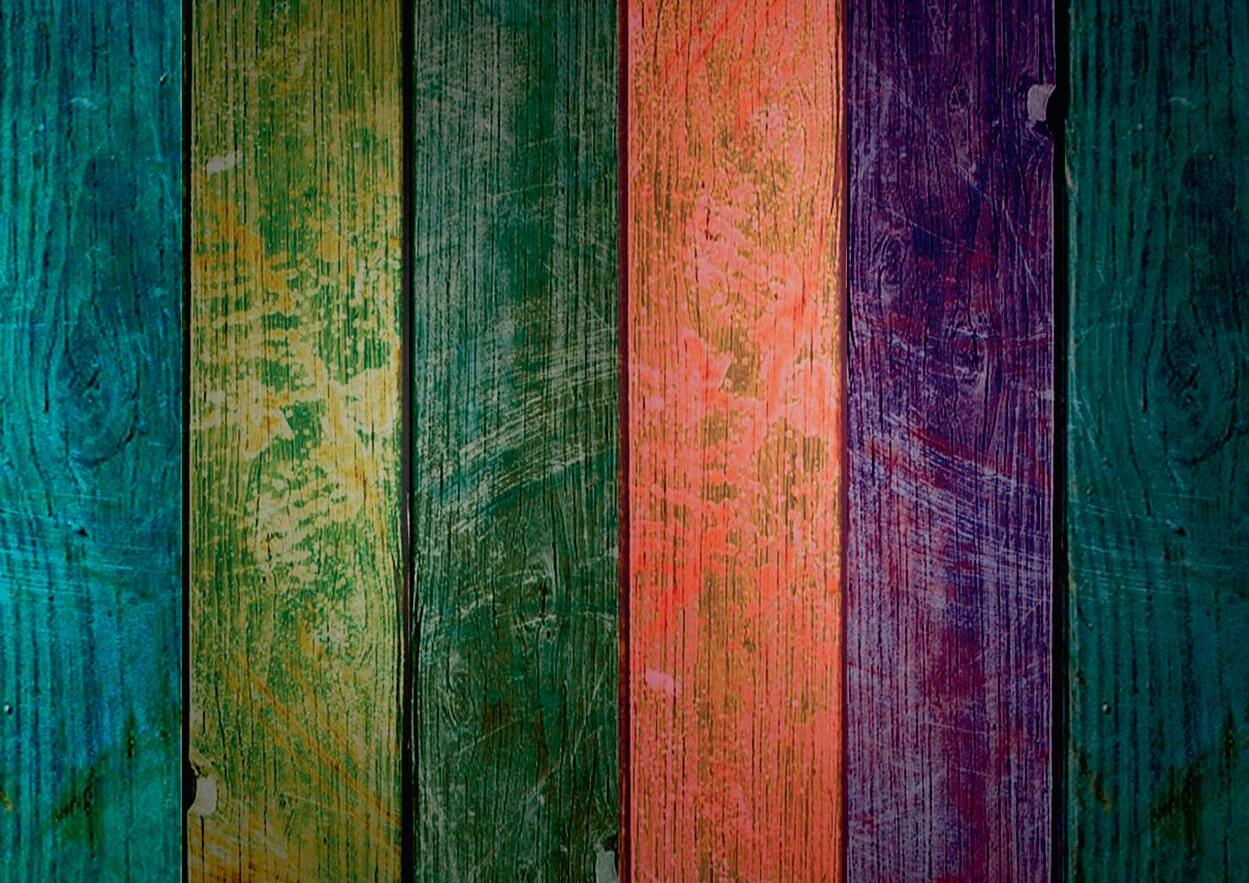







(Red Hills) – the remnants of a cluster of pseudocraters in the Elliðaárhraun lava field. Heiðmörk is a favourite with locals, especially for sports enthusiasts, those with children, and couples looking for a romantic retreat!
Heiðmörk became a conservation area in 1950. More than four million trees have been planted there since then, and the already existing vegetation has thrived since the area was fenced off. The most prominent of the 26 species of trees planted is the Sitka spruce. Bird-watchers will be pleased to discover that 30 species of breeding birds have also been spotted.

Öskjuhlíð is a beautiful woodland area surrounding Perlan (The Pearl) – one of Reykjavík’s stunning landmark buildings. Conveniently located right in the heart of the city, this sylvan retreat makes for a popular getaway from city life, where visitors can cycle or walk on paths that weave through a dense forest of pines and birch trees.
The paths around Öskjuhlíð join an extensive network of well-maintained footpaths in Reykjavík, leading down to the scenic shores of Nauthólsvík and around the coastline to Seltjarnarnes. Another option is to take the southeast trail to the recreational areas and valleys of Fossvogsdalur and Elliðaárdalur, and even farther on to the Heiðmörk Nature Reserve.
The northernmost tip of the Reykjavík peninsula is known as Grótta, named after the farm that used to be there before the city grew to its current size. Surrounded by sea on all sides and even sporting a tall white lighthouse, the Grótta area has some beautiful and photogenic views. The name Grótta actually refers to an island just off the coast of Reykjavík. It’s connected to land by a strip of sand, but it can only be reached when the tide is out, so don’t try to cross over to it.
In winter, the Grótta area is a great spot to view the northern lights if you can’t get out of the city.
Grótta is protected because of the rich birdlife and beautiful nature in the area. A walk around Grótta is highly recommended for birdwatchers as well as anyone who appreciates long walks with beautiful ocean views.

Just off the city centre lies Reykjavík’s old harbour area. Known as Grandi (Icelandic for isthmus, a narrow strip of land connecting two larger bodies of land), the land was originally just a stretch of sand connecting Reykjavík to Örfrisey island but has been added to considerably in the years since. For decades, this was simply an industrial neighbourhood with fish processing plants and shipyards, but when the new harbour by Sundahöfn was built, much of the industry was moved there, leaving empty buildings in a popular area waiting to be repurposed.
The conditions were perfect for a revival of the old harbour and soon enough, people started using the spaces for exhibitions, designers opened workshops, students worked on startups and restaurants started opening up to feed all the people working in the area. Fast forward a few years and the old harbour is one of the most exciting neighbourhoods in Reykjavík. It still retains its dockside charm and more than a whiff of the fishing industry’s presence, but a steadily growing number of museums, hip restaurants, and artisans’ workshops have made their home in the vacated industrial buildings, making Grandi one of the hottest spots in the city.

For those looking for shopping and dining near the Reykjavík harbour, Hafnartorg Gallery is conveniently located between the Harpa Opera house and Grandi. This popular new food hall features a selection of restaurants, including everything from fine dining and cocktails to quick street food. There are also a multitude of shops in the gallery, including interior design, skincare, and fashion boutiques.
Art and all sorts of creative thought are a big part of life in the old harbour district. Not only is there art inside the buildings in the area, but on the outside of them as well, with huge







Man hasn’t the imagination to think of shapes that don’t exist in nature.


street art murals decorating various buildings around the area. There are also large outdoor art pieces such as Ólöf Nordal’s Þúfan (The Hillock) pleasing the eye. The old harbour is home to plenty of artists’ workshops, as well as the Reykjavík School of Visual Arts and The Marshall House.
Originally built in 1948 as a herring factory, The Marshall House is one of the beautiful old factory buildings in the old harbour. It is named after George Marshall, an American general whose plan to build up Europe’s economy after World War II benefited Iceland’s economic growth in the 1940s and 1950s. The Marshall House is one of the buildings that has gotten a new lease on life with the changes at the old harbour and today it houses The Living Art Museum, the gallery Kling & Bang, and Ólafur Elíasson’s studio, as well as a restaurant. Fresh seafood and incredible works of arts make the trip to The Marshall House worth it, but the amazing view of the old harbour will be the cherry on top of your visit.
The old harbour also boasts historical and natural museums. There’s no better place for

the Reykjavík Maritime Museum than in the old harbour – you can smell the fresh sea air as you learn all about the fascinating story of Icelandic fishermen, who’ve been risking their lives on the open ocean for centuries. You can even take a tour of Óðinn, a former Icelandic Coast Guard vessel from the 1950s, that played an important role in Iceland’s struggle with the UK over the rights to fish in the sea around the island. In addition to the Maritime Museum, you can visit an exhibition on the northern lights, check out Whales of Iceland, a hall filled with lifesize models of whales, and learn more about Iceland’s history at the Saga Museum. To fill up more of your senses with Icelandic nature, stop by FlyOver Iceland, an immersive flight simulation experience. The exhibition boasts an enormous wrap-around screen, and the full-motion seating will make you feel that you are not sitting indoors but actually flying over Iceland’s glaciers, mountains, and waterfalls.
Some of Reykjavík’s most exciting eateries have opened in the old harbour area in the past few years. Not only can you find fine dining, everyday grub and everything in between,


but there are also some specialty food stores that will make your mouth water. Try some new Nordic food, Icelandic style, or get some sourdough sandwiches that will knock your socks off. Eating fresh Icelandic fish in the harbour surroundings is a life-affirming experience and don’t forget to stop by a bakery or ice cream store for some dessert. If you’ve satisfied your hunger but still feel thirsty, you can get some in-house brewed beer or innovative cocktails. Try one with an Icelandic spirit – maybe a birch-flavoured liqueur or even Iceland’s famous Brennivín.
The Grandi Food hall gives your whole group a chance to taste what they want in one stop. The restaurants vary but all focus on street food. People are encouraged to try different dishes from several food stands, instead of picking just one meal at one restaurant. A handful
of restaurants have been selected, and they all offer up something unusual, from a new twist on a local staple, to flavours never before tasted in Iceland.
Amongst this interesting flora of culture and cuisine is a smattering of small workshops and quirky stores, such as designers’ workshops producing clothes, handbags and homeware, a fashion label working with natural fabrics and delicatessens selling charcuterie and cheeses. You’ll even find a chocolate factory selling high-quality chocolate bars and a jeweller’s workshop! The best thing about shopping at the old harbour is that the shops and workshops are small and often you’ll have a chance to


Geothermal water is one of Iceland’s greatest natural resources. It’s used to heat houses and produce electricity, but most importantly, Icelanders love to swim in it. Pools and spas have been a huge part of the Icelandic lifestyle, ever since the country’s settlement. One of the most famous hot tubs of history belonged to Snorri Sturluson in the 12th century, but bathing in the country’s natural pools is mentioned even earlier, in the Sagas of the Icelanders, set in the 10th century.
The public pool is the heart of almost every town in Iceland, and Reykjavík is no exception. People get together to relax, exercise, or just to catch a little sun. Perhaps most importantly, the hot tubs are a place where people get together to chat about any subject you can imagine. The pool is the great equaliser, and people from all walks of life come together to enjoy the luxury of these public baths.
Opening hours for the pools vary, but since the city has plenty of great pools to choose from, you can go swimming from the early morning until late into the night. Everybody is required to shower in gender- segregated but communal showers before entering the pool for hygienic reasons but some pools also have privacy cubicles.
The facilities at each pool also vary but most swimming complexes include a lap pool, a hot tub or five, and may-be a steam room. The biggest pool is Laugardalslaug, with six hot tubs and a cold tub, a wading pool, a children’s pool, and an indoor as well as outdoor pool.
The most recently renovated pool is the oldest pool in the city, Sundhöll Reykjavíkur in the city centre, right by Hallgrímskirkja.


Breiðholtslaug
Austurberg 3, 111 Reykjavík | 557 5547
Open: M-F 6:30am-10pm, Sat-Sun 9am-10pm
Dalslaug
Úlfarsbraut 122-124, 113 Reykjavík | 411 5650
Open: M-F 6:30am-10pm, Sat-Sun 9am-10pm
Grafarvogslaug
Dalhús 2, 112 Reykjavík | 510 4600
Open: M-F 6:30am-10pm, Sat–Sun 9am-10pm
Laugardalslaug
Sundlaugarvegur, 104 Reyk. | 411 5100
Open: M-F 6:30am-10pm, Sat-Sun 8am-10pm
Sundhöll Reykjavíkur
Barónstígur, 101 Reykjavík | 411 5350
Open: M-F 6:30am-10pm, Sat-Sun 8am-10pm
Vesturbæjarlaug
Hofsvallagata, 101 Reykjavík | 411 5150
Open: M-F 6:30am-10pm, Sat-Sun 9am-10pm
Sundhöll Hafnarfjarðar
Herjólfsgata 10, Hafnarfjörður | 555 0088
Ásvallalaug
Ásvellir 2, Hafnarfjörður | 512 4050
Suðurbæjarlaug
Hringbraut 77, Hafnarfjörður | 565 3080
Kópavogslaug
Borgarholtsbraut 17, Kópavogur | 570 0470
Salalaug
Versalir 3, 201 Kópavogur | 570 0480
Lágafellslaug
Lækjarhlíð 1a, 270 Mosfellsbær | 517 6080
Varmárlaug
270 Mosfellsbær | 566 6754
Garðabæjarlaug
Ásgarður, 210 Garðabær | 565 8066
Álftaneslaug
Bjarnastaðir, 225 Álftanes | 550 2350
Sundlaug Seltjarnarness
Suðurströnd, 170 Seltjarnarnes | 561 1551
Loftleiðalaug
Loftleiðir hotel, 101 Reykjavík | 444 4085
Nauthólsvík
Nauthólsvegur, 101 Reykjavík | 511 6630
Sky Lagoon
Vesturvör 44-48, Kópavogur | 527 6800
For a complete listing of Iceland’s pools, visit www.swimminginiceland.com





UNLEASH YOUR TASTE BUDS WITH THE FINEST ICELANDIC GRILL EXPERIENCE





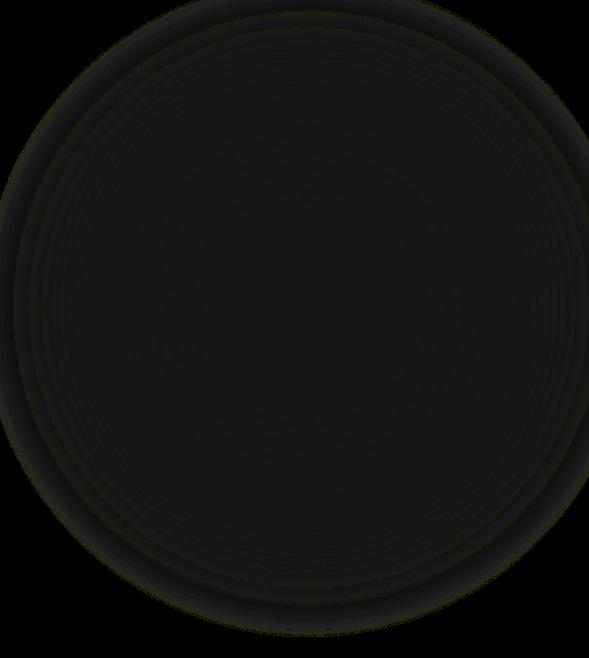
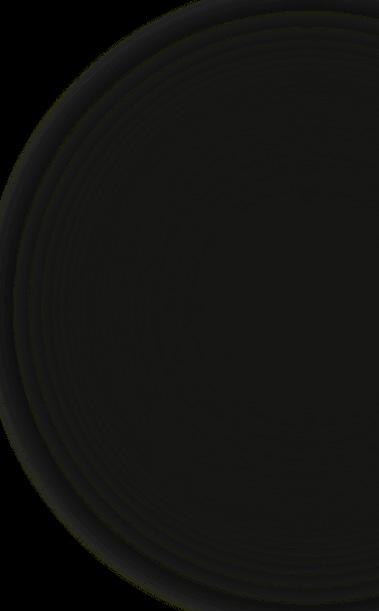




A must see for all visitors to Iceland.
A must see for all visitors to Iceland.
An award-winning work of art, located in the heart of Reykjavík, with a magnificent view of the harbor and surrounding nature.
An award-winning work of art, located in the heart of Reykjavík, with a magnificent view of the harbor and surrounding nature.
In Harpa, you can enjoy the beautiful architecture and uniqueness of the venue in various ways; in guided tours, musical events, stand-up comedy or experience the power of Icelandic nature through an interactive exhibition. And last, but not least, you can enjoy delicious food and drinks at our restaurants.
In Harpa, you can enjoy the beautiful architecture and uniqueness of the venue in various ways; in guided tours, musical events, stand-up comedy or experience the power of Icelandic nature through an interactive exhibition. And last, but not least, you can enjoy delicious food and drinks at our restaurants.

Plan your visit to Harpa at harpa.is or at our ticket office.
Plan your visit to Harpa at harpa.is or at our ticket office.






of glass and steel by the harbour, with a picture-perfect backdrop of Mt. Esjan on the other side of the water. Harpa, Reykjavík’s music hall and conference centre, was completed in 2011 much to the joy of Icelandic musicians and the music-loving public.
Even if Harpa is a relatively recent building, there had been talks, and even plans, of building a music house in Reykjavík for decades. In fact, the first documented suggestion of a music hall appeared in 1881! The talks became serious when the Iceland Symphony Orchestra was founded in 1950, but its “temporary” home in the Háskólabíó cinema lasted longer than expected. Many locations were suggested, but in 2000, people settled on Harpa’s current spot by the harbour. Construction began in 2007 but was halted due to Iceland’s financial collapse in 2008. The building became a hot topic, and the nation was divided on whether this was the right time to build a house dedicated to the arts. Luckily, construction soon went ahead, and the result is Harpa, a lovely addition to both the city centre and Iceland’s music scene.
The building was designed by a Danish firm in cooperation with Icelandic architects but the building’s standout feature, the honeycomb façade of glass and steel, is the brainchild of internationally acclaimed artist of Icelandic descent Ólafur Elíasson. If you’re interested in seeing more of his work, head to The Marshall House by the old harbour, which houses Ólafur’s studio and exhibition space.
concrete) but what goes on inside its halls. Harpa is home to the Iceland Symphony Orchestra, the Icelandic Opera, the Reykjavík Big Band, and a curiously musical mouse called Maximus Musicus, who regularly appears at the orchestra’s children’s concerts and is very excited to teach kids all there is to know about music and musical instruments.
In addition to classical concerts and operas, Harpa is also home to modern popular music – popular music festivals regularly take place in Harpa – as well as conferences, lectures and comedy shows. Be sure to check out the Harpa programme while you’re here, taking in a show or a concert in one of its grand halls is an unforgettable experience.
Harpa is also host to CIRCULEIGHT, an innovative installation that features designs and real-time interactive visuals inspired by eight elements: lava, basalt, glacier, water, flora, algae, microorganisms, and volcanic gas. Throughout the installation, audiences are fully immersed into this world through a powerful score of original music by renowned Icelandic composer Högni Egilsson.
The ground floor of Harpa is open to the general public and features a restaurant, art gallery, and boutiques. For upcoming events, see www.harpa.is/en/whats-on.
Harpa.is
Tel: +354 528 5000
Open: Sun-Tues. 10am-6pm - Wed-Sat. 10am-8pm

Iceland has plenty of natural attractions – glaciers, waterfalls, and black sand beaches –but one of the most popular sights in Iceland is up in the sky! The aurora borealis, or the northern lights, are wisps of coloured lights that sometimes stretch across the arctic sky. If you get the chance to see them, watching these sheets and ribbons of light glide slowly around the winter night sky is a magical experience.
The lights may look magical but the science behind them is even more fascinating. These soft lights we admire here on earth are caused by great solar storms tearing across the sun’s surface and bursting through holes in the sun’s corona. Particles released from the sun during these massive storms travel through space and when they hit earth’s atmosphere, they burn up in a flash of colour.
The colour of the lights depends on where in the earth’s atmosphere the particle’s burn up and they can be purple, pink, or even red, although the most common shade of the northern lights is green.
The northern lights only appear around the magnetic north pole of the earth, so Iceland and Northern Scandinavia are the best places to see them. The northern lights also have a counterpart in the Southern Hemisphere known as the southern lights or aurora australis.
The northern lights aren’t visible in summer because their delicate brightness is overshadowed by the midnight sun. They also manifest high in the sky, so on cloudy nights, they can’t be seen. Check out the next page for tips and tricks to maximise your chances of seeing the elusive lights!



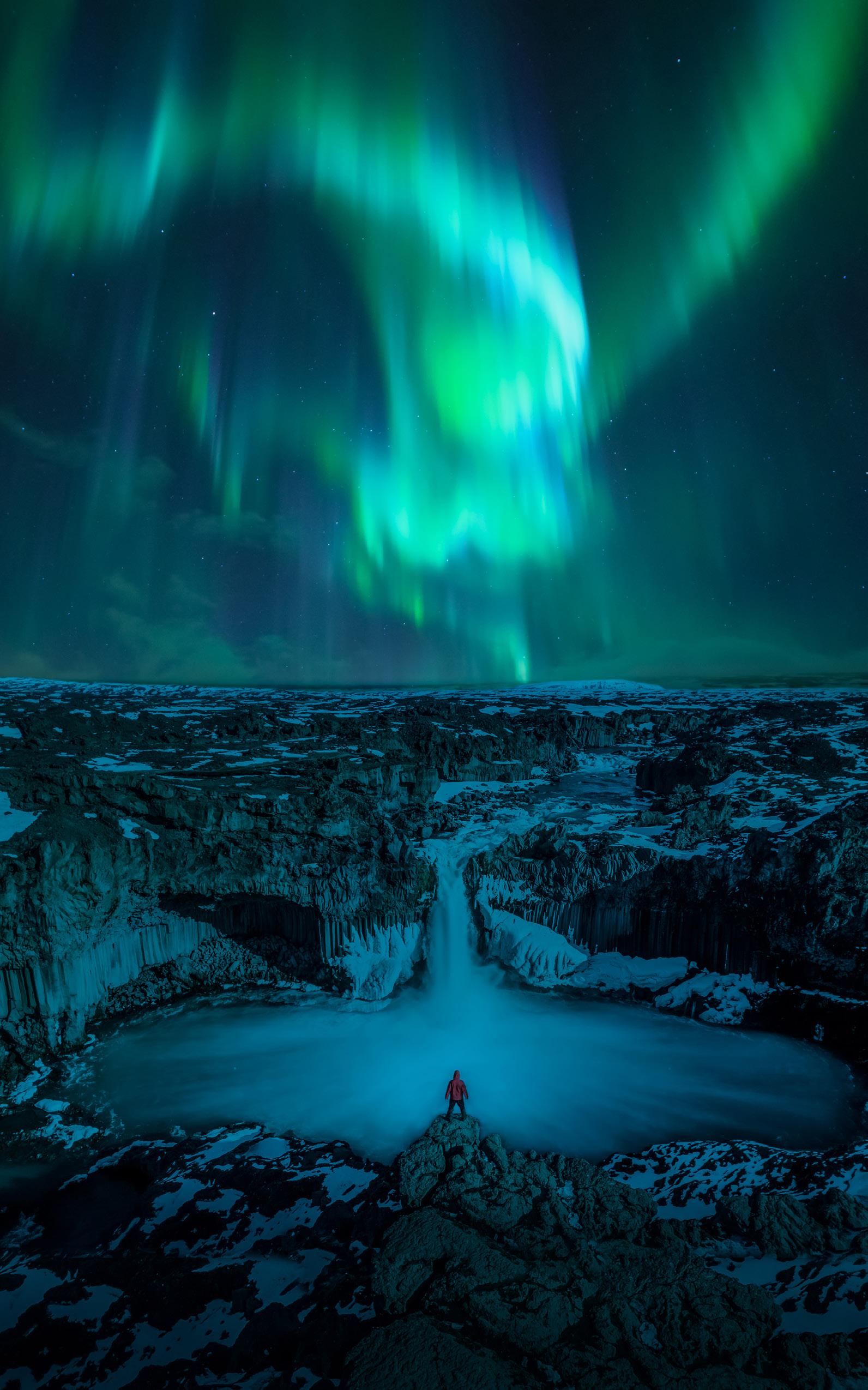



The northern lights are a natural phenomenon and they don’t appear on a fixed schedule. Also, because the lights appear in the thermosphere, above the clouds, they can’t be seen on cloudy nights. A northern lights sighting is never guaranteed, but if you follow these tips and tricks, you can maximise your chances to see them!
The northern lights are not very bright and certainly not bright enough to outshine the sun! You must wait until it’s dark to go out and hunt for the northern lights, but the good news is, during winter in Iceland, you don’t have to wait that long!
Icelandic winters are long and dark but during the summer, the sun hardly sets. This means that during the summer, it never really gets dark enough for the northern lights to appear.
As we’ve mentioned, the northern lights aren’t bright enough to overpower other sources of light, so if you want to see them at their best, getting away from the city lights is key! On a good night, you can still see the lights within the city limits but the light pollution from the city will always dull their brightness a little.
If you want to avoid disappointment, check out the aurora forecast published by the Icelandic Meteorological Office. They predict the cloud cover and the level of aurora activity. They’re not infallible but following the forecast is a good rule of thumb.
The lights appear high in the sky, which means that clouds can cover the view of the lights from the ground. It’s best to look for them on a clear, or at least partially clear night, just like the stars.
If you don’t have a car, taking a tour can be a convenient way to get out of the city lights. Most tour companies offer northern lights tours by bus, boat, or jeep and if you don’t see any lights you can take the tour again the next night for free.
The northern lights are unforgettable, but you still might want to take some photos as souvenirs of your trip to Iceland. Don’t forget to bring your camera but be aware that taking great photos of the northern lights can be tricky. Ask your guide for help or turn to the next page to find some basic instructions.
The northern lights are a natural phenomenon so they’re not dependable. Sometimes they come out early in the evening, clear and bright, but sometimes they don’t appear until the middle of the night or just appear as a blurry fog of lights. Bring a jacket and some mittens and have patience.

The northern lights are faint and far away, so even if you see them clearly with your own eyes, they probably won’t show up on a photo unless you follow these tips and tricks. A good camera is the best tool to get the photo you want, but if you’ve got a smartphone, it’ll do. Most newer smartphones have advanced options, allowing you to adjust the settings for your aurora photo shoot.
A tripod, or something to keep your camera level is essential to get a clear photo of the northern lights. You need a long exposure time to capture as much of the lights as you can and if your camera moves, your photo will be blurry.
The aperture dictates how much light your lens is letting in. You want it as open as possible to capture as much of the lights as you can. Smaller numbers mean a bigger opening.
The ISO dictates how sensitive the camera is to the light. Usually if you set it too high, the photo will be grainy but in the darkness of night, it’s essential. Start at 800 and adjust it until you find the setting you like.
This controls how long the sensor is exposed, taking in light. You need some time to capture the elusive northern lights, so try 5 seconds to begin with, and then adjust it to your liking.
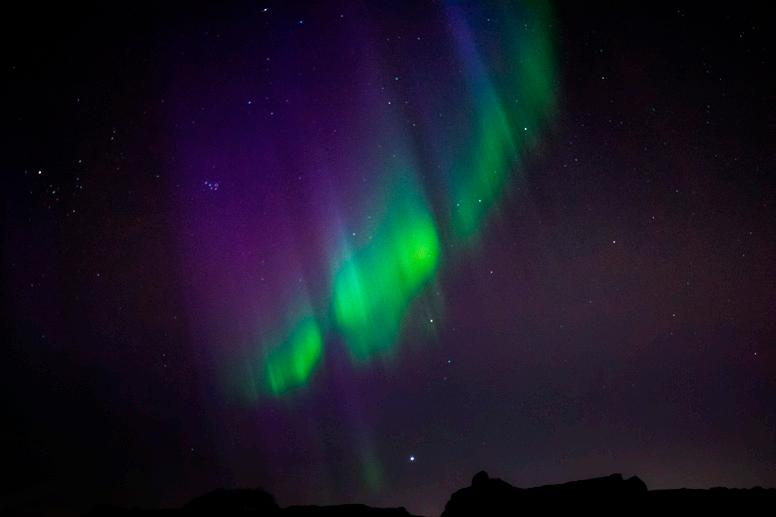
Check out www.whatson.is/discover-the-northern-lights-in-iceland/ for a great list of useful tips and tricks to help you get the most out of your northern lights hunt!




Icelandic Tattoo Convention
May 31 - Jun 2 Tattoo artists from all over the world gather in Reykjavík for one weekend, showing off their skills in the art of tattooing.
Fisherman’s Day
Jun 2 Fishermen’s Day, celebrated on the first Sunday of June, reminds us of how important the sea and sailors are to our history, economy, and people. Every ship in Iceland is in harbour and sailors have a day off. It’s a lighthearted occasion with lots of fun for the whole family.
The Colour Run
Jun 8 Run through 5km of exploding coloured powder, ending your run in a colourful outdoor party. The aim of this event is to bring the Colour Run mania to the world!
Viking Festival in Hafnarfjörður
Jun 13-18 Viking Village in Hafnarfjörður hosts a solstice festival with Viking clothing, instruments, jewelry, crafts, and of course, food and drink. On the programme are Viking fights, storytelling, archery, and so much more!
National Day
Jun 17 The National Day of Iceland has been celebrated on June 17 since Iceland’s
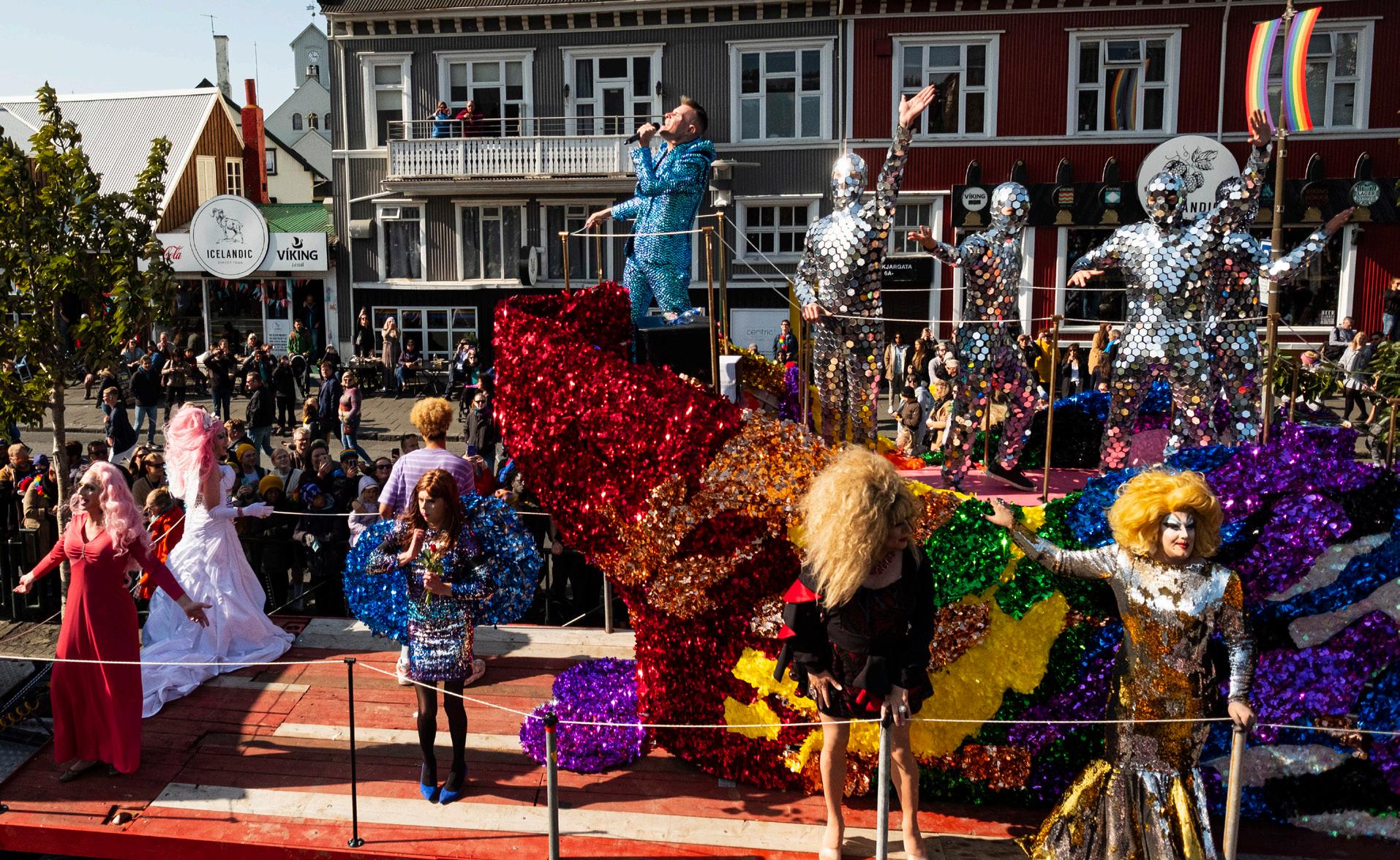

independence in 1944. The festivities in Reykjavík include colourful parades, street theatre, music, and dancing.
International Organ Summer
Jun 17-Aug 17 Hallgrímskirkja church hosts a series of organ concerts on Thursdays, Saturdays, and Sundays, all summer. Various musicians perform various pieces of organ music on the beautiful Klais organ.
Reykjavík Fringe Festival
Jun 17-Jun 23 Fringe Festival crosses genres and borders. It’s packed with entertainment that’ll make the audience think about the world differently. Their motto? Playful, adventurous, daring. Be it theatre, stand-up comedy, dance, poetry, burlesque, street performance, installation art, mobile art, or any other form of artistry, Fringe Festival is the place to be.
Ingólfshátíð Viking Festival
Jul 13-14 Every summer, we see part of Reykjavík transformed from modern to mediaeval as the Einherjar Vikings, dressed in full costume and character, invite fellow Vikings from all over the world to celebrate the fascinating cultural heritage of the Vikings!

European Street Food Awards
July Street food and food trucks have been growing in popularity in Reykjavík over the past several years. This festival celebrates the diverse and delicious food options that can be found outside of traditional brick-and-mortar restaurants.
Innipúkinn Festival
Aug 2-4 Innipúkinn is an annual music festival, held in Reykjavík during the August bank holiday weekend. Past artists include Hatari, Cat Power, Blonde Redhead, Mugison, Raveonettes, Hjálmar, Mínus, Dikta, FM Belfast, Ólafur Arnalds, and many more.
Reykjavík Pride
Aug 6-11 Tens of thousands of people flock to the city centre every year to show solidarity and have fun with the gay community in Reykjavík and celebrate and support human rights for all.
Hidden People Festival
August Dress up like an elf or a fairy at the Hidden People Festival in the heart of Hafnarfjörður in Hellisgerði park. This magical location, complete with pond and mosscovered lava rocks, is said to be home to elves and fairies. The family-friendly festival is a chance for everyone to honour Iceland’s hidden people and to pay homage to the elf king and queen, who usually make an appearance.
Icelandic Chamber Music Festival
August The aim of the festival is for young musicians to participate in chamber music and to get a chance to perform and interact. Located in Kópavogur, concert hall Salurinn serves as the perfect venue for over a hundred musicians and music students from all over the world.
Reykjavík Culture Night
Aug 24 Reykjavík Culture Night has become an essential part of cultural life in Iceland with thousands of people enjoying everything from traditional shows and exhibitions to more unusual happenings.
Reykjavík Marathon
Aug 24 This annual event involves thousands of participants from Iceland and abroad, and includes the marathon proper, half marathon, a 10K run, and a 3K Fun Run.
Reykjavík Jazz Festival
Aug 28-31 The annual Reykjavík Jazz Festival is an increasingly prestigious event on the international jazz scene. It features many acclaimed international jazz players and Icelandic leading jazz musicians.

Reykjavík Bear
Aug 29-Sep 1 Organised by volunteers to spice up the local gay scene and introduce gay-friendly Iceland to guests. It is one of Iceland’s three biggest gay events, and in recent years, Iceland’s only men-only event.
Extreme Chill Festival
Sep 2-8 Some of the biggest names in experimental music gather in Reykjavík for this three-day festival. While you are almost guaranteed to experience something innovative and new, the fest has also hosted internationally acclaimed artists like Tangerine Dream, Roger Eno, and Plaid.
Reykjavík International Film Festival – RIFF
Sep 26 - Oct 6 RIFF was founded in 2004 with the aim of enriching and enlivening the local film culture. It has since become an international attraction, showcasing some of the most interesting films produced yearly worldwide. RIFF’s grand prize is the Golden Puffin.
Imagine Peace Tower Ceremony
Oct 9 A work of art by Yoko Ono dedicated to the memory of John Lennon. It is a wishing well, from which a strong and tall tower of light emerges. Every year the Imagine Peace Tower stays lit between Lennon’s birthday and the day of his death.
Reykjavík Guitarama
November Several of the world’s greatest
guitar players join the host, Björn Thoroddsen, on stage in Háskólabíó to show audiences all the tricks the guitar has to offer.
Iceland Airwaves
Nov 7-9 The festival started as a showcase for local DJs but has evolved into an international music festival that presents the hottest new bands from the USA, Europe and Iceland. The festival attracts thousands of international visitors annually to sample the freshest sounds, foreign and domestic.
Iceland Noir
Nov 20-23 Iceland Noir is a mystery and crime fiction conference with international guests, filled with workshops, panels and excursions! It takes place at Iðnó.
Reykjavík Dance Festival
Nov 13 -17 A series of events bringing together numerous choreographers and dancers from the Icelandic dance scene. The festival features a diversity of energetic events, all aiming to expand the notion of choreography through innovation and expression with numerous seminars, dinners, workshops, publications, cyberpunk dance sessions, and epic performances.
Unglist (Young Art Festival)
Nov 2-9 This festival week is packed with a multitude of performers and spectators. The program includes music, design, fashion,




photography, paintings and theatre. The festival reflects current trends in young people’s art.
Reykjavík
Dec 1 The lighting of the Reykjavík Christmas tree at Austurvöllur is always a joyous event on the first Sunday of the advent. Families gather to sing Christmas carols and join in the festivities, and the Icelandic Yule Lads make an appearance.
December The main day of celebration for Icelanders is Christmas Eve but the Christmas season starts in late November when streets and buildings are adorned with Christmas lights, and people start frequenting Christmas buffets. Shop for some unique gifts in Reykjavík city centre, visit the quaint Christmas Village in Hafnarfjörður town, check out the Christmasthemed museum exhibitions and explore the winter landscape around Reykjavík. On Christmas Eve and Christmas Day, you can enjoy a traditional Icelandic Christmas dinner at the restaurants in Reykjavík.
Dec 31 Shops are open, and visitors can dine at one of Reykjavík’s many restaurants. Join in the celebrations by taking a New Year’s Eve tour or by finding your own way to one of the city’s huge bonfires. At midnight, Icelanders set off a great number of fireworks.
Traditionally, it’s one of the year’s biggest parties and all the bars, pubs, music halls, clubs and entertainment establishments are open for business. The action doesn’t really
start downtown until well after midnight, but the party will still be jumping at 6am.
Þrettándinn (Twelfth Night)
Jan 6 The last day of Yule is celebrated with another round of bonfires and possibly some elfin dances. Many of the magical events associated with New Year’s Eve are also supposed to occur on Twelfth Night. This is also traditionally when Icelanders set off whatever fireworks they didn’t fire off on New Year’s Eve.
Icelandic Photography Festival
January An exciting festival with photography exhibitions, artist talks and lectures, portfolio reviews and photo-book evenings.
Reykjavík International Games
Jan-Feb The City of Reykjavík welcomes sports participants to a multi-sport competition in Laugardalur, the Valley of Sport.
January The annual contemporary music festival Dark Music Days is becoming an increasingly popular music event. The Iceland Composer Society holds the festival collaborating with most of Iceland’s finest performers.
Þorrinn
February Every winter, Icelanders celebrate the annual Þorrablót, a lively festival celebrating Icelandic heritage. There’s singing, dancing, and, of course, the consumption of traditional Icelandic food: smoked lamb, singed sheep heads, and fermented shark, all topped off with Brennivín (Icelandic schnapps).

February This event is intended to stimulate and enliven city life in midwinter. It celebrates both the winter and the growing light after a long period of darkness. All the major cultural and educational institutions participate, and clubs, galleries, artists, shops, restaurants and many more join in the fun.
Museum Night
February Reykjavík’s museums stay open past midnight and offer special events, including theatre, street performances, dance, and visual arts. A special Museum Night bus travels between the museums and entrance is free of charge. (Isn’t this just part of the Winter Lights festival?)
Reykjavík Cocktail Weekend
February The Icelandic Bartender Association, in cooperation with many bars and restaurants in Reykjavík, hosts the annual Reykjavík Cocktail weekend. There are several events such as concerts, live music and offers on drinks.
Reykjavík Peace Festival
February The festival’s goal is to bring choirs from around the world to sing together in union for peace on earth. Every voice in the world is asked to join and sing John Lennon’s song Love.
Reykjavík Folk Music Festival
March A three-day musical feast celebrating the diversity and breadth of the Icelandic folk music scene. The festival showcases artists of all ages; you can listen to musical outpourings
but then be transported back in time to listen to the wonderful soundtrack and musical stories of times gone by.
German Film Days
March The German Film Days are organised by Bíó Paradís in cooperation with the Goethe Institut Denmark and the German Embassy in Iceland.
Stockfish Film Festival
Mar-Apr The festival screens some of the most up-and-coming arthouse films in the world and invites international filmmakers to discuss the state of filmmaking, the industry and the community.
Reykjavík Blues Festival
Mar-Apr Blues artists from around the world perform together in some of the most unique jam sessions in the northern hemisphere along with young and promising blues artists of the future.
Icelandic Music Experiments
April Iceland’s version of Battle of the Bands, this grassroots music event has produced some of Iceland’s most popular musicians through the years, including the indie darlings Of Monsters and Men.
Iceland Writers Retreat
April This retreat features small workshops and panels by renowned authors, focusing on the art and craft of writing.




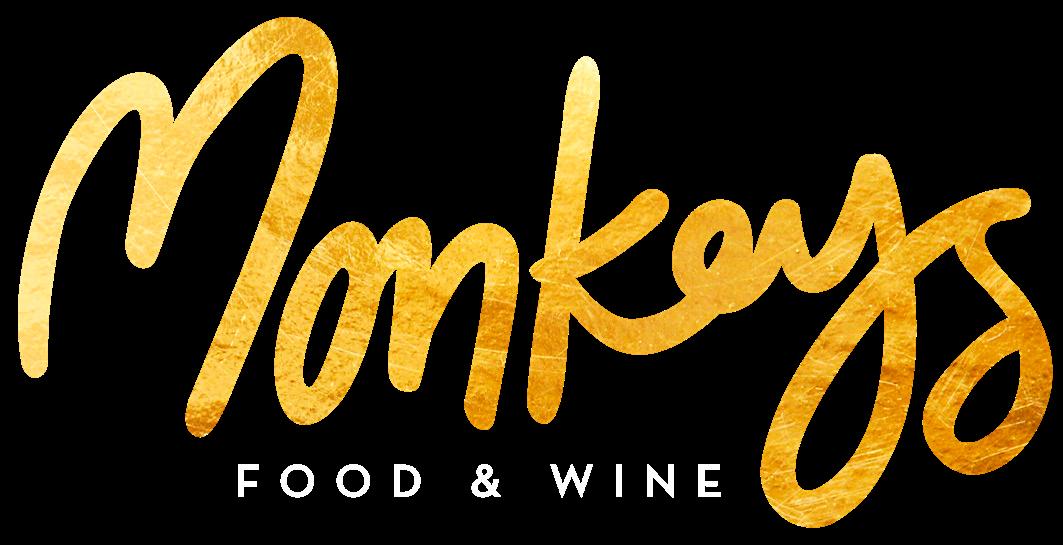

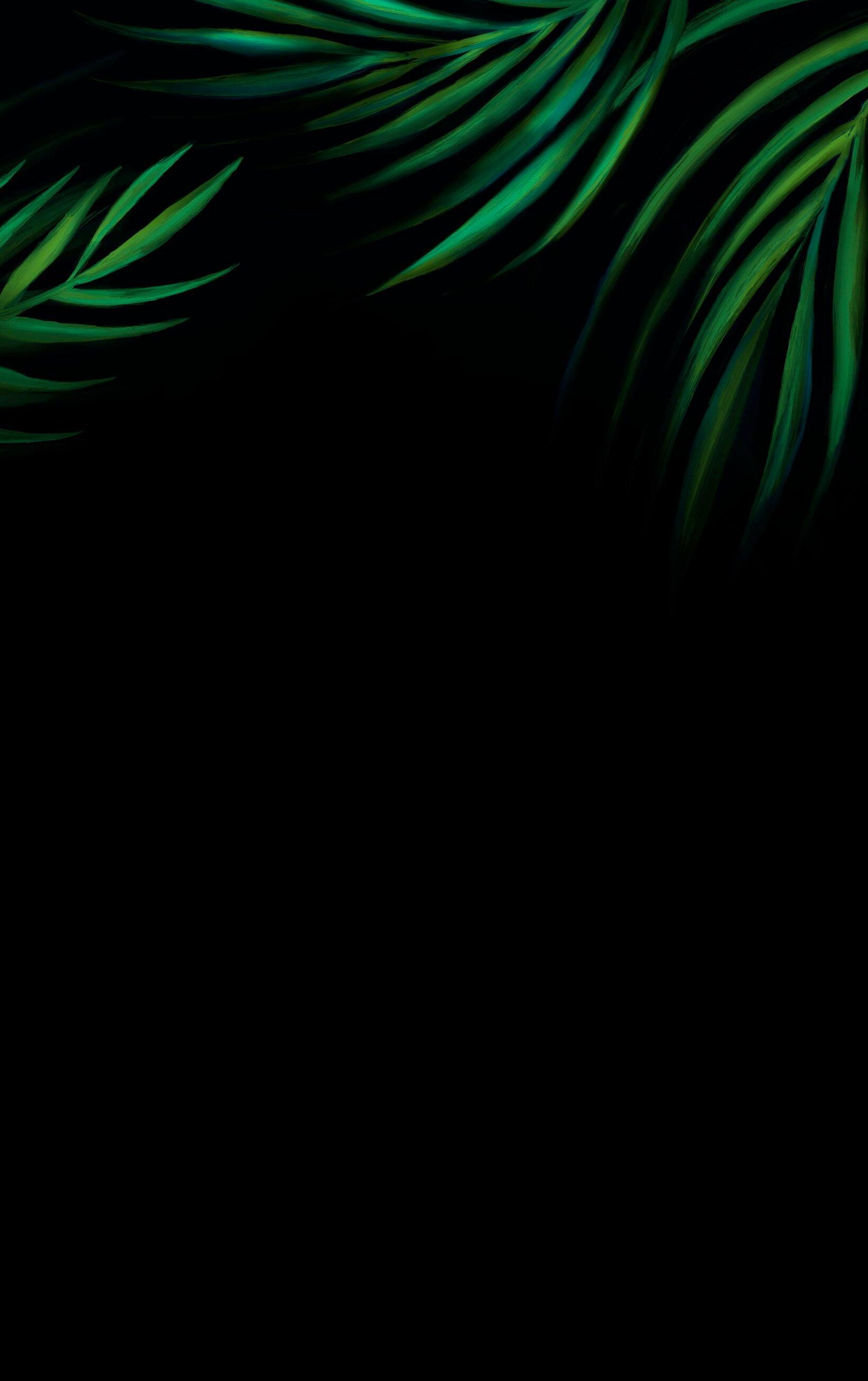
• Grilled lamb prime
• Icelandic cod
• Best monkfish in town
• 37 Wines by the glass




Heima Music Festival
April A music festival held in private homes centrally located in Hafnarfjörður. Guests stroll from house to house to enjoy live music and meet up with locals at their own homes.
Bright Days in Hafnarfjörður
April The Hafnarfjörður arts and cultural festival Bright Days is held annually. The aim of Bright Days is to provide entertainment for locals and visitors and to promote Hafnarfjörður arts and artists. The varied programme offers something for everyone.
First Day of Summer
Apr 24 This optimistic summer celebration (set in April) is celebrated with parades, family events and smiles all around, regardless of whether it snows or not.
Children’s Culture Festival
April Children’s culture, culture for children and culture with children. These are the three main aspects of this festival. The festival features plenty of events aimed at children up to 16 years of age.
Reykjavík Horse Festival
May The Reykjavík Horse Festival is the city’s celebration of the unique Icelandic horse, bred in isolation for a millennium. The focus is on the Icelandic horse and its unique features.
Art without Borders
May The festival celebrates the diversity and participation of people with disabilities. The festival crosses over mixed media of art, music and theatre.
May DesignMarch is a festival celebrating Icelandic design in all its forms. From fashion to furniture, architecture to food design, the festival presents the best of the local design scene alongside exciting international names. Due to the pandemic, DesignMarch has been taking place during the month of May, so adjust your calendars!
Raflost
May The festival’s main aim is to boost grassroots Icelandic electronic arts by introducing the youngest generation and the general public to the past, present and future of electronic arts. It aims to present the newest in electronic art technology, creation and performance, and therefore be an inspiration for further creativity.


Situated in the middle of a lava field, the small town of Hafnarfjörður is the perfect getaway from Reykjavík. It’s a lovely place to spend the day, with its vibrant town centre and beautiful culture. Hafnarfjörður is a hidden gem, containing some of the best experiences that Iceland offers – fresh local cuisine, great geothermal pools, lava, stunning natural phenomena, and a boatload of activities, including a yearly Viking festival! It is the third largest town in Iceland with 30,000 residents, and it’s only 20 minutes away from Reykjavík city centre. Bus no 1 will take you straight to Hafnarfjörður. First and foremost, Hafnarfjörður offers a chance to experience the local lifestyle of Icelanders. Do as the locals do!
One part of the town centre merits special mention – the harbour. While Hafnarfjörður still has a bustling harbour, with colourful fishing boats bobbing gently by the pier, some of the older factory buildings have found a new purpose. In the past few years, new and exciting cafés, restaurants, studios, and galleries have been opening their doors in this former industrial area, so be sure to take a stroll along the harbour while you’re there!
A great way to start the day is a stroll along the Hafnarfjörður river, simply known as Lækurinn (The Creek). The path along Lækurinn is especially popular with families as the kids get to experience the lively birdlife. The main shopping area is Strandgata, often called the heart of Hafnarfjörður. It’s a charming street with colourful old buildings filled with small boutiques – perfect for buying a local souvenir from a friendly shop owner. Many of the shops in Hafnarfjörður are tended to by the owners and designers themselves, so take your time to chat with them if you want to get to know the local community. Hafnarfjörður is also home to Fjörður mall, offering a variety of shops and services.
Hafnarfjörður has a lively culinary scene that’s growing every day. If you feel like breakfast, why not stop by one of the superb bakeries or cafés in town. For lunch, Hafnarfjörður has a plethora of great restaurants serving delicious food and if you want to go for a nice dinner, the town centre and the harbour area have some great options. If you just need a quick bite before heading off for your next adventure, Hafnarfjörður also has plenty of fast food restaurants where you can get some indulgent treats.


Hafnarfjörður welcomes you

Hafnarborg Art Museum
Open: 12-17 - closed Tuesdays Free admission to Hafnarfjörður Centre of Culture and Fine Art Museum. hafnarborg.is/en
Hafnarfjörður Museum
Open: 11-17 this summer.
Free admission to six exhibitions. byggdasafnid.is/en
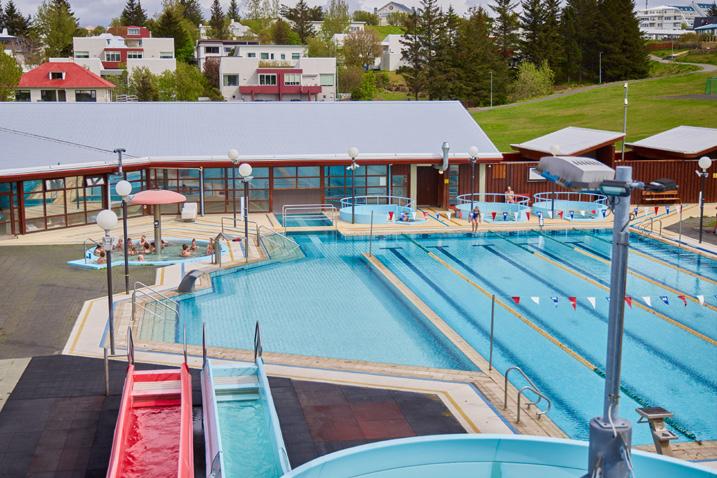
Suðurbæjarlaug



Ásvallalaug
Swimming pools
Ásvallalaug, Suðurbæjarlaug, Sundhöllin
Seltún in Krýsuvík
A Geothermal area with a beautiful and peculiar landscape, located close to Kleifarvatn.
Three excellent thermal pools in town. hfj.is/pools visithafnarfjordur.is Information on where to stay, things to do and where to eat when traveling to Hafnarfjörður.

Hafnarfjörður is surrounded by natural beauty on all sides, hugged by mountains, lava fields, and the seemingly endless North Atlantic. Close to the town centre is the beautiful Hellisgerði park which, according to local folklore, is populated by elves. It’s a charming park full of small caves where you can get to know Icelandic flora. In the park, you’ll find the Little Elf store, a cosy café selling Icelandic design focused on local folklore. Hellisgerði is perfect for family picnics, and the Little Elf store will even lend you a blanket and picnic basket!
Idyllic lake Hvaleyrarvatn, surrounded by lush nature and grey lava fields, is worth a visit as well, with its numerous trails as well as on-site public barbecue facilities. Closer to home is the dominating Hamarinn cliff, a protected natural site overlooking the harbour area. You’ll see plenty of Hafnfirðingar, as the residents of Hafnarfjörður are called, out and about on these walking routes.
Plenty of people keep horses on the outskirts of Hafnarfjörður and riding tours are available. The Icelandic horse is small and friendly, perfect for beginners as well as experienced riders. Taking a ride through the lava fields of Hafnarfjörður lets you experience Iceland much like the first settlers of Iceland did.
The residents of Hafnarfjörður like to keep active, and the town’s gyms are well-visited. In summer, many locals take their training outside, choosing to spend their time jogging in local nature areas or practising their golf swing. Hafnarfjörður’s golf course, Keilir, is one of a kind, surrounded by lava fields and with stunning ocean views.

Hafnarfjörður has an abundance of geothermal heat, and the town puts it to good use with its thermal pools! Hafnarfjörður has three swimming pools, and each of them offers different qualities.
Suðurbæjarlaug is perfect for basking in the sun on a summer’s day. There’s an indoor pool, an outdoor pool, hot tubs, steam baths, two waterslides, and other toys for the kids to play with.

Hringbraut 77, Hafnarfjörður
Tel: +354 565 3080 | Open: Mon-Thu 6.30am-10pm, Fri 6.30am-8pm, Sat 8am-6pm, Sun 8am-5pm
Sundhöll Hafnarfjarðar is Hafnarfjörður’s oldest swimming pool, first built as an outdoor swimming pool in 1943 but converted to an indoor pool a decade later. With two outdoor hot tubs as well, this historic swimming pool offers plenty of opportunities to meet locals and have a quiet swim before relaxing in the hot tub.
Herjólfsgata 10b, Hafnarfjörður
Tel: +354 555 0088 | Open: Mon-Fri 6.30am-9pm
Hafnarfjörður has a rich cultural and historical heritage. The museums are top quality and as an added bonus, entrance is free!
After exploring the wonderful museums in Hafnarfjörður, be sure to check out the programme at Bæjarbíó, the town’s cultural centre and music venue. Built as the town’s cinema, Bæjarbíó is a historic building and regularly hosts some of Iceland’s most popular artists.
Hafnarfjörður Museum has exhibitions in a few old houses in Hafnarförður’s centre, as well as on a walking path by the harbour. You can see how a 19th-century upper-class family, as well as labourers and fishermen, lived in Hafnarfjörður, and you can visit an exhibition on the town’s maritime and commercial history plus a variety of temporary exhibitions.
Strandgata 4, Hafnarfjörður
Tel: +354 585 5780
Open: Jun-Aug, Daily 11am-5pm Sep-May, Weekends 11am-5pm www.byggdasafnid.is
Opened in 2008, Ásvallalaug is Hafnarfjörður’s newest pool. Ásvallalaug is particularly family friendly, with a shallow kids pool, a wading pool, and hot tubs for the parents, all indoors, away from the elements. If you still want to get a little sun, there are also outdoor hot tubs and even a lovely sunbathing area. Ásvallalaug is the most easily accessible pool, with a state-ofthe-art lift for disabled swimmers.
Ásvellir 2, Hafnarfjörður
Tel: +354 512 4050 | Open: Mon-Thu 6:30am10pm, Fri 6:30am-8pm, Sat 8am-6pm, Sun 8am-5pm

If you’re more interested in art than history, head over to Hafnarborg, the Hafnarfjörður Centre of Culture and Fine Art, founded in 1983 on a substantial donation by Hafnarfjörður natives and art collectors Sverrir Magnússon and Ingibjörg Sigurjónsdóttir. The exhibitions include everything from classic masterpieces to experimental work by contemporary artists.
Strandgata 34, Hafnarfjörður
Tel: +354 585 5790
Open: Mon-Sun 12pm-5pm (Closed Tue) www.hafnarborg.is
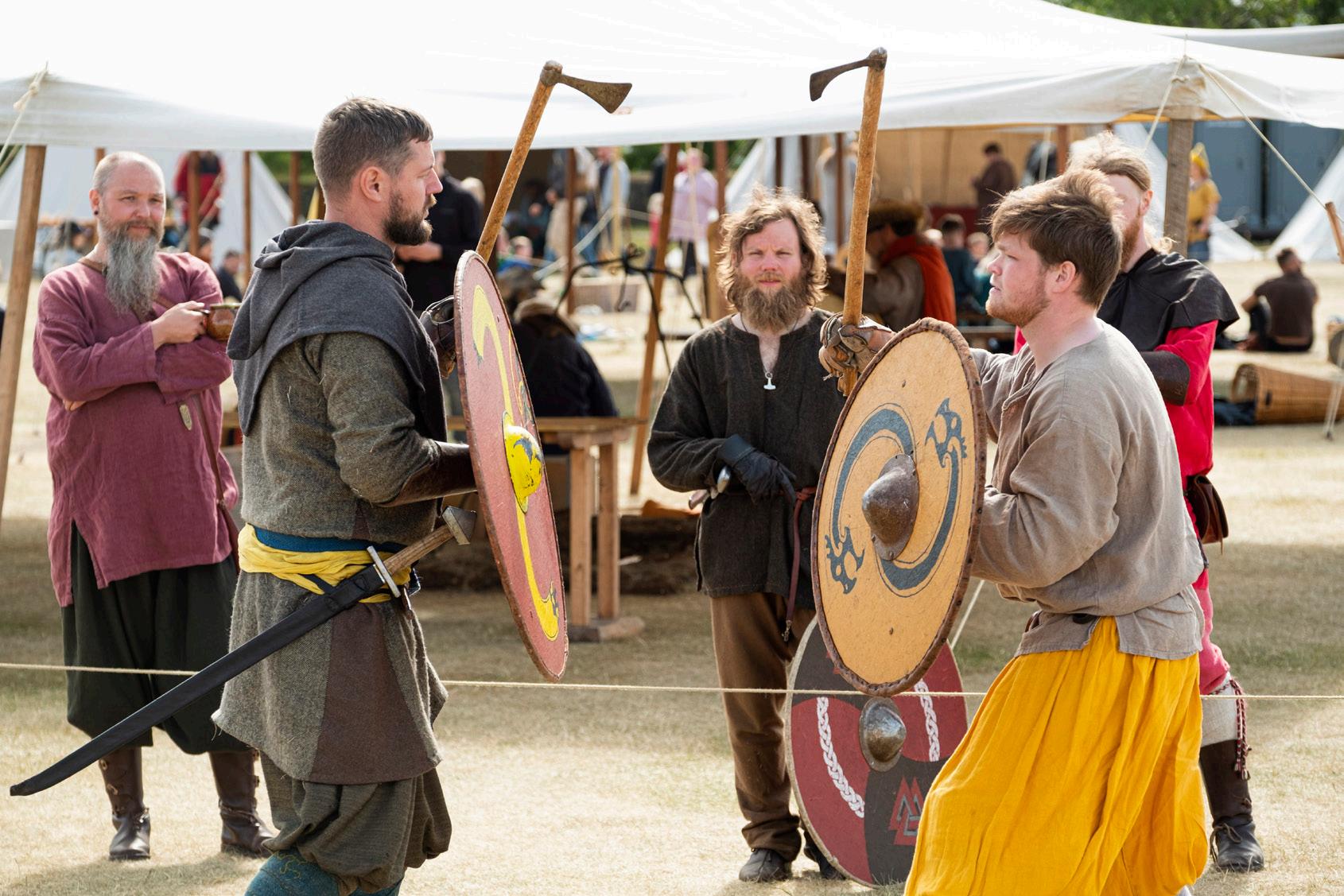
First Sunday in June - First Sunday in June - Every fishing town in Iceland celebrates Fishermen’s day, and Hafnarfjörður is no exception. Every boat is docked by the pier as fishermen, and their families join in the celebrations by the harbour.
June - The Viking reenactment group Rimmugýgur hosts a Viking fair, a four-day festival celebrating the ancient rites and traditions of the Viking community. The festival setting is a market day in Viking times when ships brought goods, foods, and people from far across the sea. Entrance is free.
August - Hafnarfjörður has long been associated with elves, and each summer the town hosts a festival to honour them, or as Icelanders call them, the hidden people. This family-friendly event features face-painting, storytelling, and appearances of the elf king and queen. It’s a great opportunity to let your imagination get the best of you, dress in your elven best, and enjoy the lovely Hellisgerði park at the centre of Hafnarfjörður.
June 17 - The residents of Hafnarfjörður gather in the town centre as well as other locations around town to celebrate the day with a parade, live music, street art, rides for the kids, and plenty of other events.
Weekends from November 30-December 23
- In the weeks before Christmas, Hafnarfjörður’s town centre is transformed into a winter wonderland, with Christmas music, visits from the Icelandic Yule Lads, and stalls selling everything from Christmas gifts to snacks and hot drinks.
February - Hafnarfjörður’s museums take part in the Winter Lights Festival’s Museum Night. On Museum Night, the museums stay open until late and host special Museum Night events.
February - It’s a similar concept to Museum Night but this time, it’s the swimming pools that are open late!
April - At Home music festival, or Heima, is an intimate music festival held in private homes centrally located in Hafnarfjörður. Guests stroll from house to house to enjoy live music and meet up with locals at their own homes. The event occurs on the Last Day of Winter, a benchmark date in the old Norse calendar.
April - The Bright Days festival takes place around the First Day of Summer, Iceland’s unique spring holiday, and focuses on the art and culture of the community. Events of the festival include artists in town opening up their workshops, concerts by popular Icelandic artists, children’s entertainment, and a parade in honour of the First Day of Summer.







Kópavogur is Iceland’s second largest municipality. Just a stone’s throw from the centre of Reykjavík, the town boasts a number of remarkable sights and buildings, including a modern dome-shaped church, a recital hall, a modern art museum and a natural history museum. Kópavogur is the perfect destination if you’re in the mood to get in touch with nature, and we recommend taking some time to experience the coastal ecosystem and birdlife. After a long day of exploring, visiting one of the capital area’s best swimming pools is the perfect way to relax.
On Kópavogur’s Culture Hill stands a collection of institutions dedicated to art and culture, conveniently located in a cluster of buildings at Hamraborg 4-6.
The Kópavogur Art Museum, Gerðarsafn, is a progressive museum focusing mostly on modern and contemporary art. The museum offers temporary exhibitions with works by Icelandic and international contemporary artists as well as displaying works from the museum’s collection. The exhibitions are generally inspired by the museum’s status as the only Icelandic museum built in honour of a female artist, Gerður Helgadóttir. Gerður (1928-1975) was a pioneer of three-dimensional abstract art and glass art in Iceland, and the museum collection holds over 1400 works by Gerður.
GERÐARSAFN ART MUSEUM
Hamraborg 4, Kópavogur
Tel: +354 570 0440
Open: Every day 10am-5pm www.gerdarsafn.is
Next door to the art museum is the Kópavogur Public Library. The library has an extensive selection of books and magazines, in English as well as Icelandic.
Salurinn Concert Hall was the first concert hall in Iceland to be specifically designed with regard to acoustics. It hosts all kinds of concerts, see www.salurinn.is for more information.
The Natural History Museum hosts exhibitions on geology and Icelandic wildlife, including the arctic fox, and numerous species of fish and birds. It also has an interesting exhibition of Japanese-style “marimo” lake balls.
Science fans will also want to check out the Borgarholt coastal preserve just a short walk away.
NATURAL HISTORY MUSEUM
Hamraborg 6A, Kópavogur
Tel: +354 570 0430
Open: Mon-Thu 9am-6pm, Fri-Sat 11am-5pm www.natkop.is

are several different packages to choose from, including a seven-step ritual that takes you through a sauna, steam room, cold fog, and geothermal baths for a guaranteed relaxing experience. While you are there, get a refreshing drink at the bar and a snack at the Sky Cafe. The Sky Lagoon’s eco-friendly architecture, commitment to sustainability, and holistic take on the spa experience make it a must-see stop.
Vesturvör 44-48, Kópavogur
Tel: +354 527 6800
Open: Oct 1-Jun 16 Mon 11am-10pm, Tue-Thu 12pm-10pm, Fri-Sun 10am-10pm | Jun 17-Aug 14 10am-11pm | Aug 15-Sep 30 Sun-Fri 11am11pm, Sat 10am-11pm skylagoon.com
The Kópavogur swimming pool is well worth a visit. It’s a great place for young families, with an outdoor swimming pool, a smaller indoor pool, a toddler pool, several hot tubs and a sauna. There is also a gym on the grounds.
Borgarholtsbraut 17
Tel: +354 570 0470 | sund.kopavogur.is
Open: May–Sep | Mon-Fri 6:30am-10pm, SatSun 8am-8pm Oct–Apr | Mon-Fri 6:30am10pm, Sat-Sun 8am-6pm
10pm, Sat-Sun 8am-6pm
In addition to the great facilities Kópavogur has to offer, the town is also rich in green areas, walking paths and bicycle paths. Whether you feel like having a day out in nature, taking in some art and culture, going swimming, shopping, or hitting the gym, Kópavogur is the perfect destination.
The Hamraborg area is serviced by buses no 1, 2, and 4. Check out www.bus.is or get the mobile Strætó Klapp app for more information.
For more information, check out www.kopavogur.is/en


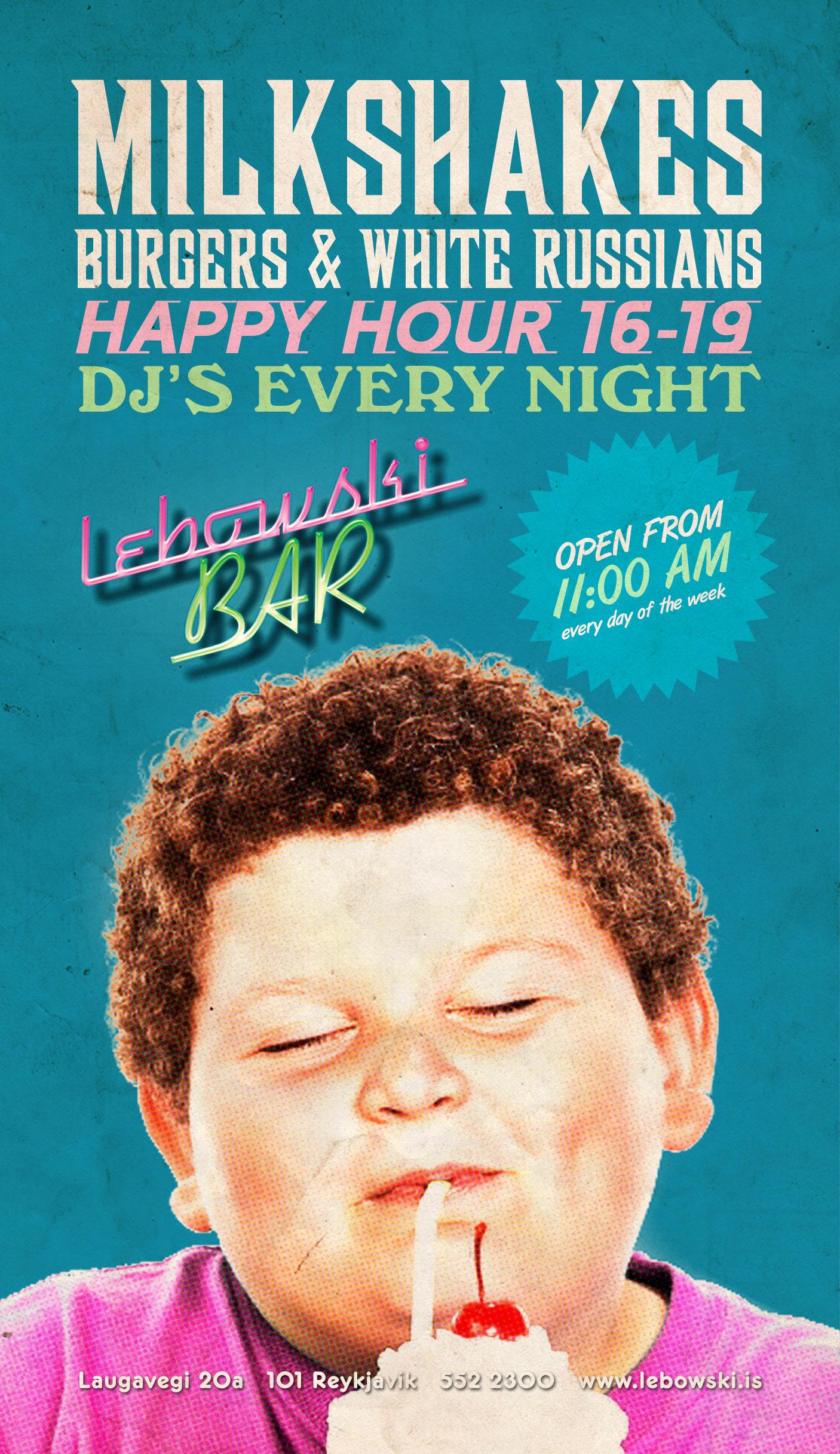
Seltjarnarnes is a small suburb situated on the tip of the small peninsula Reykjavík is also located on, with remarkable views of the North Atlantic.
Since much of the municipality is located within a beautiful nature reserve, many locals make use of its excellent recreational areas and the extensive walking and cycling paths encircling the entire peninsula. Its unobstructed views of the setting sun and the impressive Snæfellsjökull glacier make it a romantic destination and magnet for travelers and photographers alike. During winter, the areas around the coastline are perfect for viewing the magnificent northern lights!
The best-known landmark in the area is the old lighthouse on Grótta, with stunning sea views and a wealth of birdlife. Note that during the nesting season (May 1-July 1), Grótta is closed.

A permanent art installation, Kvika by Ólöf Nordal, made of dolomite stone with a round foot bath carved into the centre, is located on the northern side of the peninsula next to the shark-curing shed. People visiting are thoroughly encouraged to bring a towel and make good use of it by taking a relaxing foot bath out in the open sea air!
Garðabær is a lively town with diverse landscapes, stretching from the beautiful Heiðmörk Nature Reserve to the pleasant Álftanes peninsula. Many hiking trails can be found on the town’s outskirts.
The town has a rich historical background, which can be explored in detail at the Hofsstaðir Archaeological Park, where remains of a large farm from the age of settlement are on display. The site dates to the end of the 9th century when Vikings first settled this arctic island. While visiting, you can learn more via their touch screen display. Admission is free, and it’s open 24 hours a day.
In case you’d like to warm up more than just your toes, the town’s thermal pool comes highly recommended and features a lap pool, several hot tubs, a waterslide, a steam bath, and toddler pool; all supplied uniquely with geothermal seawater.
Serviced by bus no 11. seltjarnarnes.is

Iceland has a long history of art and design. Some of the creative results have been preserved in the Museum of Design & Applied Art at Garðatorg – the town centre. The museum’s objective is to collect, study, and present Icelandic design and crafts dating from the beginning of the 20th century to the present day.
Situated on a low-lying peninsula just south of the city centre, Álftanes is a small community of about 2,500 people. One of its major attractions is the swimming pool, featuring the largest waterslide in the country and Iceland’s only wave pool. If you’re a fan of the outdoors, Álftanes is also a hikers’ paradise with trails spanning 9 km around the unique shoreline. Those who are fascinated by the feathery residents of Reykjavík will also be pleased to discover that the shoreline is filled with clear ponds bustling with birds.
www.gardabaer.is

place, it may take some time to figure out how to navigate the city. Most of downtown can be covered by foot, but when you leave the centre, things get a little trickier.
Be sure to check the weather forecast regularly while in Iceland, especially if you’re driving out of the city, hiking, cycling, sailing, or otherwise exposing yourself to the elements. The weather in Iceland is famous for changing at a moment’s notice, so plan accordingly.
The conditions of the Icelandic roads may not reflect the weather forecast. Before leaving the city, make sure to check for road closures, construction, and general road conditions.
+354 902 0600 | www.vedur.is/en +354 522 1000 | www.road.is
For general safety tips when traveling through Iceland, renting a Personal Location Beacon (PLB), further weather and road conditions, and even live weather warnings on your phone, go to www.safetravel.is
Dialing: When dialing internationally, dial 00 for a line out of the country, select the appropriate country code, and then the number.
Cell phones: Cell phones work almost all over Iceland, and you can get an Icelandic prepaid (frelsi) SIM card. There are four major service providers in the country: Nova (www.nova.is), Síminn (www. siminn.is), Hringdu (www.hringdu. is) and Vodafone (www.vodafone. is). You can top up your phone through an app or online.
you can use Wi-Fi at almost any café or bar downtown for free (if you’re a customer). Many hotels and guesthouses also offer free Wi-Fi
Phonebook & online maps: The Icelandic phone book lists people by their first names and offers an interactive searchable map (www.ja.is).
Directory information: Dial 1818 or 1819 for a 24/7 information service about names, addresses, and phone numbers, or to be connected to international numbers.
The emergency number in Iceland is 112. Use it in emergencies to reach medical help, the fire department, and the police.
Doctors on duty: 1770
Dentists on duty: +354 575 0505 Police – non-emergency: Hverfisgata 113, +354 444 1000
Public institutions: Mon-Fri 10am to 3 or 4pm. General office hours: Mon-Fri 9am-5pm.
Most grocery stores in the capital area are open from 9 or 10am until 8 or 9pm; however, many stores in the countryside and smaller towns have shorter hours and close as early as 5 or 6pm. Convenience store opening hours vary, but many centrally located ones are open 24/7.
Banks: Most banks are open Mon-Fri from 10am-4pm
Shops: Opening hours vary, but are generally Mon-Thurs 10am-6pm, Fri 10am-7pm and Sat 10am-4pm. Malls usually have extended hours on Thursdays.



Use you y gg g p e airport check-in lin B k B B t enient time and check in your bags i bags will be delivered on or you.





Icelandair maintains a domestic network based in Reykjavík with destinations around the island and flights to the Faroe Islands and Greenland (some of these flights depart from Keflavík Airport). Popular destinations include Akureyri and Ísafjörður, the biggest towns in the north of Iceland and the Westfords, respectively. Alternatively, this is also where you would go to take a sightseeing flight or a helicopter tour.
Reykjavík Domestic Airport
+354 424 4000 | www.isavia.is/en/reykjavik-airport
The airport bus service is the most straightforward option for transfers between the airport and Reykjavík, taking you from the airport to the downtown BSÍ bus terminal, or, for an additional fee, straight to your hotel. You can also grab a taxi that takes you to your door, especially if you’re in a larger group. Driving time through the mossy lava fields of Reykjanes peninsula to the capital is about 50 minutes. There are no trains in Iceland.
Flybus (flugrútan)
+354 580 5400 | www.re.is/tour/flybus/
Airport Express
+354 540 1313 | www. grayline.is/airport-bus-transfer
You can get a taxi by calling a taxi company or by going to a taxi stand. During the day, taxis are stationed by many major hotels and popular attractions. At night, after the buses stop running, taxis are stationed downtown, taking people home after a night out. Taxis in Iceland accept both cash and cards. Please note: companies like Uber and Lyft do not operate in Iceland. Hreyfill-Bæjarleiðir
+354 588 5522
Bifreiðastöð Reykjavíkur
+354 561 0000
To keep Reykjavík’s centre safe and clean, big tour buses are not allowed to drive just anywhere. Therefore, if you’ve booked a day tour or airport transfer, your bus will leave from a designated pick-up point. These bright pink and blue bus stops are located in the downtown area and are easily accessible. You should find one near your accommodation in the city centre.
You can find an overview of the pick-up/ drop- off points on www.busstop.is.

The city bus is the most common form of public transportation in Reykjavík, and the instantly recognisable yellow buses should be able to take you anywhere you need to go, both within and outside the city limits. Bus maps are available at bus stations and tourist information centres. Most bus stops also include a route map. You can go to www. bus. is or download the Strætó Klapp mobile app and get precise directions about which buses to take as well as a live map showing the exact location of every bus in the city.
Operating hours: Daily from 6:30am/7:00am until midnight, except on Sundays and most holidays, when it runs from 9:30am/10am until midnight. There is no bus service on Good Friday, Easter, Christmas, and New Year’s Day.
The night bus: The night bus system consists of four routes that operate hourly after midnight on the weekend. The buses will take passengers out of the city centre and into all the major neighbourhoods in Reykjavík, but they won’t take on passengers on their way back into the centre. The night bus runs until 3:30am. Tickets cost ISK 1.100 and can be purchased in Klapp.
Fares and tickets: A single trip costs ISK 570 at the time of writing and can be bought
from the driver (who does not give change) or through the mobile Klapp app. If you need to change buses, remember to ask for a transfer ticket or “skiptimiði.” The City Card provides free use of the bus system and is available for 24, 48, or 72 hours. Night buses cost the same amount if using the Strætó Klapp payment app.
Going out of town: The city buses also run to some of the larger towns in the countryside. For destinations, routes, and schedules, consult www.bus. is (buses in the countryside do not yet use the Klapp app). Prices and frequency of departure vary, depending on your destination. Tickets can be bought on the bus, and buses leaving the city accept cash, credit cards, and bus tickets. They also have Wi-Fi and electric sockets. Bus rides out of the city are dependent on the weather so be sure to consult the forecast, especially if you’re travelling in winter.
Hop On Hop Off: An alternative to the city bus system is the Hop On Hop Off city bus. This bright red double-decker bus is hard to miss and makes stops at some of the most popular Reykjavík sites. Hop On Hop Off is mostly known for its City Sight-Seeing tours, but the bus also makes trips around the Golden Circle. For prices and timetables, visit www.re.is/hop-on-hop-off.
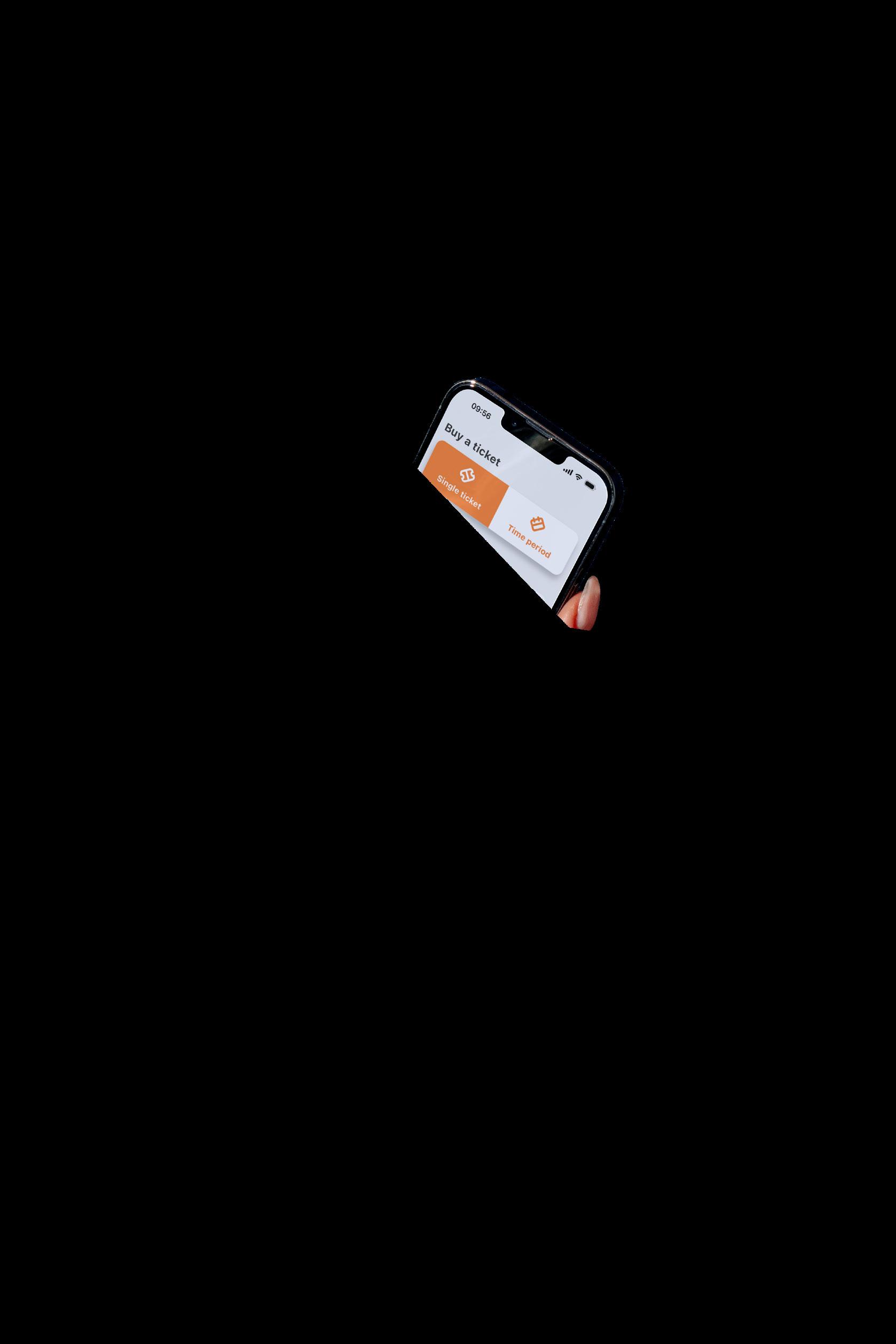






In rural areas, there aren’t necessarily fences blocking sheep from the road. They’ll probably run off the road as you approach, but be careful, especially if a mother and her lambs are on separate sides of the road.
In summer, the midnight sun will make the days seem longer, almost eliminating the need for sleep. But be sure to get enough rest because a tired driver can be more dangerous than a drunk one.
Speaking of the midnight sun, in the evening it sits low in the sky, shining straight into your eyes when driving in some directions. Now’s your chance to wear sunglasses at night.
Don’t stop in the middle of the road, that is. We know that the landscapes are gorgeous, but stopping in the middle of the road to take pictures is extremely dangerous, so make sure to find a parking spot along the side of the road before you start snapping photos. Most of the best viewpoints have parking spots for that specific purpose!
Roundabouts are proven to reduce the number of accidents on the road – but they can be
tricky to navigate! Roundabouts can be found throughout Reykjavík and the surrounding areas. Just remember: the inside lane has the right-of-way. Those driving on the outside line should watch for turn signals and allow those driving on the inside lane to exit when indicated.
As you get farther away from Reykjavík, the more likely it is that you’ll have to drive on some gravel roads. The speed limit for these roads is lower, and you need to take more care while driving. Consult your car rental company to know if your car is insured for driving on gravel roads.
Don’t drive too fast or too slow – just keep the right pace. Driving too fast is dangerous for obvious reasons but driving too slowly can be dangerous, too. Try to match your speed with the traffic, and if you want to admire the view, just stop at the frequent designated stops.


Off-road driving is completely forbidden. Not only does it damage Iceland’s fragile nature, it’s also subject to heavy fines. Plus, your rental car will not be insured for the damage you’ll cause to the car and the landscape, so always stay on the road!
Do stick to paths where possible. It’s safer for you as well as for nature.
Don’t camp outside of designated campsites. Wild camping is strictly forbidden.
Do respect signs and road closures. Mostly, authorities expect visitors to keep their wits about them when travelling. If they’ve made the effort to put up a sign, there’s a reason.
Don’t build cairns. Cairns used to be signposts, marking routes across mountains. Although mostly obsolete, false cairns are never a good idea.
Do treat Iceland with respect. Try to leave every place you visit the same as it was when you arrived.
For more information, check www.safetravel.is
If the road is closed, there’s a good reason for it – there’s danger ahead. Do not, under any circumstances, ignore road closures.
The most important thing to remember if you’re going hiking is to check the weather forecast and plan accordingly. Even during summer, the Icelandic highlands can experience some extreme weather.
Good shoes are important, especially if you’re going for longer hikes. You also need plenty of warm clothes, even during the height of summer. Think layers!
Map out your route, and plan your accommodation and food supply for longer hikes. Iceland’s interior is almost entirely uninhabited, so you’ll have to bring everything you’ll need.
Plan reasonable distances for your fitness level.
Leave your travel plans with someone who can react if something happens. Also leave your travel plans on the website www.safetravel. is and consider renting an emergency PLB (Personal Locator Beacon).
Bring a map, a compass, and/or a GPS to help you navigate.

















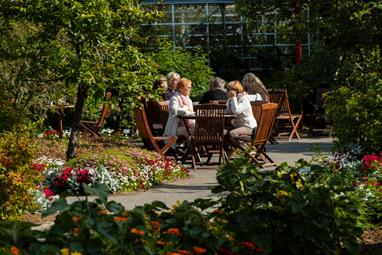




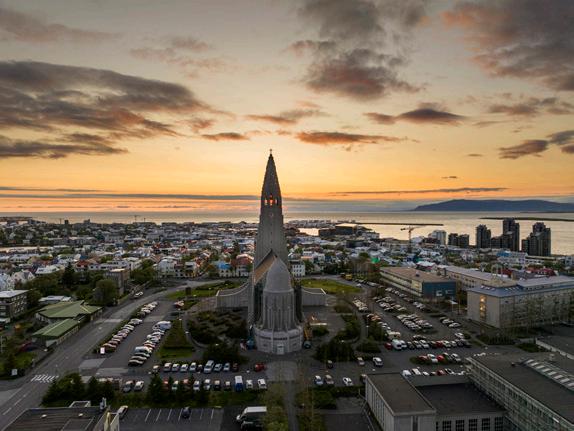

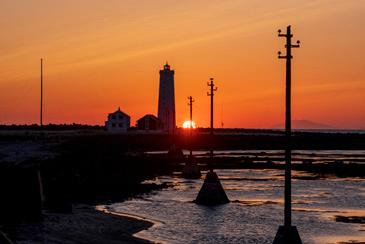












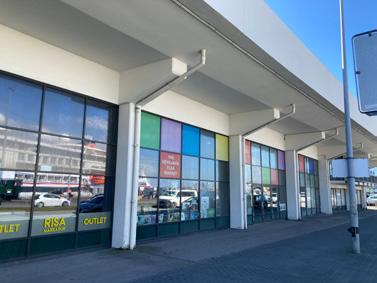














3 stores in Reykjavík
2 stores at KEF Airport
1 store in Akureyri
We’ll find a solution for all your electronic needs in Iceland Scan




